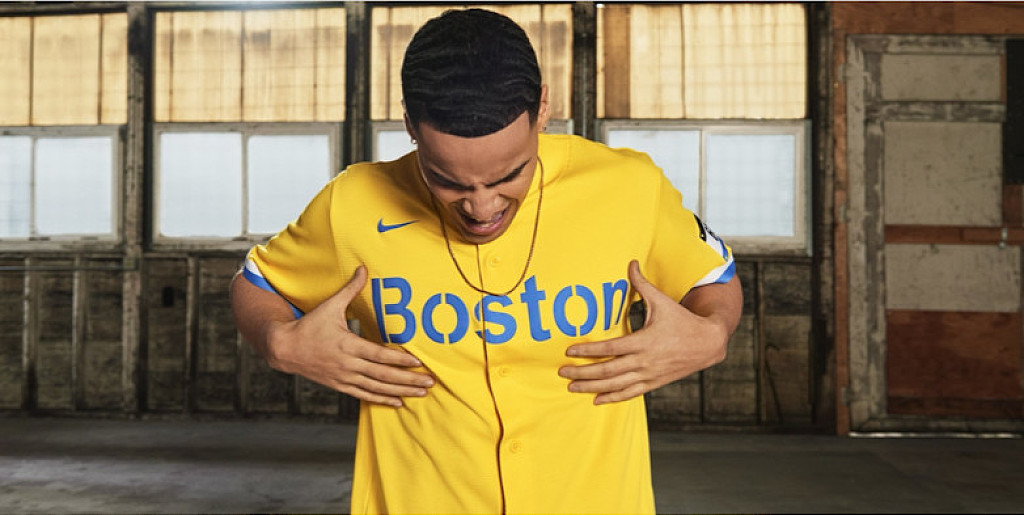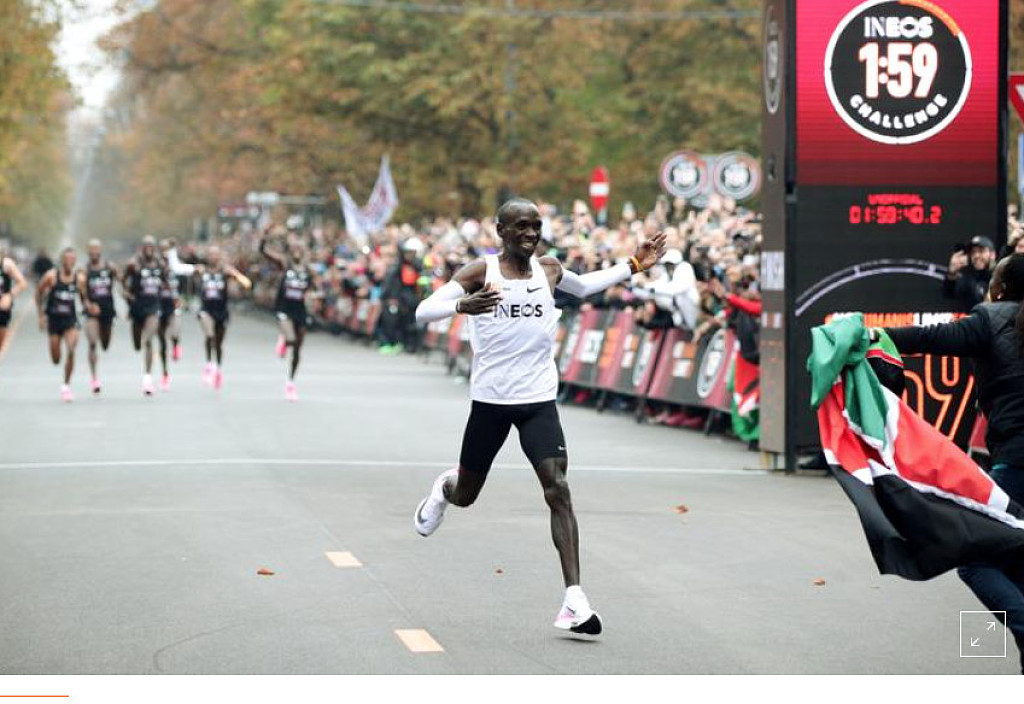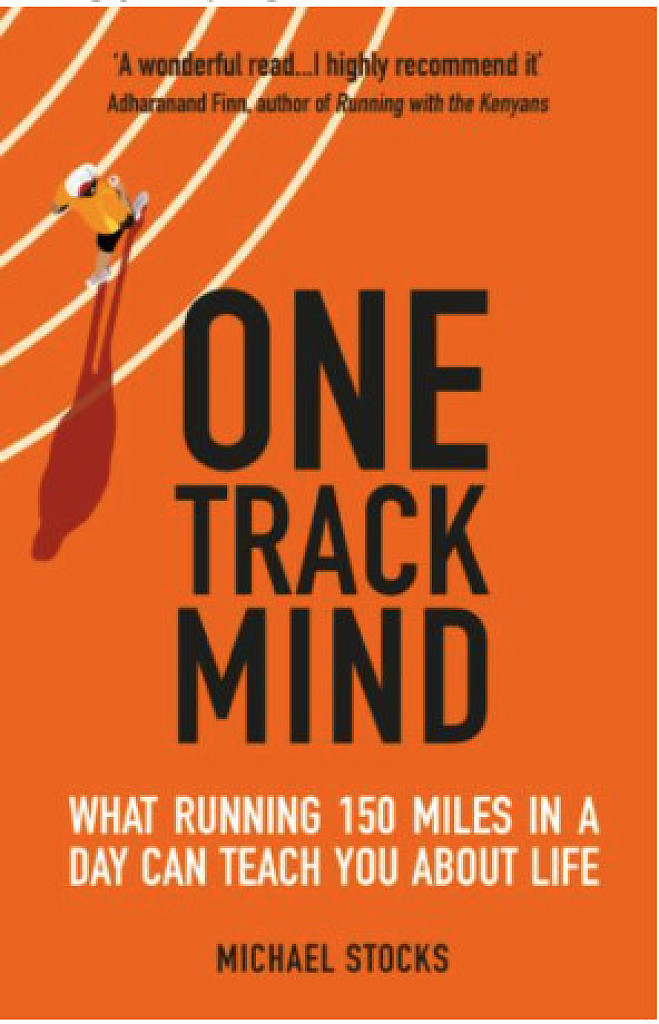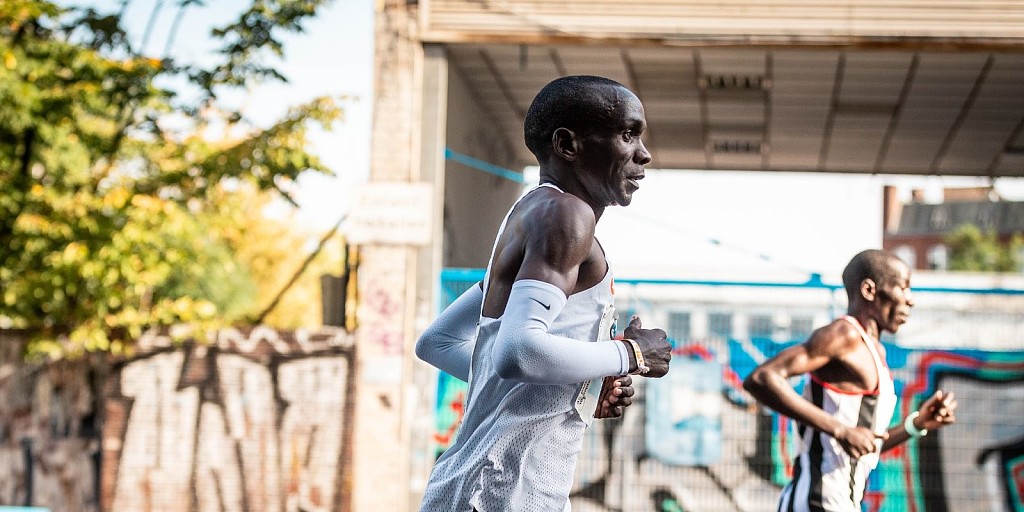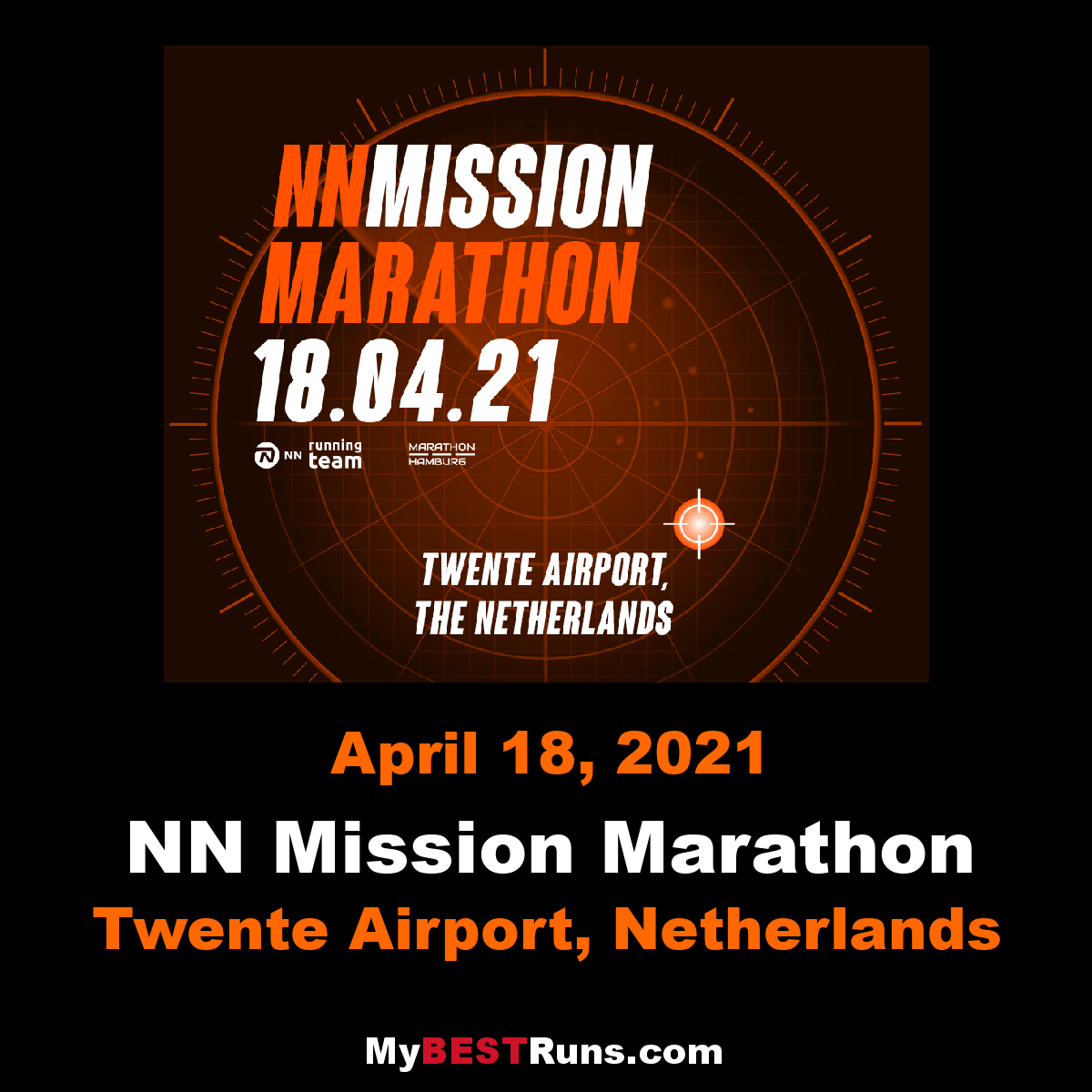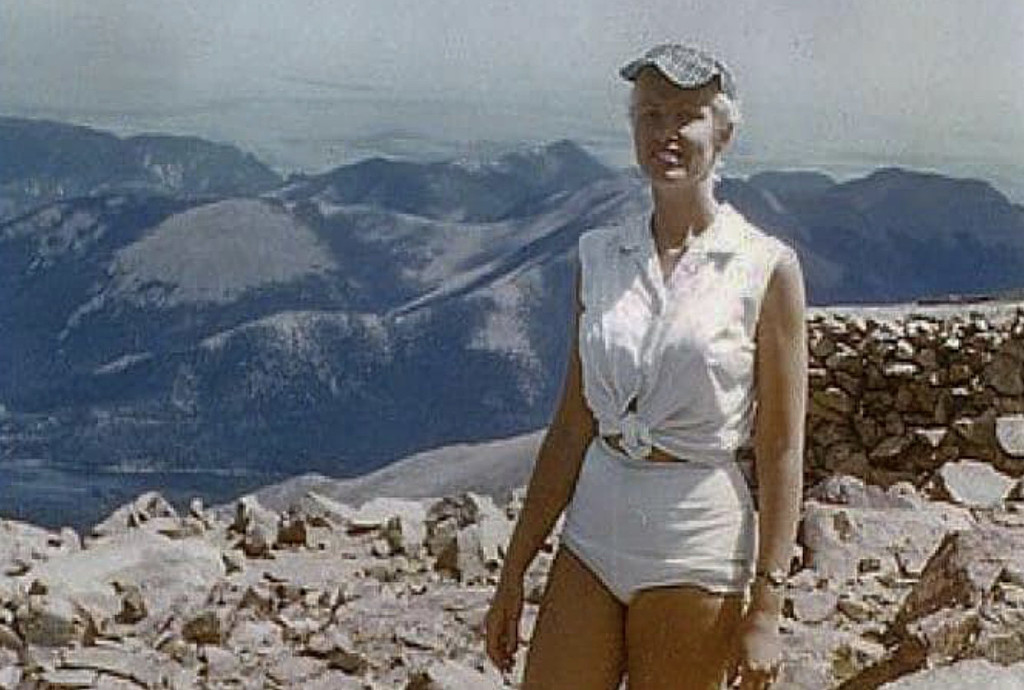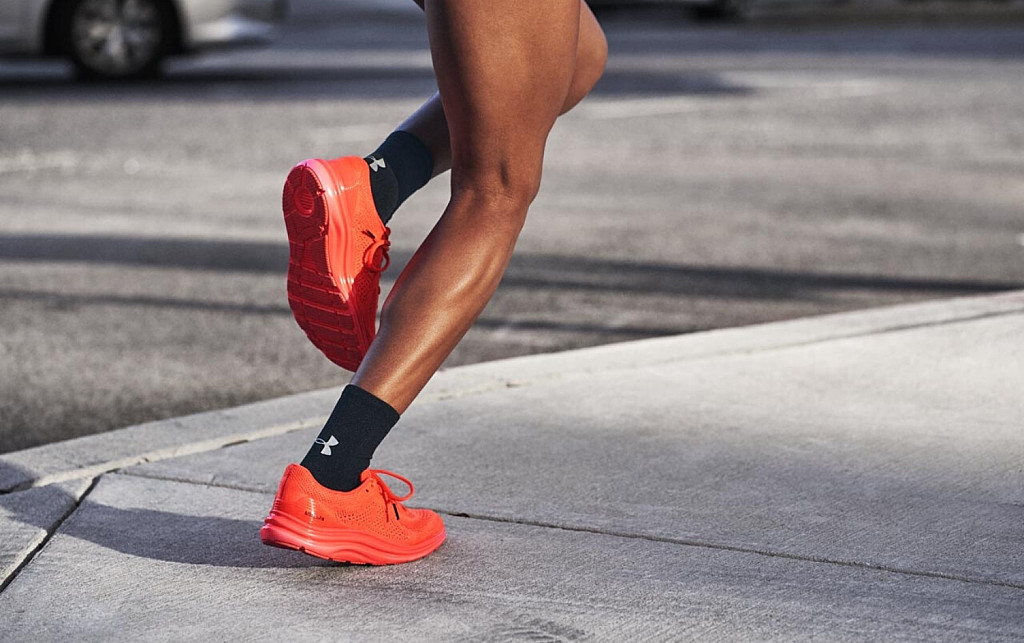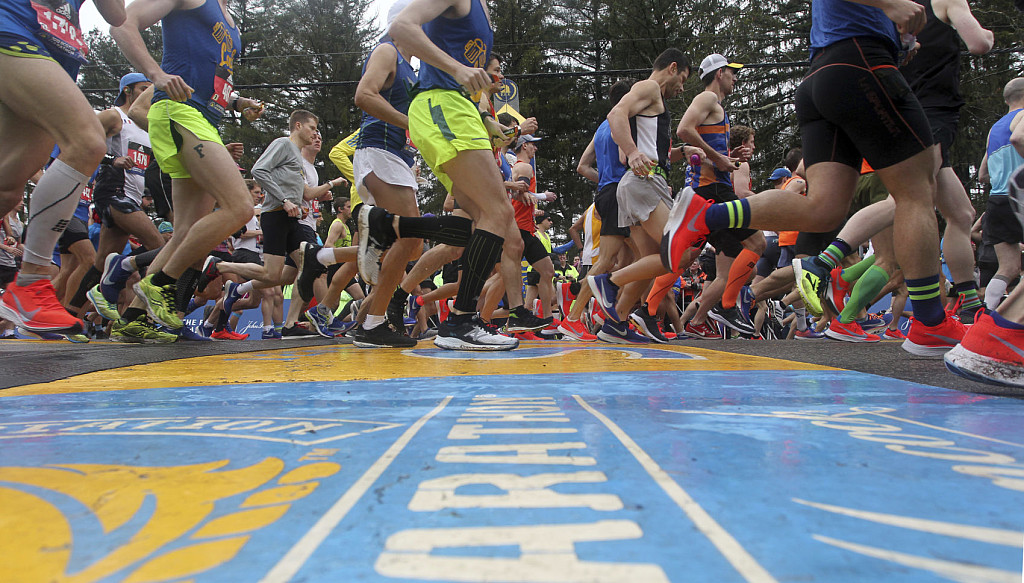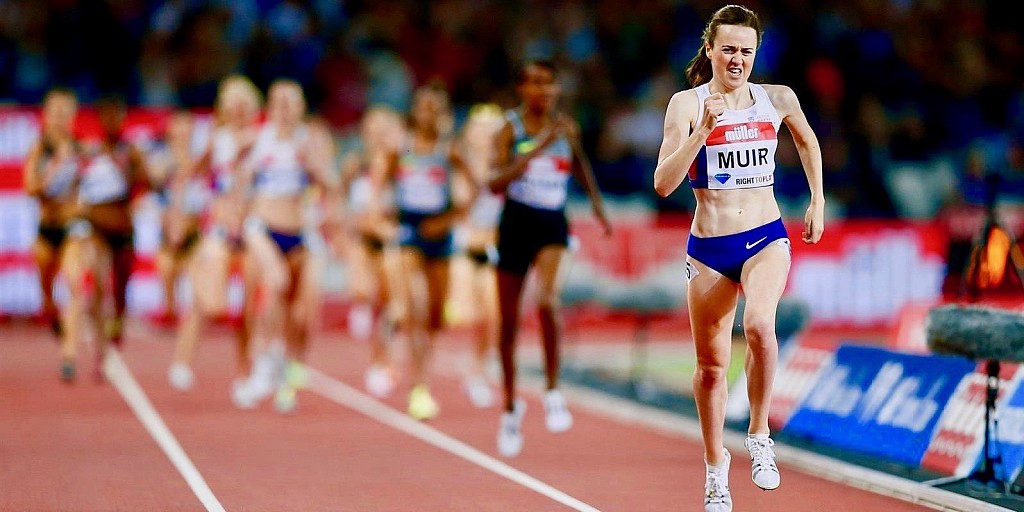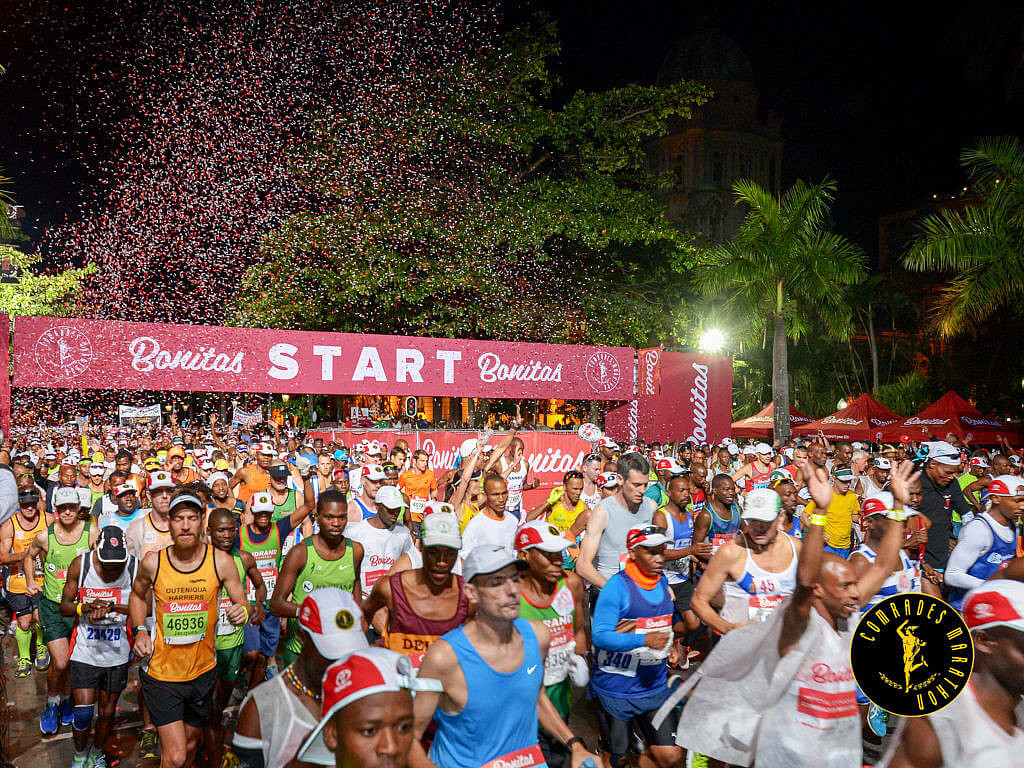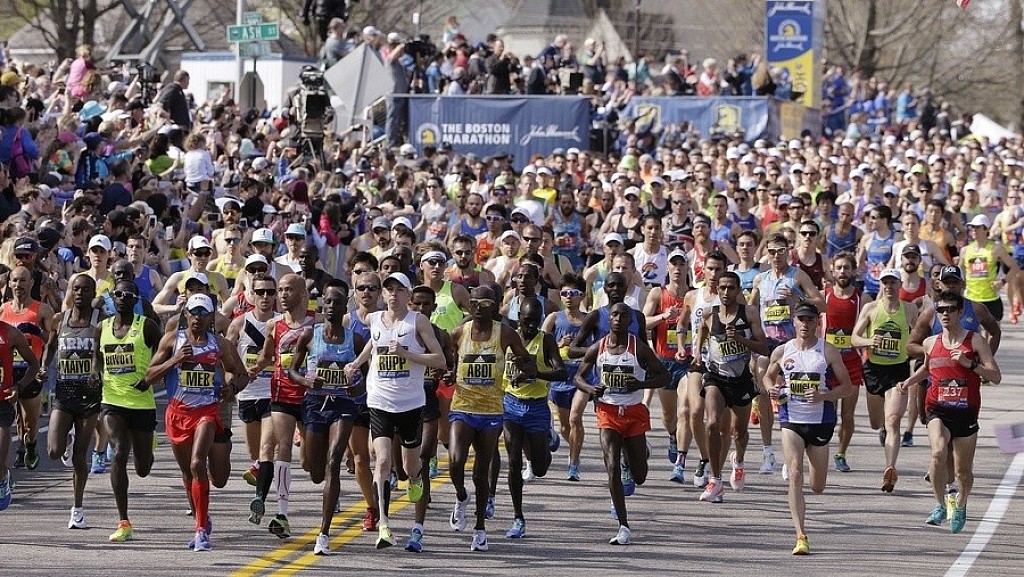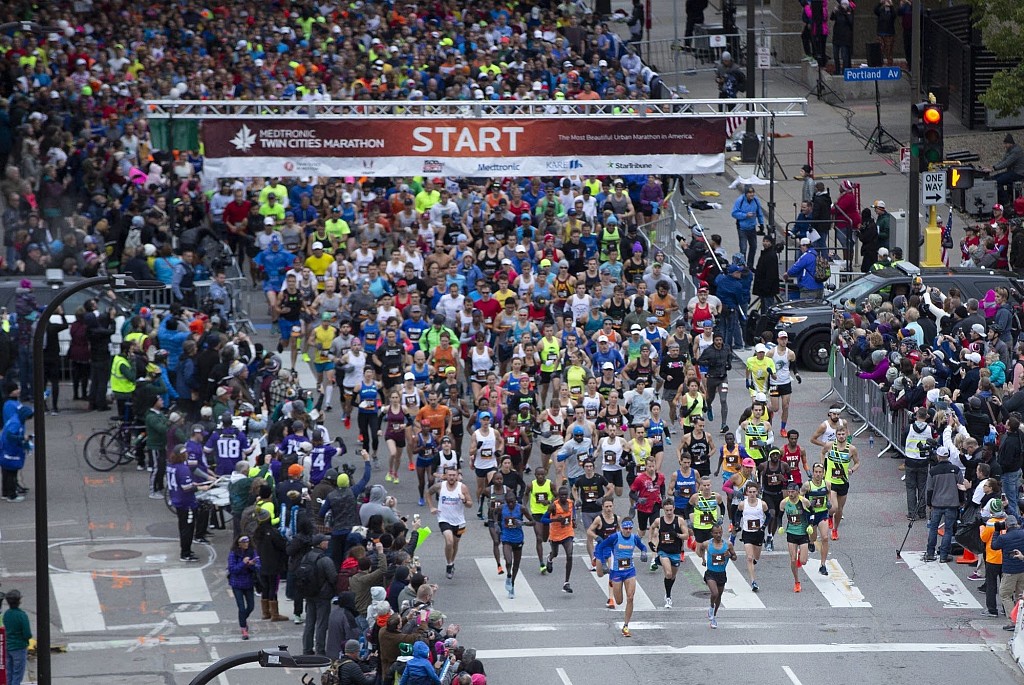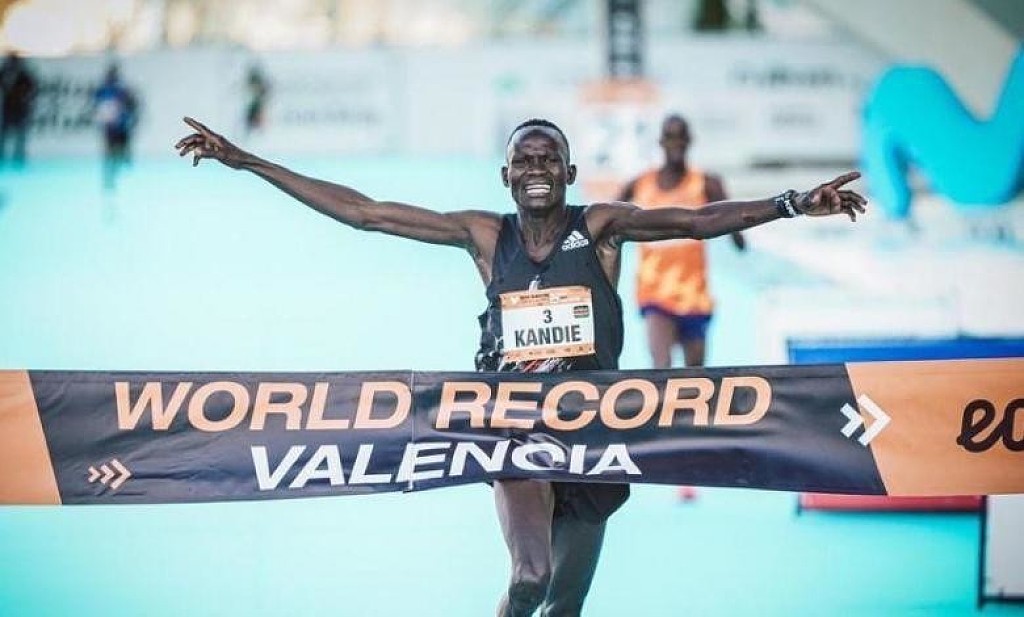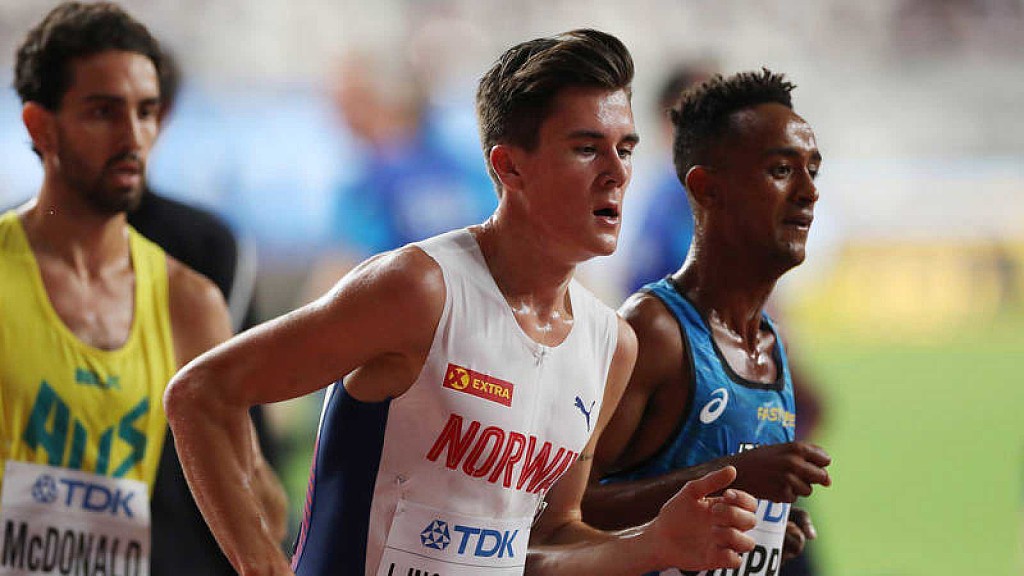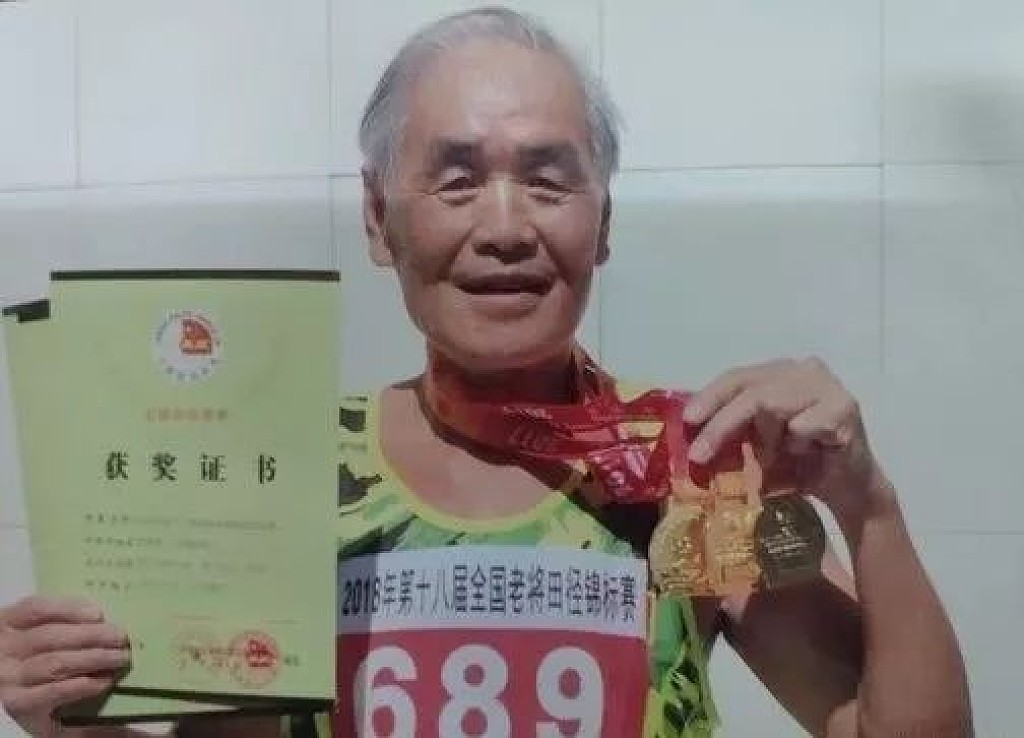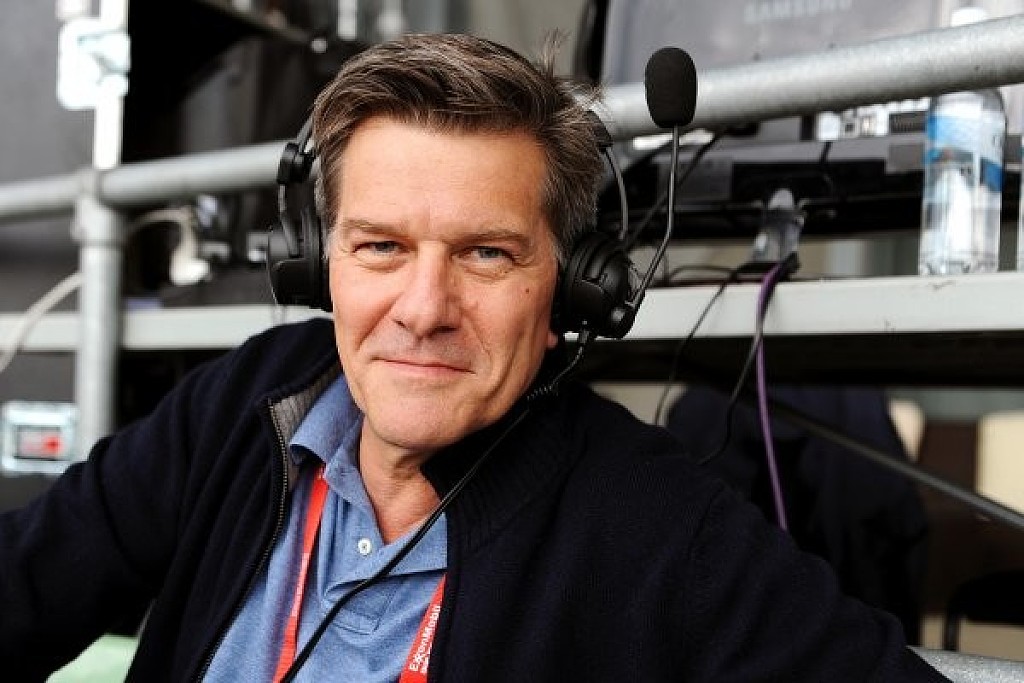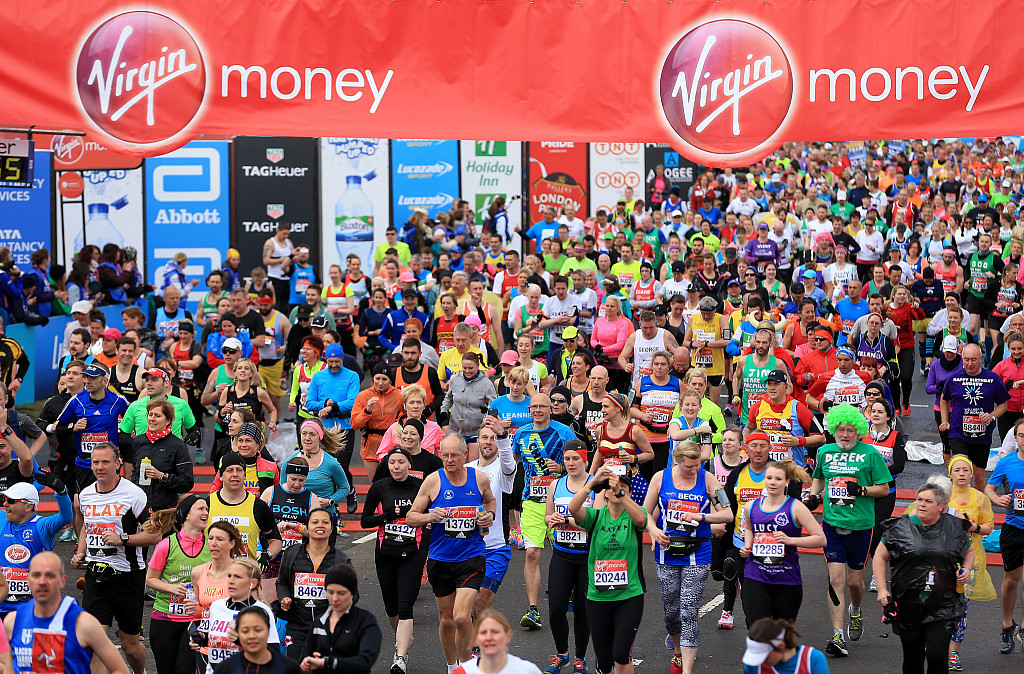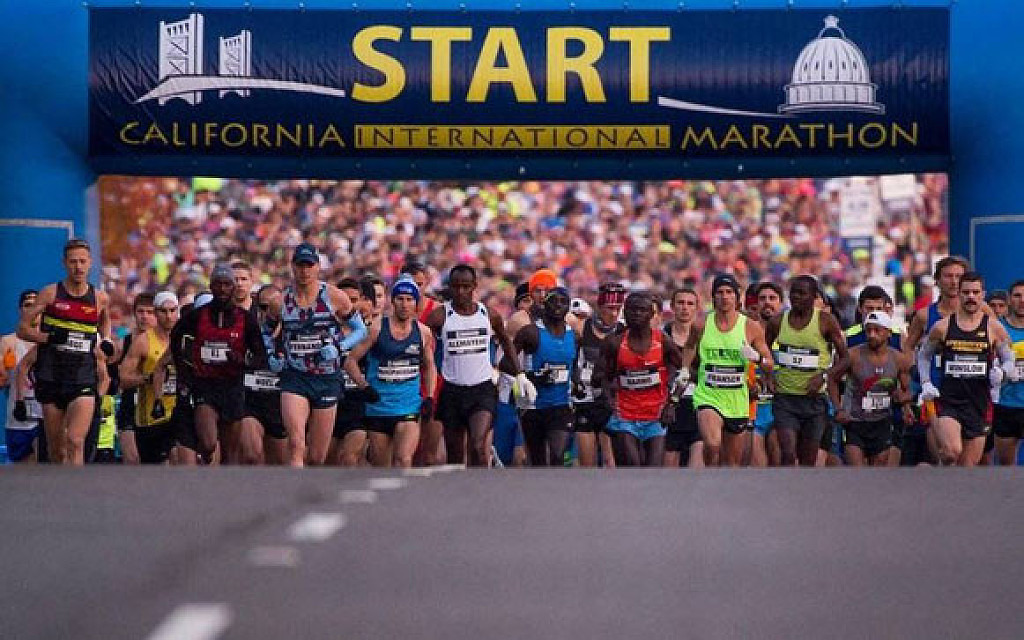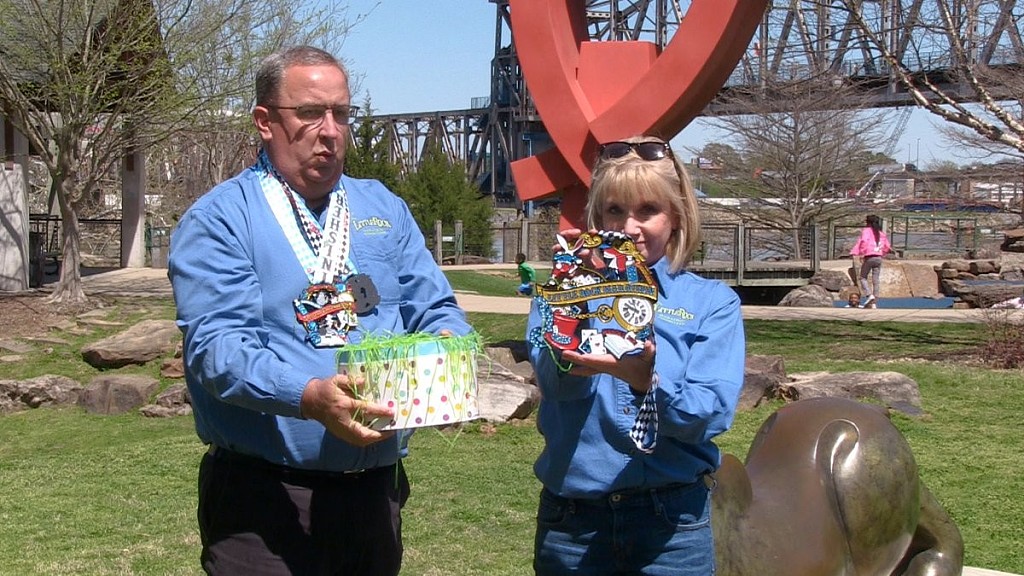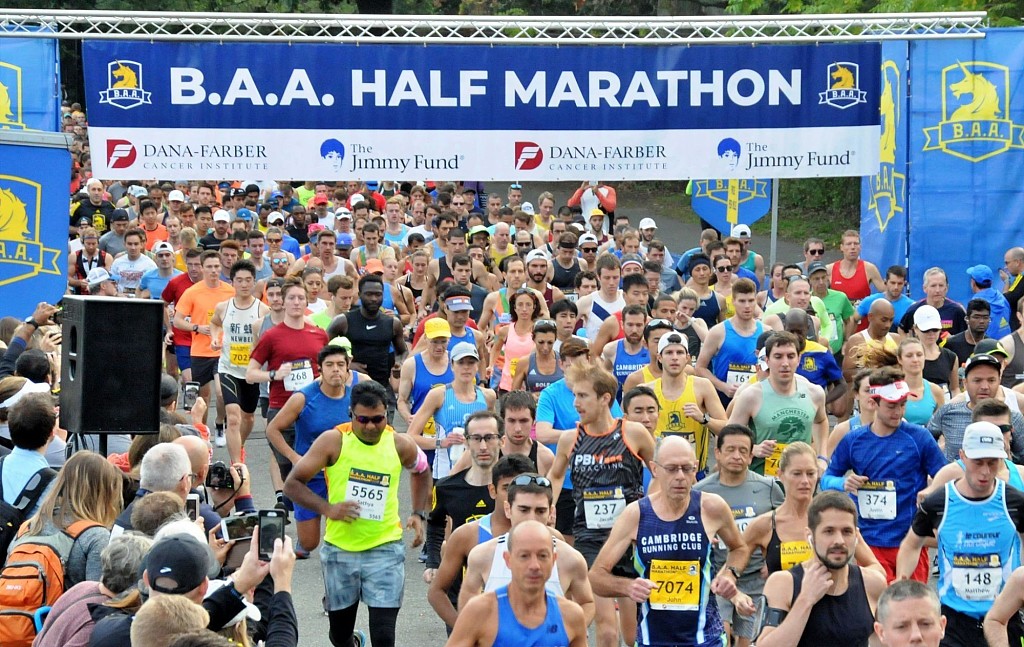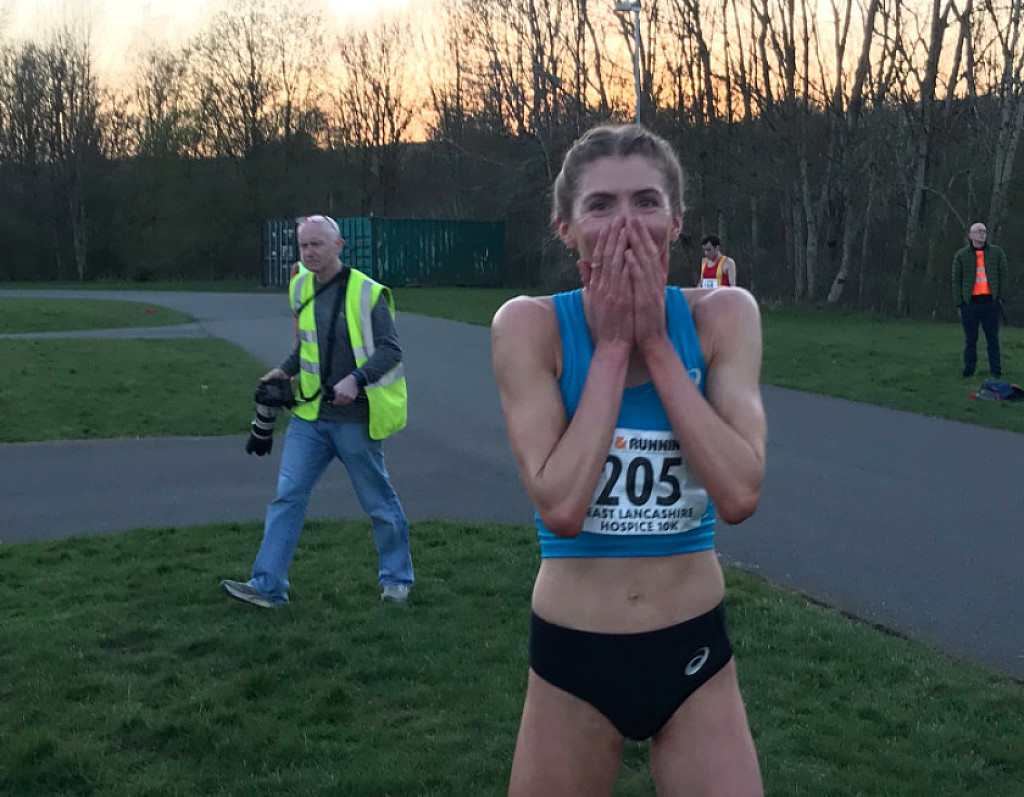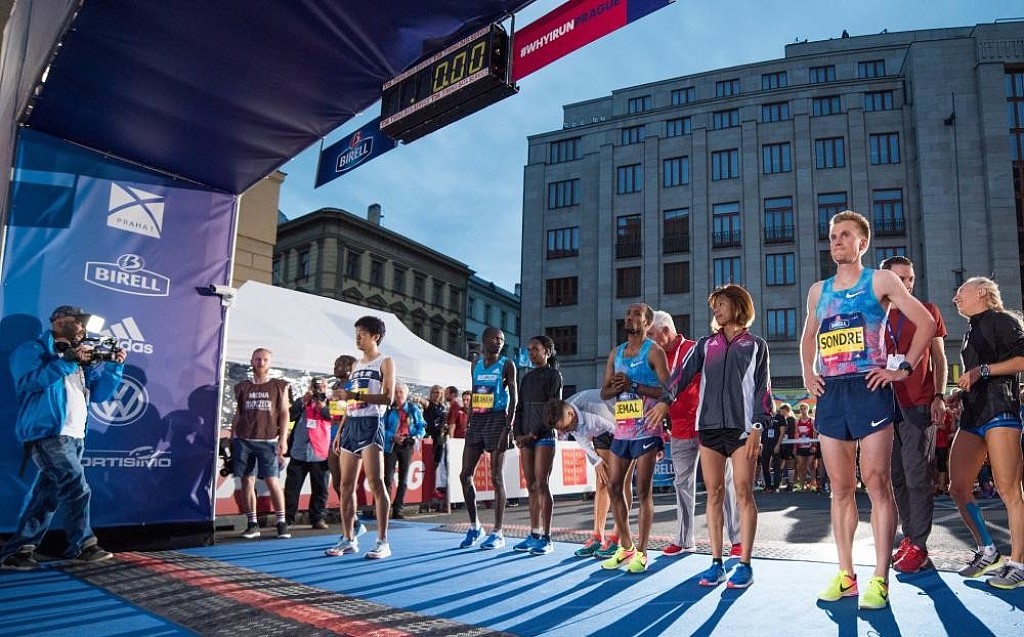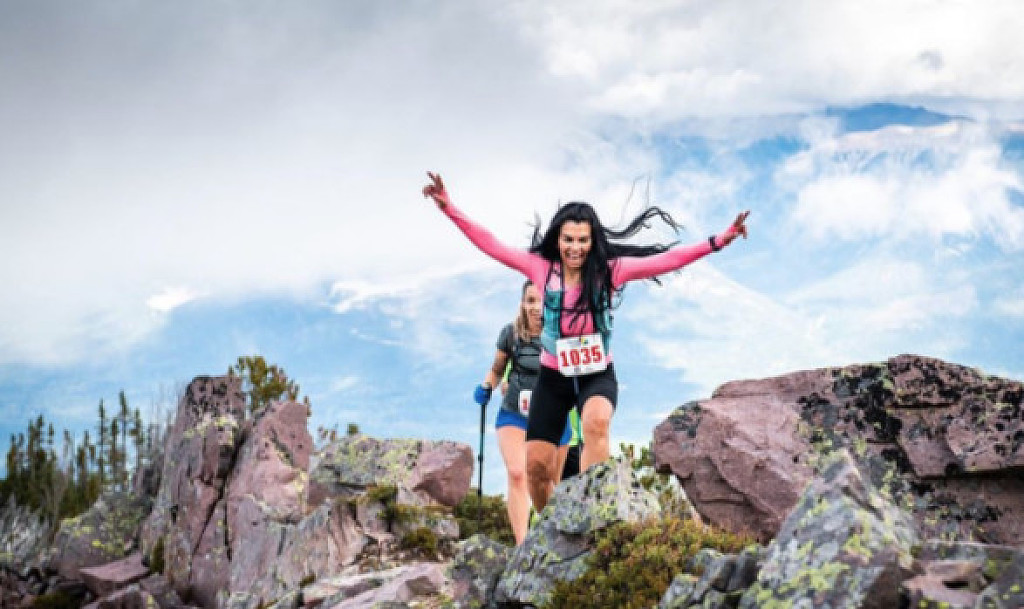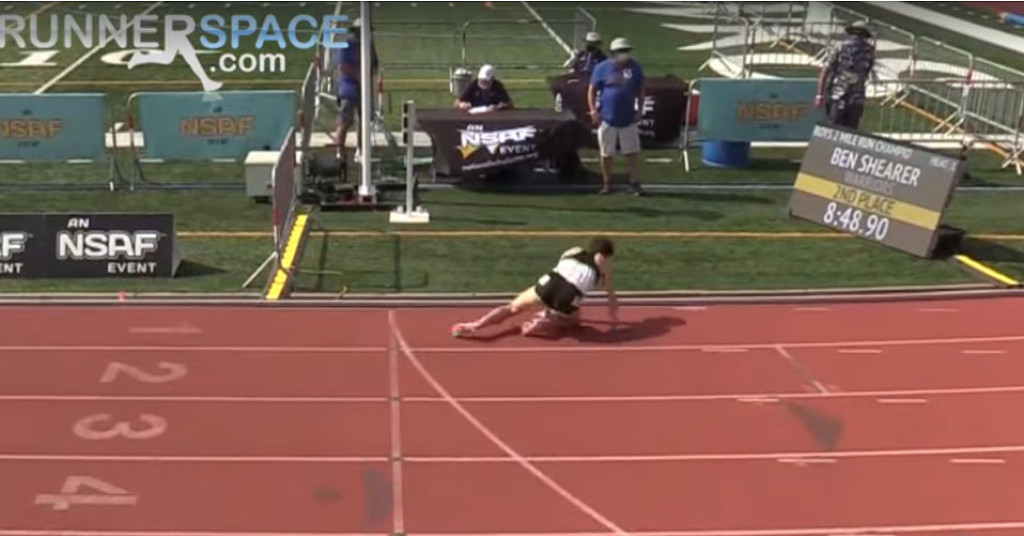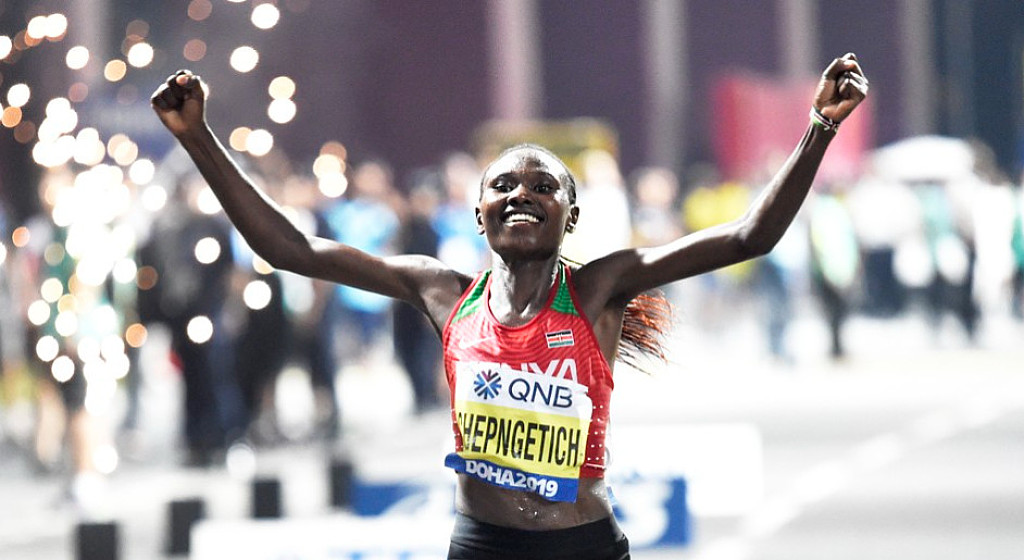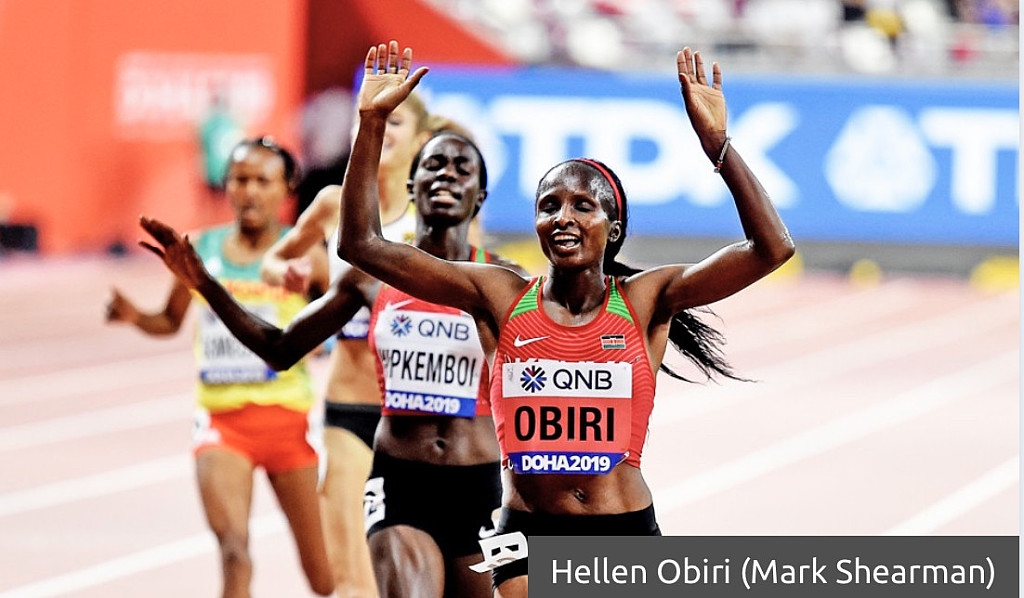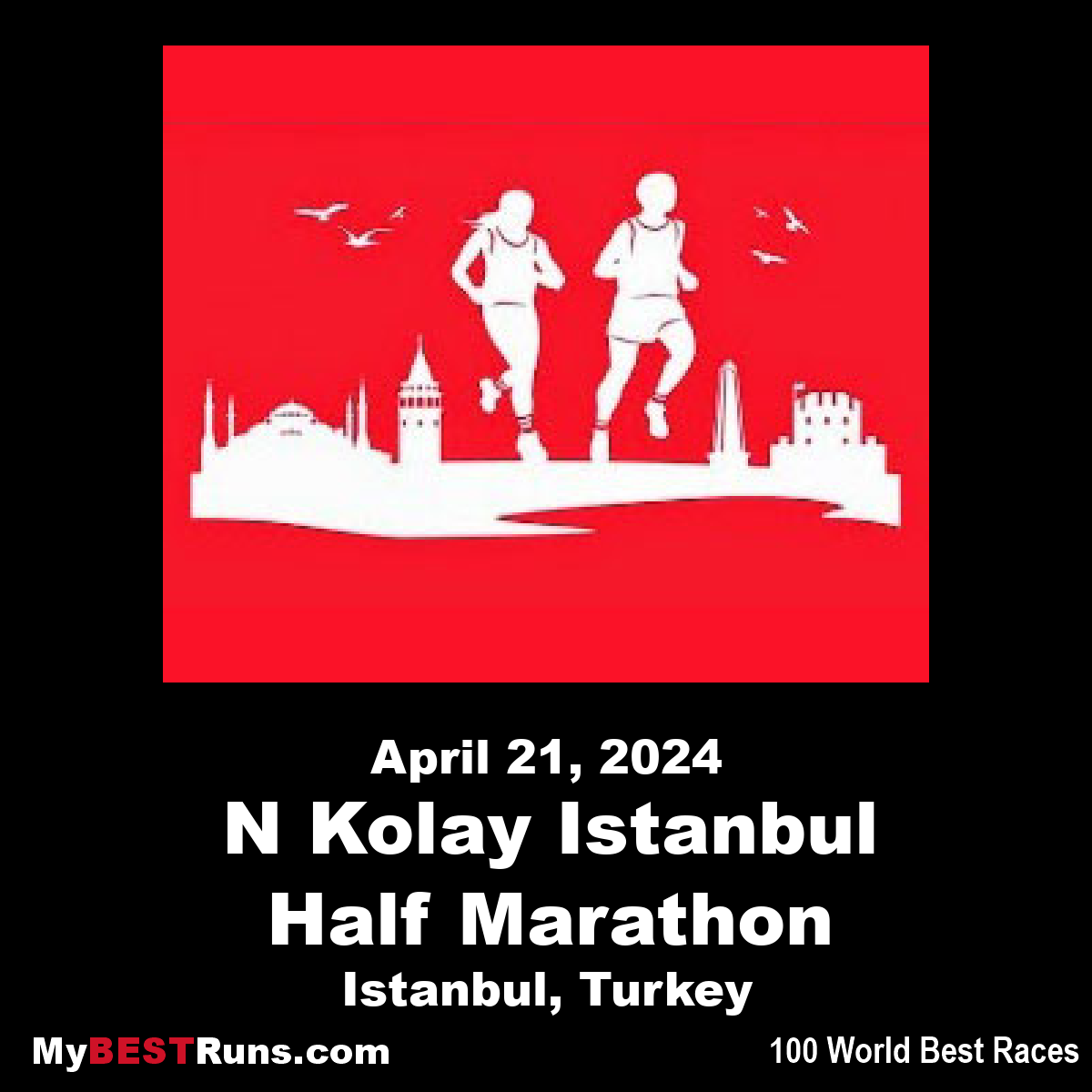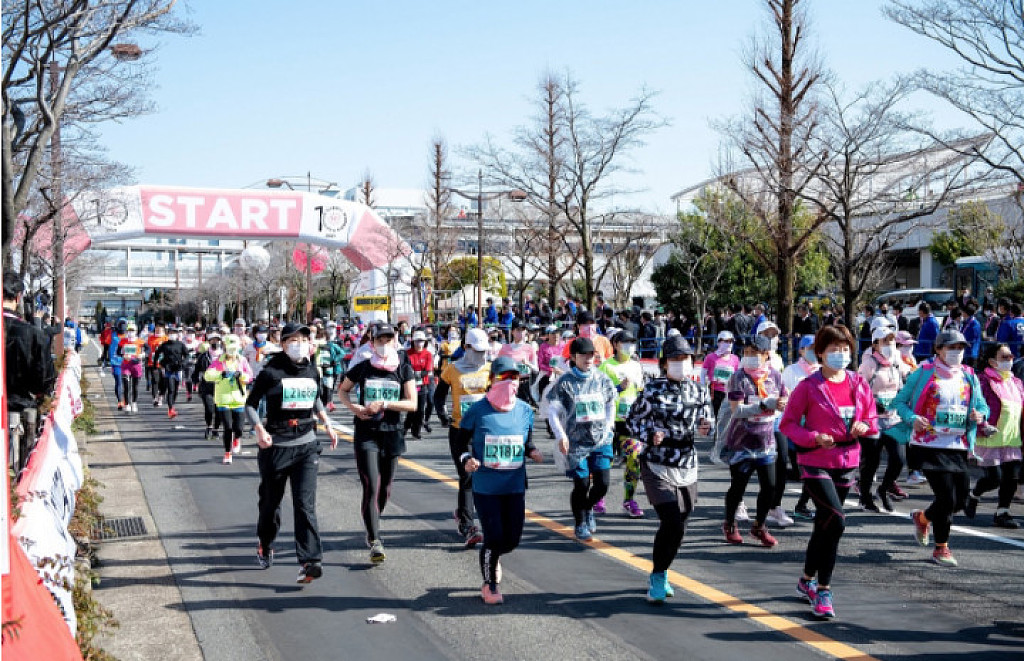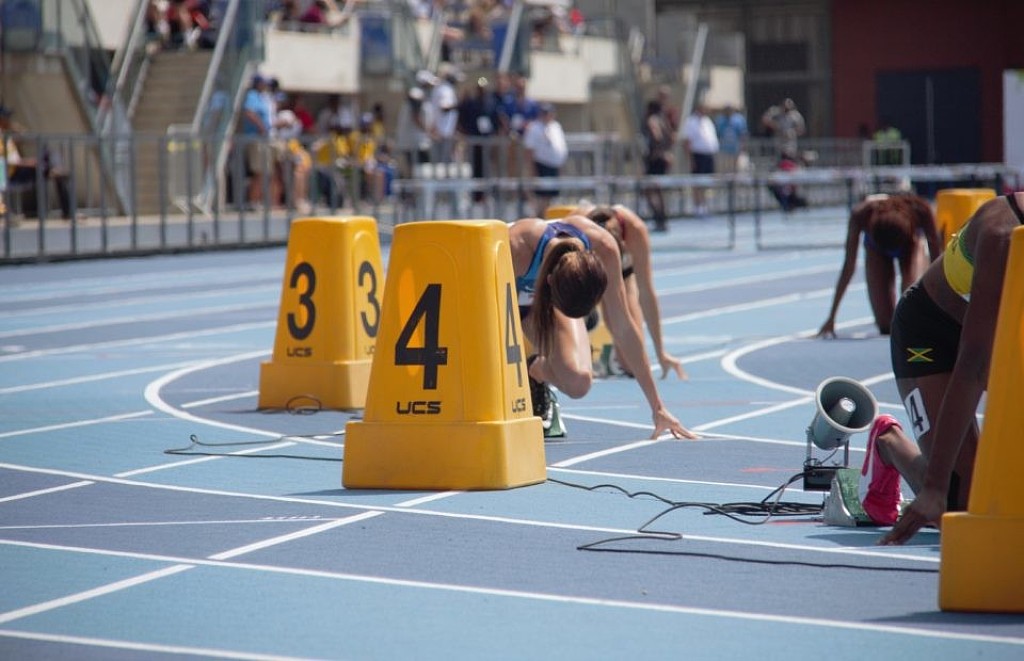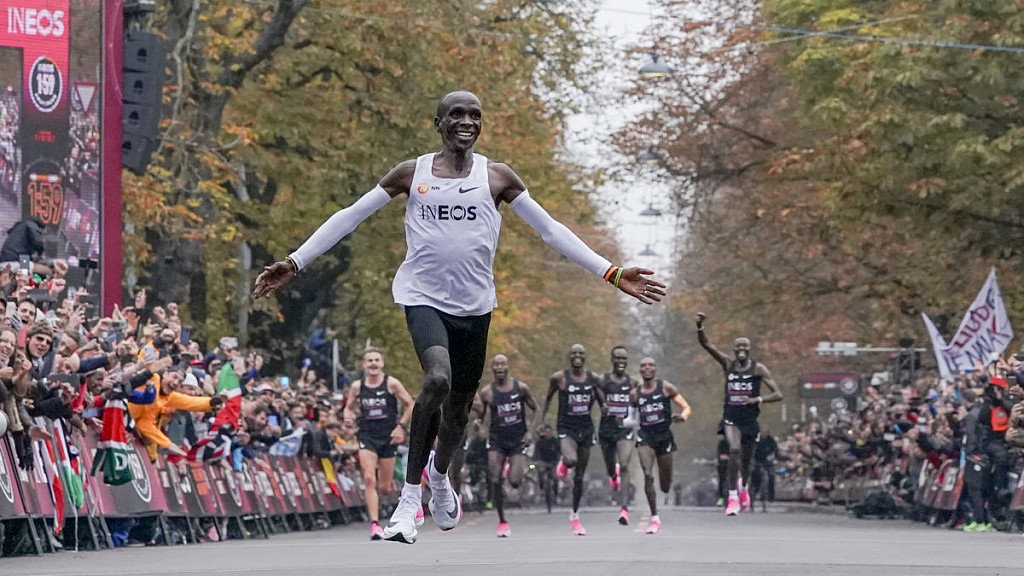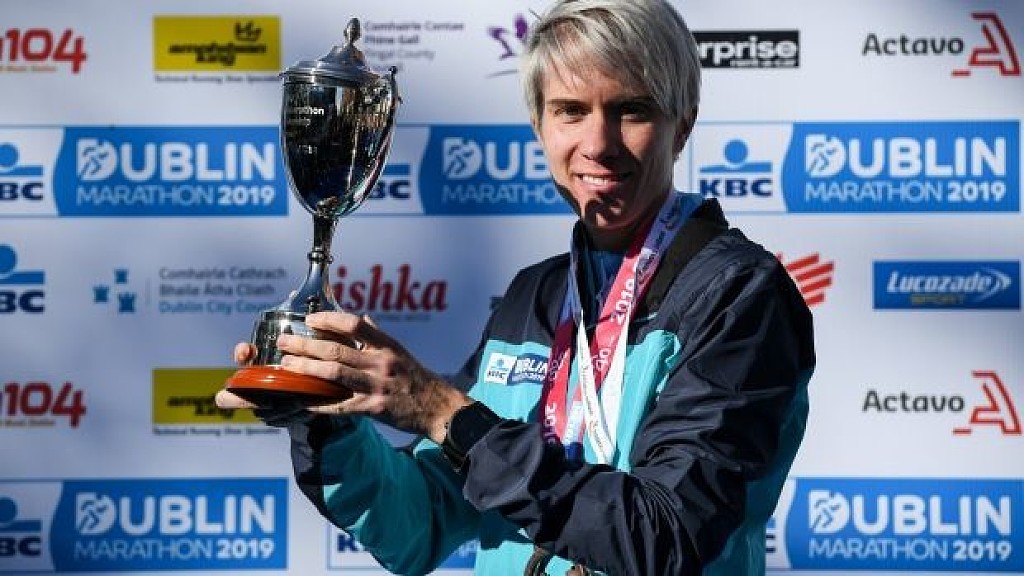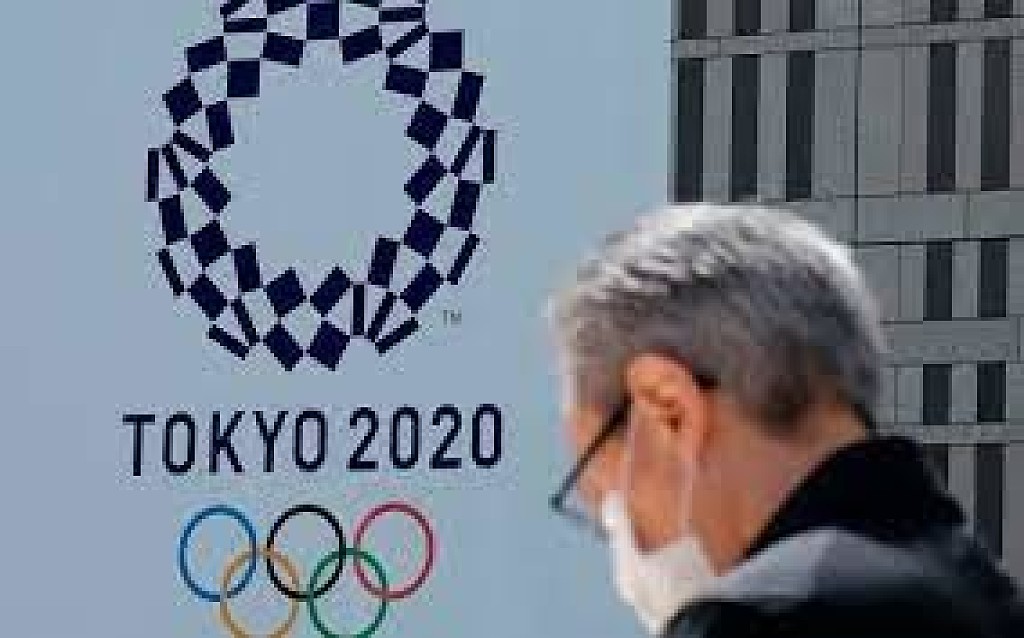Running News Daily
Running News Daily is edited by Bob Anderson in Mountain View, California USA and team in Thika Kenya, La Piedad Mexico, Bend Oregon, Chandler Arizona and Monforte da Beira Portugal. Send your news items to bob@mybestruns.com Advertising opportunities available. Over one million readers and growing. Train the Kenyan Way at KATA Running Retreat Kenya. (Kenyan Athletics Training Academy) in Thika Kenya. Opening in june 2024 KATA Running retreat Portugal. Learn more about Bob Anderson, MBR publisher and KATA director/owner, take a look at A Long Run the movie covering Bob's 50 race challenge.
Index to Daily Posts · Sign Up For Updates · Run The World Feed
How Doing Nothing May Make You A Better Runner
The last few decades have witnessed a proliferation of research uncovering the profound effects of meditation on emotional wellbeing and mental health. The ancient Eastern practice has boasted a wide swath of miraculous benefits including the ability to reduce stress, enhance empathy, improve cognition, and even slow aging. But does it offer any aid to runners looking for a mental edge?
The answer is a resounding yes. While runners grind through speed work, tempo runs, and weight sessions vigorously training their bodies to perform to maxim capacity in races, the mind doesn't receive nearly as much attention - yet victory or defeat happen in the mind first. Our brain is an organ that can be either our greatest ally or most ruthless enemy in those vulnerable moments during a race when we are faced with the choice to push victoriously through pain or succumb to suffering by slowing down. It all depends on how we train it - and research has found certain meditation techniques to be unrivaled in powerfully honing the mind.
Beyond running, if you haven't tried meditation yet, this chaotic and precarious year is a good time to start a practice.
What Exactly is Meditation?
The mind tends to produce a lot of chatter, creating stories about the future, replaying the past, worrying, judging, fantasizing, etc. Meditation seeks to calm the erratic thought currents of what is sometimes referred to as the "monkey mind" by attuning us to the present moment.
An internet search will take you down a rabbit hole of various meditation practices, but one of the most well studied, and that which most of the research in this article refer to, is mindfulness meditation. In this practice, you focus intently on one specific thing or sensation, whether it be your breath, an object, or a body part, for a set amount of time. The mind will naturally wander, the idea is to notice when it does and bring your attention back to your point of focus.
And somehow, this "do-nothing" practice boasts some pretty profound benefits for endurance athletes.
Benefits of Meditation

Enhanced Focus and Mental Resilience
Running is a form of stress. The greater the intensity of the run relative to a person's level of fitness, the more stress is generated. While a good deal of that strain is physical, some of it is mental. Prolonged strenuous training, such as a tempo run or distance race, requires enhanced attention and focus on continuing to push oneself into increasing levels of discomfort. Research has shown that practicing mindfulness meditation a few minutes each day can increase the willpower, focus, and emotional resilience necessary for sustained endurance performance by building up gray matter in areas of the brain that regulate emotions and dictate decision making.
For example, in a 2017 study on college football players, mindful meditation was found to strengthen sustained attention and wellbeing among participants in periods of high stress. The participants were divided into two groups and enrolled into either a 4-week "relaxation training" program or a "mindfulness meditation" program, each lasting 2 hours per session. The relaxation group listened to soothing music and learned to systematically and progressively relax their muscles (a common tactic within sports psychology), while the other group was taught mindfulness meditation, which involves paying close attention to breathing and the present moment. Both groups were given 12-minute daily practices to do five days per week. The study was conducted over a stressful 4-week period during the players pre-season summer athletic training when they do especially intensive drills, as well as take summer school courses. As a group, the players degraded in their attentional capacity and their emotional wellbeing, but the amount of degradation differed between the mindfulness meditation group and the relaxation group.
"The mindfulness group didn't decline, they stayed stable over time, whereas the relaxation group actually got worse" says Dr. Amishi Jha, an associate professor of psychology at the University of Miami in Florida, who was a part of the research team. "Within the mindfulness group, those that practiced more, they did their daily homework mindfulness exercises more regularly, they actually benefited more. Their wellbeing was better and their attention was better."
The study was done on football players, but it holds some pretty profound implications for athletes of other disciplines such as running. In fact, 2004 Olympic 2004 Olympic bronze medalist and American marathon record holder Deena Kastor has used meditation practices to enhance her running performance with one of the primary benefits being enhanced focus.
"The benefits I've seen from a performance side, is being able to focus solely on the rhythm of my breath under stressful races," says Kastor, who has been practicing versions of mindfulness meditation and visualization-based meditation for two decades. "Whether I'm anxious to make a move, being shoved or tripped, feeling doubt or fatigue, I can easily focus on my breath until a better thought comes in to help me through the moment."
Dr. Jha emphasizes that when elite athletes underperform, it isn't typically because their body gave out, but rather that their mind gave up.
"What we find in most elite athletes is that their downfall is not because the body conks out, it's that the mind is fighting with them," explains Jha. "So these capacities to focus and really regulate your mood and reactivity become really key in preserving their performance."
Better Cope With Discomfort and Pain
During more intensive training periods, meditation practices can be helpful for reducing muscle soreness and pain. It may also help you push through make-or-break moments in a race or training session when you can either transcend pain or let it slow you down.
Recent findings have demonstrated that mindfulness meditation significantly reduces an individual's sensitivity to pain. A 2015 study published in the Journal of Neuroscience looked at how study participants responded to painful heat stimuli before and after attending four 20-minute meditation training sessions over a four-day period. After the meditation training, participants rated pain, on average, as 57% less unpleasant and 40% less intense.
"This study is the first to demonstrate that mindfulness meditation is mechanistically distinct and produces reductions in pain intensity and pain unpleasantness ratings above and beyond the analgesic effects seen with either placebo conditioning or sham mindfulness meditation," wrote the researchers in their paper.
Race More Intuitively
By increasing your awareness and observation, mindfulness meditation may also give you a mental edge during a race by allowing you to better read your competition and react accordingly.
"The senses meditation I practice has allowed me to take in the rich racing experience and has even allowed me to sense a competitors moves before she makes it," says Kastor, referring to a type of mindfulness meditation technique she uses that focuses on a sensation. "And the visualization has created a powerful belief that what I want to accomplish is possible. In visualizing I try to see a variety of race scenarios and succeeding in all of them. When I can see it, I can believe it, and then become it."
This relates to an area of research that Dr. Jha is interested in further exploring called "embedded practices," which involves being able to integrate mindfulness practices into a physical activity. While mindfully running does not replace the mindfulness meditation practice where you sit in silence focusing on your breath, it can supplement it.
"If you can start incorporating mindfulness practices into your running, then you're kind of getting more bang for your buck," says Dr. Jha. "You're both training your body and you're training your mind. And frankly, because you'll want to use your mindfulness practice during the competition itself, it's really good to start practicing that while you're actually running."
Treat Anxiety and Lower Cortisol
Excessive stress and elevated cortisol levels associated with anxiety can be detrimental to recovery and performance resulting in unpleasant consequences like fatigue, insomnia, hormonal disruptions, mental fog, vulnerability to infection, and increased risk of injury. If you are someone who struggles with anxious thoughts or racing anxiety, meditation can help you regulate your emotions to calm yourself down in moments that trigger stress.
Kastor says that the most unexpected benefit she experienced through her meditation practice was being able to have complete control to calm herself in moments of stress such as traffic, a cancer diagnosis, grief, and fatigue. By strengthening a person's cognitive ability to regulate his or her emotional response, mindfulness meditation has long been recognized as an effective antidote for anxiety. Studies using brain imaging have found that meditation provides relief to anxiety by activating the anterior cingulate cortex, ventromedial prefrontal cortex, and anterior insula - areas of the brain that are involved with executive function and governing worrying. Other studies have shown that mindfulness meditation reduces stress by lowering cortisol levels in the blood.
By activating this relaxation response, meditation has been shown to reduce inflammation and facilitate higher quality sleep making it a promising powerful tool for speeding up recovery in athletes.
How to Start Meditating
If you're interested in beginning your own practice, Dr. Jha lays out a practical template for beginning your own mindfulness meditation.
"A very common foundation of mindfulness meditation practice involves sitting comfortably, paying attention in a quiet place for a dedicated period of time, and then the instruction is to pay attention to, for example, breath-related sensations," explains Dr. Jha. "It can be any kind of anchoring object you want. And your job is to keep your attention focused on that. And then when your mind wanders away, as it will, you just bring it back."
One of the techniques Kastor practices is breath-awareness meditation in which she says she finds 5-10 minutes to be calming. "If I have time, I love to get to a place where my breathing focus dissolves and I can be clear of any and all thoughts," she says, estimating the meditation to last 10-30 minutes. Other times, she closes her eyes and focuses on the sounds, smells, tastes, and feel of her surroundings, typically in nature. For her visualization meditation, Kastor imagines a successful event, such as a race or a presentation. "By visualizing, allowing your mind's eye to see something happening, your body gets to work neurologically to see it to fruition," she explains.
Kastor suggests that anyone who wants to get into the habit of meditating practice at the same time and place every day. Typically, whenever fits best into your schedule whether it's right away in the morning or in the afternoon before picking up the kids from school. (Though, you should try to avoid practicing at times that you're so tired you risk falling asleep mid-meditation.) "The key is to keep at it long enough so you can feel the broad power of its benefits," Kastor notes.
So how long is long enough? Dr. Jha recommends practicing for 10 to 15 minutes a day, the point at which some immediate results of meditation begin to kick in, for five days a week. Her lab has found that some of the benefits of mindful meditation, such as sustained attention, begin to show around four weeks of practicing. A 2016 meta-analysis on mindfulness meditation found that the practice begins to alter brain structure and activity after two months.
As meditation has become more mainstream, various digital programs and apps have been marketed over recent years to make meditation practices more accessible to the public. Kastor uses the Headspace app and recommends it for beginners because it includes guided meditation practices and can feel less intimidating.
"We think of the body as something that needs training to achieve excellence and wellness, and the mind, the brain, are no different," emphasizes Dr. Jha. "The challenge has been that we don't have great science as to what to offer as a training program, and mindfulness meditation happens to be a very good candidate based on the research."
(04/10/2021) ⚡AMPby Trail Runner Magazine
The Red Sox Unveil Boston Marathon-Themed Jerseys and Apparel
We want these as much as we want a Boston Marathon jacket.
The Red Sox have unveiled Boston Marathon-themed jerseys and apparel in the traditional yellow and blue color scheme to honor Patriots’ Day.
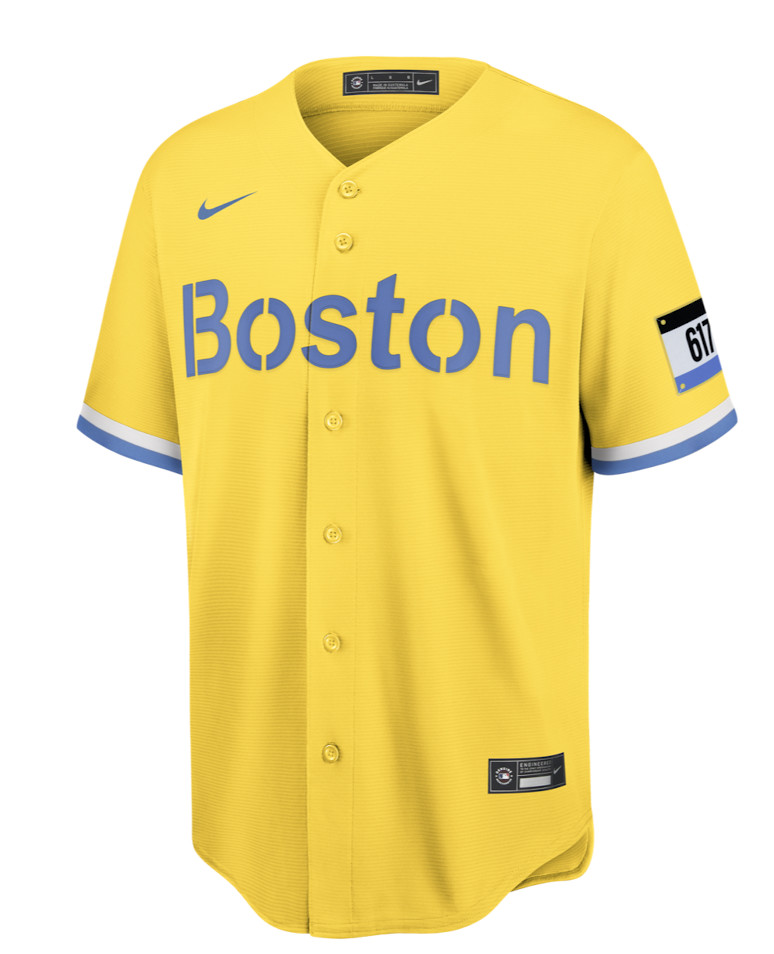
The jerseys have ‘Boston’ written across the front in a font inspired by the finish line on Boylston Street, and feature a patch that resembles a race bib with the number ‘617’—Fenway Park’s area code—on the left sleeve.
Apparel goes on sale to the public on April 6, and the jerseys will be worn by players on April 17 and 18.
If you’re a fan of baseball and running, the Boston Red Sox just dropped the apparel of your dreams.
With Patriots’ Day—the usual date of the Boston Marathon—coming up, the Red Sox unveiled marathon-themed jerseys and apparel as part of a series of alternate jerseys designed by Nike for seven MLB teams this season.
You love the Boston Marathon. So do we! We’ll keep you up to date on all the latest information with RW+ ðŸƒðŸ½â™€ï¸ðŸƒðŸ»â™‚ï¸
You love the Boston Marathon. So do we! We’ll keep you up to date on all the latest information with RW+
Taking inspiration from the marathon’s permanent finish line on Boylston Street, the jerseys use the classic yellow and blue that runners know and love. On the sleeves, you’ll find another nod to the marathon in the form of a racing bib with the number ‘617’ which is the area code for Boston and Fenway Park.
These jerseys will be worn by players on April 17 and 18, when they play the Chicago White Sox at home. On the April 19 holiday, players will wear the Boston Strong jerseys, which feature ‘Boston’ instead of ‘Red Sox’ on the front.
If a baseball jersey isn’t your style, you can grab a t-shirt, hoodie, or dugout jacket with the marathon colors. (You can find the entire collection here.)
You can order your jersey starting April 6 on Nike’s SNKRS app, nike.com, at the MLB Flagship Store in New York City, and other select retail locations. If you’re interested, you better act now before you miss out.
Six other teams will have City Connect jerseys designed by Nike this season: the Miami Marlins, Chicago Cubs, Chicago White Sox, Arizona Diamondbacks, San Francisco Giants, and Los Angeles Dodgers. We’d love to see more marathon-themed jerseys come out of these cities as well.
(04/10/2021) ⚡AMPby Runner’s World
Briton Hutchings calls for records reset for high-tech shoes era
World Athletics should introduce a new set of records for times set by athletes wearing high-tech footwear, said British Olympian Tim Hutchings, as debate continues over whether the shoes give runners an unfair advantage.
Footwear developed by Nike played a role in two of the biggest distance-running achievements of 2019, with Eliud Kipchoge’s sub-two-hour marathon in Vienna and Brigid Kosgei’s record-breaking run at the Chicago Marathon bringing the Vaporfly shoes into the spotlight.
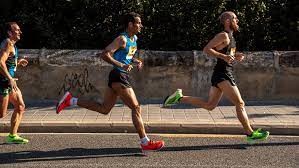
While World Athletics banned the shoes from professional sport last year, Nike has launched a new version of its Alphafly footwear that complies with new rules introduced by the governing body.
"People from many quarters are saying stop fussing about the shoes. Just move on and enjoy the racing. To which I'd respond, I've always enjoyed the racing and will continue to," Hutchings told The Times here.
“But I want to enjoy and respect times as well, not just cast aside that element. A reset would enable this. The shoes are here to stay, sadly the genie is out of the bottle.”
Kenya’s Ruth Chepngetich shaved 29 seconds off the world half marathon record on Sunday and British triathlete Beth Potter is awaiting ratification of a world record time from a low-key 5km road race a day earlier.
Both athletes wore high-tech footwear made by different manufacturers.
“Let folk race and record new era personal bests,” said Hutchings, who finished fourth in the 5,000m at the 1984 Los Angeles Olympics.
“A date needs to be identified retrospectively, then everyone would respect times in the right context. Athletes deserve that.”
(04/10/2021) ⚡AMPThe art and allure of 24-hour track racing
Author Michael Stocks gives his perspective on what it’s like to tackle the challenge of running for an entire day PLUS win a copy of his new book One-track Mind
Most us have experienced the feeling of standing on the start line of a track race, consumed by the mixture of tension, trepidation and anticipation of what lies ahead.

Not so many of us, however, will have stood on that start line knowing that the finish line is a full 24 hours away. Michael Stocks is one of those people and his new book One-track Mind: What Running 150 Miles in a Day Can Teach You About Life is a beautifully written account of everything involved in a challenge which test the limits of physical and mental endurance.
The race about which he writes is the 2018 edition of Self Transendence 24 hour, which takes place annually on the track in Tooting Bec, South London.
Rather than it being a case first past the post, when the hooter sounds after 24 hours victory goes to the person who has covered the greatest distance.
A place on the Great Britain team for the 24 hour World Championships was part of the incentive and Stocks manages to take the reader on just about every step of the incredible journey which unfolded along that 400m lap.
He will be back in action later this month at the Centurion Track 100 race in Ashford, with designs on breaking the V50 100-mile world record of 13:27:27 which is currently held by Russian Oleg Kharitonov.
So what is it that draws him to this particular strand of endurance running?
“In a way it suits my character and plays to one of my strengths which is that when I’m running I don’t really mind where I am – the act of running is the thing, if it’s a race,” says the man who has competed for both Great Britain and England.
“I do love going to beautiful places and running – and then I’m aware of my surroundings – but if I’m racing then really I don’t much mind where I am because it’s about the race and the running and the movements.
“I can honestly say that the fact that I was in the same place, running around and around wasn’t a big thing for me, though I did prepare mentally for that, which I think is really important.”
Stocks admits to being daunted ahead of the race getting underway but, as many long distance runners will attest, breaking the task at hand down into manageable chunks is as important as it is mentally helpful. 24-hour track racing is no different.
“I broke it down into half hours,” he says. “We know we need to drink every half hour, to eat every half hour and that really was my horizon. I just tried to stay in it and not think longer than half an hour.
“But then you’ve also got the change in direction every four hours, which was really important. I was also ticking off every 10k early on, so you kind of find those little goalposts, or goals and then I think the key when you when you get to them is not to think ‘okay I’ve done one hour but I’ve got 23 to go’ but rather to think ‘I’ve got one hour’ and to put that hour behind you.
“I almost had the sense of physically picking something up and placing it behind me and going ‘wow that’s great, I’ve collected that hour’.
“Yes it was daunting, but I really worked hard on staying in the present and thinking about what I’d done rather than about what was to come. It wasn’t successful all the time but on the start line I was confident that I had prepared well enough to get through it.”
One key challenge to overcome during a 24-hour race is, of course, running through the night. Stocks had never done it before and the experience was one of the most memorable and enduring points of the event.
“When I got through the night and the light came I suddenly realised how special the night had been,” he says. “I was really struggling a lot for a lot of it, and obviously you are late in the race, but there was this complete quiet and a sense of nothing outside. It creates this very unusual environment.
“I went through some of my worst stages and bad patches in the night but when I got to the end of those I remembered how the light looked brighter on the track because there was a wet sheen and you’ve got these massive spotlights, but you’ve got hardly anyone on the track because half of the runners had left by then.
“It was an almost surreal environment and I wanted to cling on to part of that quiet because it was such an unusual and special experience and I also had never run through the night.
“It would have been special in the mountains, too, but there was something about the track and the colours and the sense of quiet that just made it quite, quite special.”
Another special aspect of ultra marathon running, Stocks insists, is the community which surrounds it. From the athletes, to the support crews who literally keep their runners fed, watered and clothed, to the race organisers, the nature of the events create a unique sense of camaraderie.
“One of the things I really wanted to get across in the book is this excellent sense of community,” says the London Heathside runner. “When I left that track and the race it was almost heart wrenching because I felt there was such a sense of presence and positivity and community around the track.
“Everything from the organisers and the whole ethos of their races to the other crews who were supporting all the runners, not just their own runner.
“Paul [Maskell], who I was racing for the victory, we were just increasingly helping each other and encouraging each other and it’s really, really incredible.
“I think it’s probably the adversity that keeps you humble. There are just so many amazing people doing the sport.”
(04/10/2021) ⚡AMPby Athletics Weekly
NN Running has announced its elite field for Mission Marathon
Set to run in the Netherlands on April 18, Eliud Kipchoge will headline the race of about 60 athletes.
The fields for the NN Mission Marathon have been released, and the world finally knows who will toe the start line with Eliud Kipchoge. The races are set to be run in Enschede, the Netherlands, on April 18, and fields of 23 women and 35 men will line up to compete. Kipchoge is the clear favourite for the win, but second place in the men’s race and first place in the women’s are both anybody’s to claim, which will make for a couple of exciting and dramatic competitions.
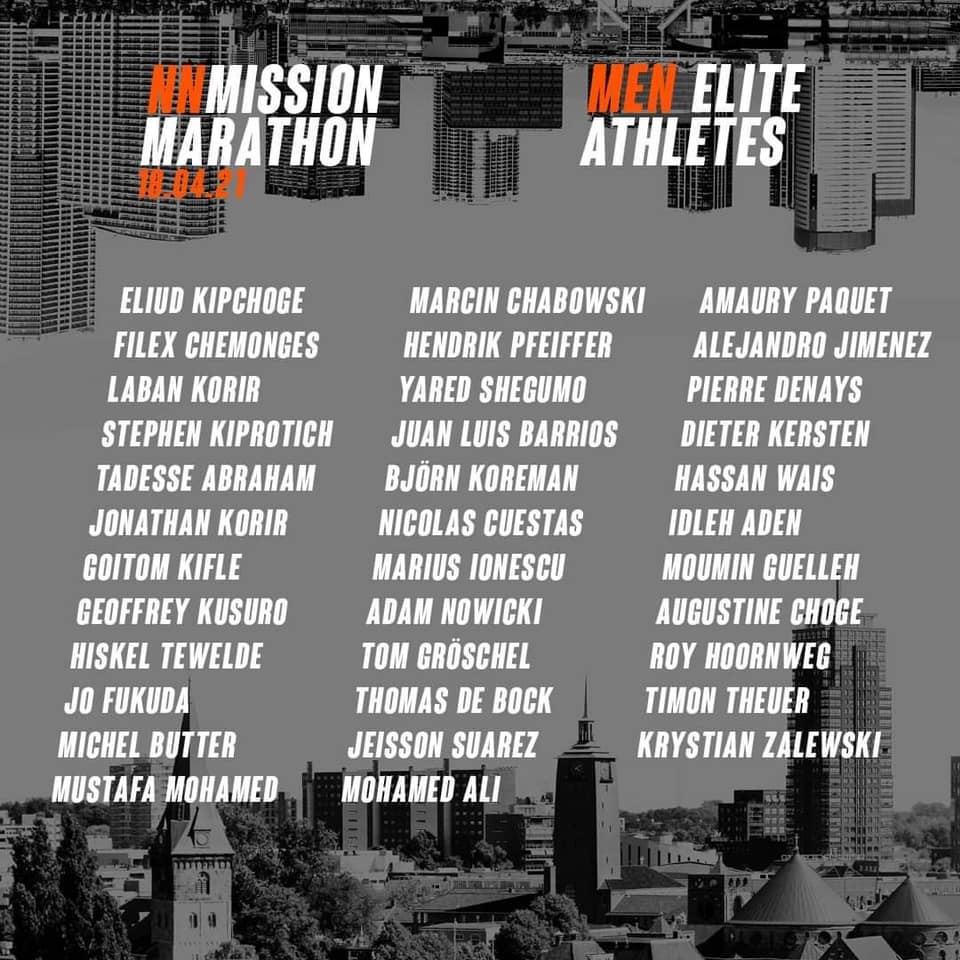
The men’s race
In the men’s race, the pre-race seed times aren’t even close, and there’s really no debate as to who is most likely to win. Kipchoge owns the world record in the marathon with his PB of 2:01:39, and he has also run an unofficial record of 1:59:40. While many of the other runners racing the NN Mission Marathon are looking to qualify for the Tokyo Games or prove that they deserve to be chosen for their national Olympic teams, Kipchoge has a simpler and less stressful reason to run: he needs to bounce back from his poor race at the London Marathon last fall.
He’s still a heavy favourite heading into the Tokyo Games, but his poor 2:06:49 showing in October proved that he is human, and for the first time in years, his competitors might seriously believe they have a chance to beat him. A great race in the Netherlands can boost Kipchoge’s confidence while also knocking down that of his rivals ahead of the Olympics.
The next fastest PB in the men’s field belongs to Felix Chemonges, who owns the Ugandan national marathon record of 2:05:12 (which he ran at the Scotiabank Toronto Waterfront Marathon in 2019). Chemonges hasn’t raced since March 2020, though, and his last result was a sub-par 2:10:08 run at the Lake Biwa Marathon in Japan.
Only one other man in the field, Kenya’s Laban Korir, has run a sub-2:06 marathon in his career, and his 2:05:54 PB puts him at third-best in the men’s race. Out of the 35 men set to race the NN Mission Marathon, 17 have run faster than the Olympic standard of 2:11:30, and 11 runners from that group have broken 2:10.
It’d be safe to bet on Kipchoge for the overall win in the Netherlands, but with so many other runners hovering around the same seed times, the battle for second and third place — plus the mad dash to cross the finish before the clock hits 2:11:30 — will produce must-watch coverage.
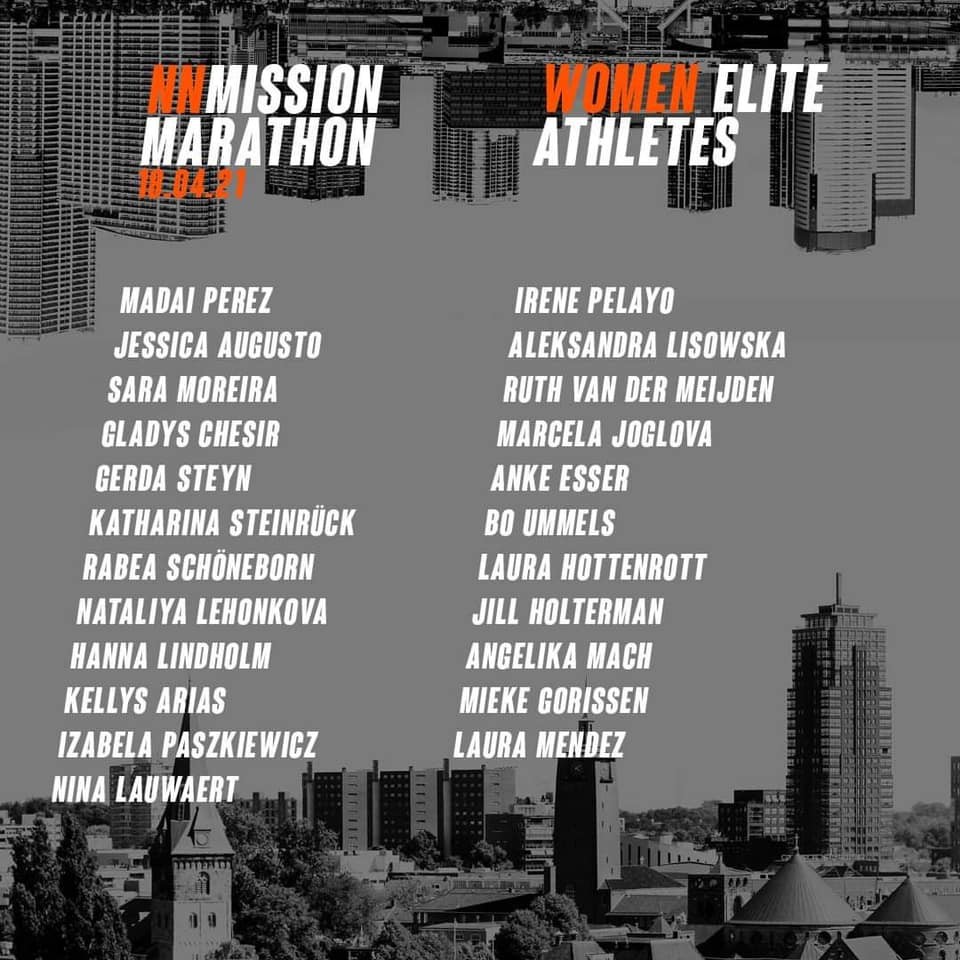
The women’s race has the potential to be much more competitive than the men’s when it comes to the overall win. Mexican marathon record holder Madai Perez has the fastest PB of any of the women in the field. The only thing is that she ran her national record of 2:22:59 all the way back in 2006, and the last time she broke 2:30 came in Chicago in 2017, when she ran 2:24:44. She certainly could take the win in the Netherlands, but her seed time is a bit misleading considering how long ago she ran it.
Next up are Jessica Augusto and Sara Moreira, a couple of Portuguese runners. Augusto owns a PB of 2:24:25, just ahead of Moreira’s career best of 2:24:49. Both of these women have posted tremendous times in the past, but neither has completed a marathon in recent years. Augusto’s last finish came in 2017, and she has one DNF since then.
Moreira has had an even worse few years, and her last finish came in 2015. Since then, she has DNFed three times, including in the marathon at the Rio Olympics. In 2015, though, she placed second at the Prague Marathon and fourth at the New York City Marathon. The next athlete on the start list is Kenya’s Gladys Chesir, who has a PB of 2:24:51, but like her Portuguese competitors, she hasn’t completed a marathon in years, and her last official finish was in 2017.
In total, nine of the 23 women in the field have beaten the Olympic standard of 2:29:30, with several others knocking at the door of sub-2:30 results. Like the men’s race, the women’s run should be an exciting affair, and it’s an event no running fan will want to miss.
(04/09/2021) ⚡AMPby Ben Snider-McGrath
NN Mission Marathon
Eliud Kipchoge will bid to resume winning ways in his last race before the Tokyo games with around 70 runners looking to make the Olympic qualification standard on April 18th in Twente.After suffering a rare marathon defeat in London last October, reigning Olympic champion Eliud Kipchoge makes his return at the NN Mission Marathon in 2021. It is set to...
more...Pikes Peak Marathon legend Arlene Pieper Stine, the first woman to run a sanctioned marathon, has died
Eight years before Kathrine Switzer shocked the world by running the Boston Marathon, Arlene Pieper Stine did her 26 miles in the Pikes Peak Marathon, with a 9-year-old daughter in tow
Arlene Pieper Stine got into the Pikes Peak Marathon in 1959 as a stunt to market her Colorado Springs health club. When she finished, the 29-year-old mother of three was in the record books as the first woman to finish a sanctioned marathon. Unlike the Boston Marathon, the Pikes Peak race never had a prohibition on women participating.
One of Colorado mountain running’s most beloved heroes used to climb up the ladder next to the sign draped across the town of Manitou Springs’s main drag — “Welcome, Pikes Peak Runners” — so that she could send off the hundreds of runners who had packed the narrow street to head off for the summit of the 14,115-foot mountain more than 13 miles and 7,800 of vertical gain in the distance. Then they would turn around for the return trip.
“Runners, ready,” she said into the microphone in the absolute still morning of sun, rain, or even snow of late August. “Go!” said Arlene Pieper Stine.
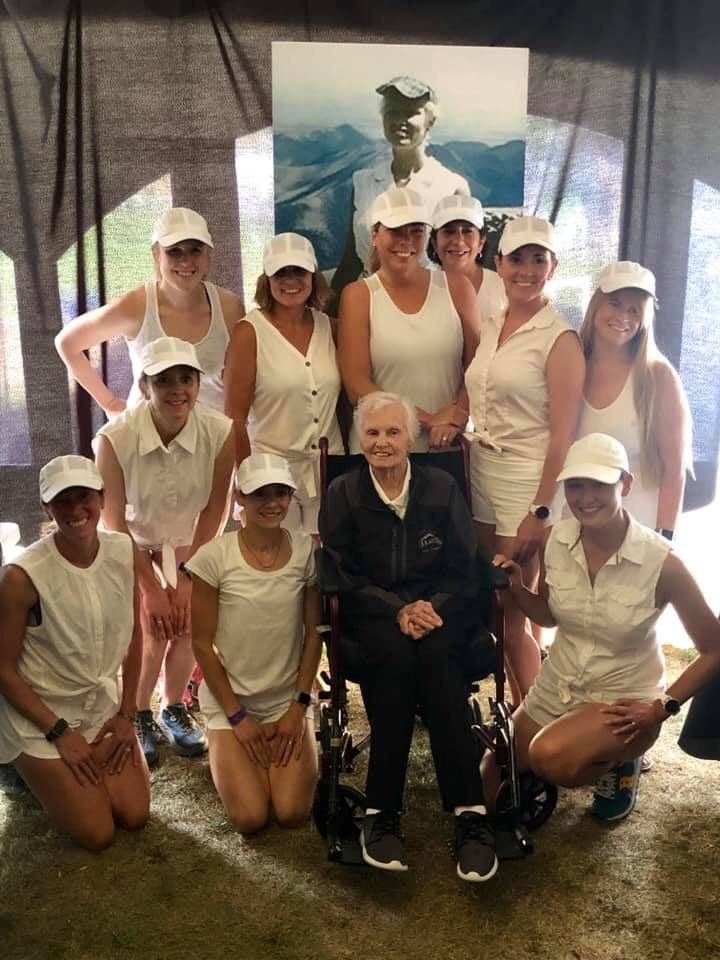
Pieper Stine became the race’s folk hero in 2009 when race officials went looking for the former Colorado Springs resident and health club owner so that they could bring her back to her hometown with some news: Not only had she been the first woman to complete the Pikes Peak Marathon — the punishing switchbacks, rocky single-track, and finally, the last few miles above timberline at over 12,000 feet — but she was the first woman to complete any sanctioned marathon, eight years before Kathrine Switzer became the first woman to complete the Boston Marathon in 1967.
Fifty years after she finished the full “out and back,” as Peak marathon veterans refer to the course, with a time of 9 hours and 16 minutes, Pieper Stine was once again at the start line.
Pieper Stine died Feb. 11, 2021, a month shy of her 91st birthday, as she was trying to build up her strength after battling COVID-19, her daughter Kathy Pieper said.
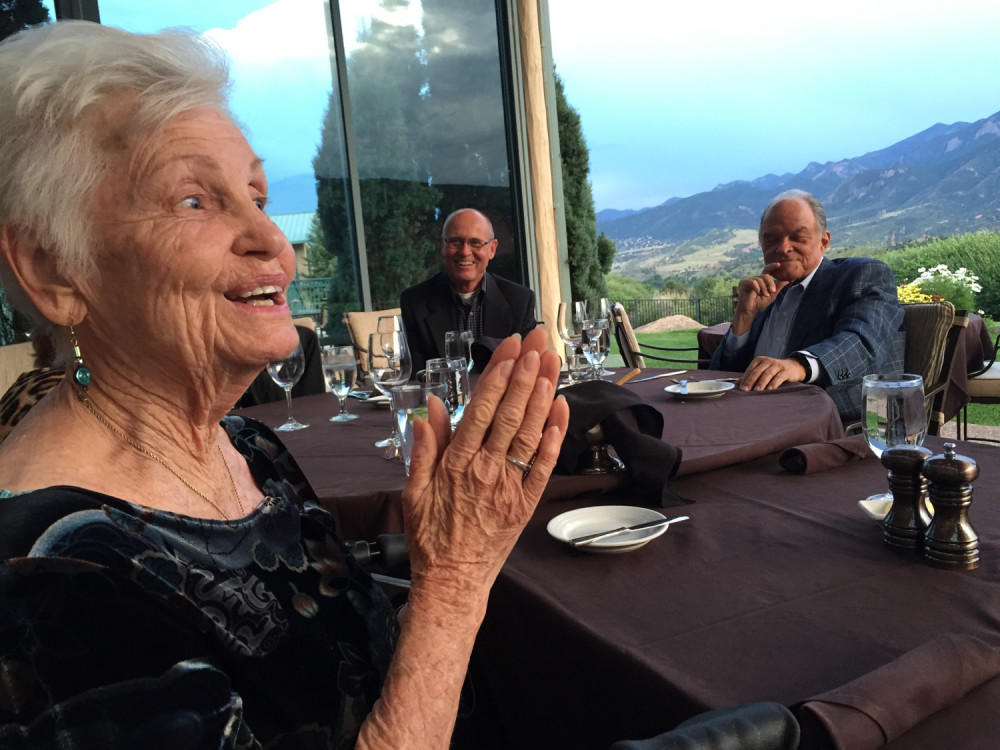
“She got cards and letters from runners and it meant so much to her,” Pieper said. “And I was able to go into her assisted living facility — all covered up — to see her. She ran such a good race.”
She became a role model and inspiration for women runners who looked to her for her boldness and independent spirit — a wife, mother, business owner, and runner who hiked and ran on Pikes Peak with her family in the 1950s, dressed for the race in white sleeveless blouse, white shorts, white headwrap, and tennis shoes from Woolworths.
“We didn’t carry water or have aid stations in those days,” she said in a 2014 interview. “I still remember it like it was yesterday. You can be a wonderful wife and mother, but it showed me that if there’s something you really want to do, you should go for it.”
Year after year, Pieper Stine was as much a part of the race as the unpredictable weather, the friendliness and camaraderie of the runners whether elite or there for a bucket list challenge, or because life wouldn’t be the same without that weekend in late August that turned Manitou Springs into an excited, nervous, and glad-to-be alive running party.
“If I can do it, so can you,” she told the runners who thronged around her in Memorial Park at the Race Expo, at the pre-race spaghetti dinners, or on the streets of town.
From the first time that she and Pieper returned to Manitou Springs in 2009 for the 50th anniversary celebration of the race that they had run together — Arlene at age 29 and Kathy at age 9 — Pieper Stine became living reminders of the beauty and challenge of running the Peak.
“‘It’s a beautiful day for a race,’ I remember her saying as we passed runners that day,” Pieper said of the race she did with her mother in 1959. “And she kept that same attitude every year. She never could believe that runners would come up to her and say ‘Can you just touch my hand for luck?’ or ‘It’s so good to see you again.’ She remembered everyone and had wanted to say something to them all. She could barely walk 10 paces down the sidewalk and people would say, ‘Can I get your picture? Can I get your autograph?’ It was just the thrill of her life when [race organizers] found her.”
In 2019, to mark the 60th anniversary of Pieper Stine’s marathon step for woman runners everywhere, a group of women runners dressed in white sleeveless blouses, white shorts, and headscarves and hats gathered to run up Pikes Peak to mark the occasion. And like the rock star of the trail running world she was for women, Pieper Stine showed up for the celebration.
Four years earlier, in 2015, I had the opportunity to celebrate Pieper Stine myself. The night before the marathon, I joined the Peak Busters gathering at the Manitou Springs City Hall and was reassured by Arlene, as I had come to know her. I had come back from falls and injuries like everyone else on the peak, since my first marathon on the mountain, in 2004.
At that time, Arlene was using a wheelchair after hip surgery. It was my second out and back and I was eager but nervous. “Good luck,” she said. “You’ll have a great time!” I bent down and she took her hand in mine. “OK,” I said, feeling tears about to come, feeling a part of history of this mountain that had both tested me and rewarding my training — or had spit me out during a few memorable Ascents and my first marathon. But I could always count on feeling inspired by the women who had come before me, especially Arlene.
The next morning, she was at the start, shaking hands, giving hugs, and talking to racers through the speakers, to get ready and GO!
“Without pioneering efforts like Arlene’s, we would have no history nor legacy in our sport,” said Nancy Hobbs, executive director of the American Trail Running Association. “Many women — young and old — have been inspired by her.
That includes Pieper, who is planning to train for the Ascent along with one of Pieper Stine’s grandsons, Kyle, 29, who wants to train and qualify for the marathon. She also is survived by daughters Karen, 67, and Linda, 57, and her son, Karl, 66; three other grandchildren and four great-grandchildren.
“Mom wanted to sprinkle some of her ashes on Pikes Peak,” Pieper said. “And I thought, ‘I’d like to go back 60 years later and see if I can do the Ascent.’ Maybe I can finish it, maybe not even do it as a race. And then maybe I could keep her legacy going.”
(04/09/2021) ⚡AMPby Jill Rothenberg
Pike's Peak Marathon
A Journey to the Top and Perhaps Back The Pikes Peak Ascent® and Pikes Peak Marathon® will redefine what you call running. Sure, they start out like a lot of races on Any Street, USA. But your first left turn will have you turning in the direction of up! During the next 10 miles, as you gain almost 6,000...
more...7 Solutions For Runners With Tight Calves
If you’ve been noticing tight calves during your runs and feeling them when you head up a hill, you’re not alone. Most veteran runners can recall at least one time they’ve found themselves on the side of the trail wincing and rubbing a calf to alleviate a cramp.
While there’s no simple solution, there are a few ways to loosen your calves and lessen your chances of tightening up at a pivotal moment in your run.
1.- LOOK AT YOUR FEET
First, look at your feet. Your shoes might be to blame. You’ll know you’re overdue for a new pair if they’re suddenly uncomfortable and the support has worn out.
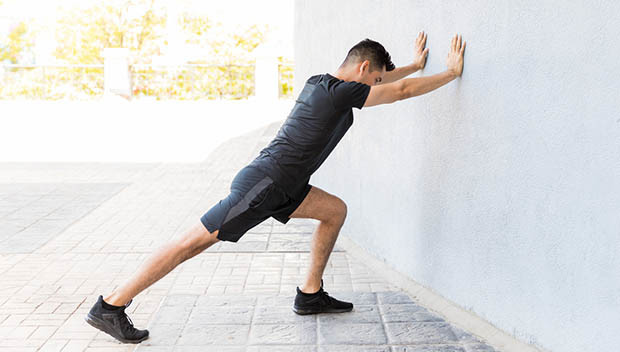
Jaclyn Fulop, a licensed physical therapist and runner, says tight calf muscles are a common problem for runners, but often, the root cause is lower on the body. “Tight calves can occur due to biomechanical dysfunction such as hallux rigidus [stiffness/rigidity in the big toe], the shape of your foot’s arch, repetitive stress, weakness or improper shoe wear,” she explains.
2.- CONSIDER TERRAIN
If your shoes are in good shape and you’re still having problems, consider terrain: Have you recently shifted to running more hills? Uphill running can put a lot more pressure on your calves than flat miles, and you may not be recruiting your other muscles to help alleviate the burden. Focus on using your glutes to get up the hill. You may also be spending more time on the balls of your feet as you tiptoe your way up an incline; instead, let your heel drop occasionally to allow your calf muscle to get a bit more release. Finally, consider power-hiking, which allows you to drop your heels more naturally, and in truly steep terrain, won’t even drop your overall pace by much.
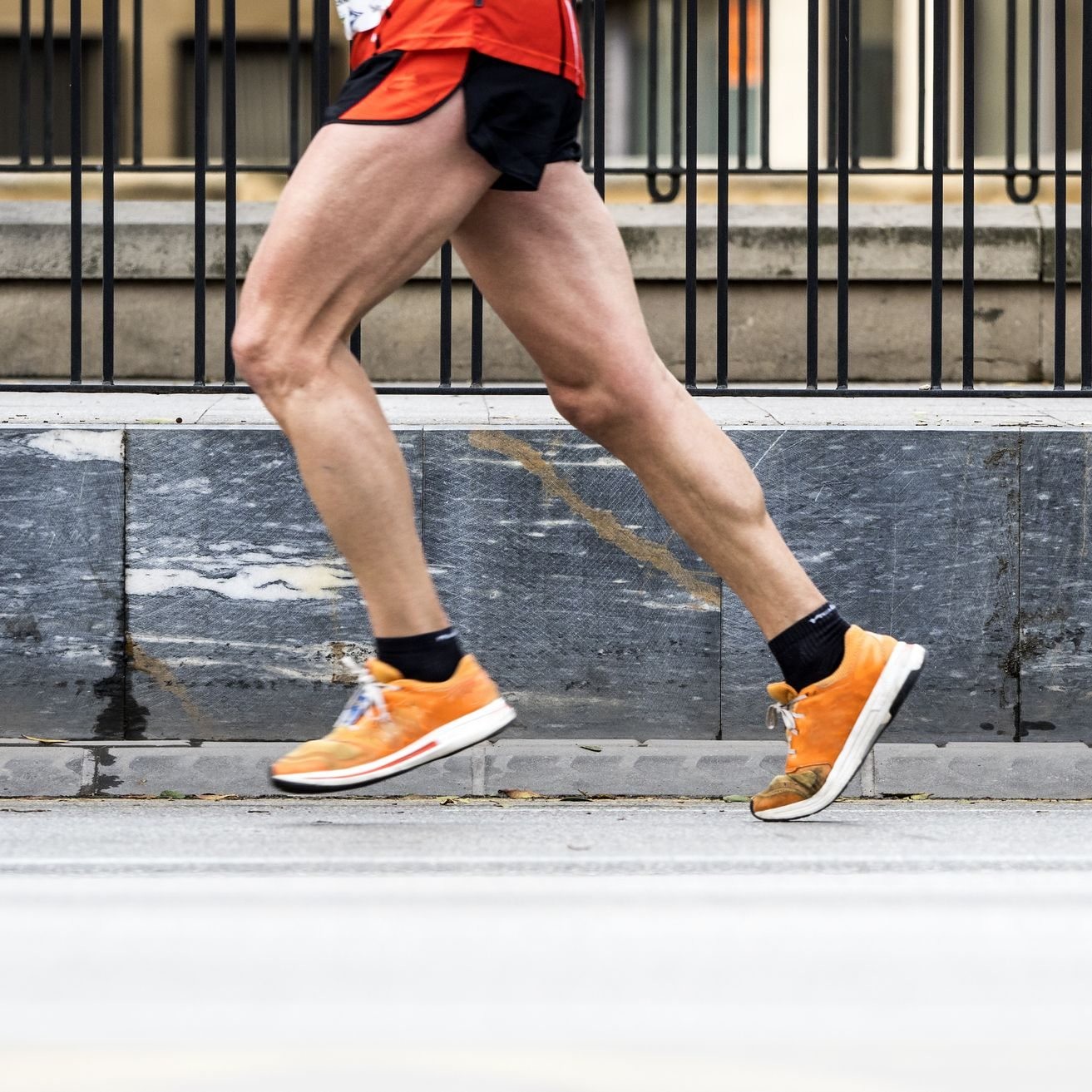
3.- HYDRATE
Research has shown dehydration can lead to tight muscles — and if your calves are already tense, being a quart low on your daily water intake can shift them from annoying to painful territory. Aim to drink at least 64 ounces of water every day, more if you’re sweating profusely during a workout — and add an electrolyte tab or pinch of salt to a few of those glasses to maintain sodium, magnesium and potassium levels.
Practice basic running protocols with extreme care: In the summer, any cramping and tightness can be exacerbated by dehydration, so make sure you’re starting runs fully hydrated, and continuing to sip as you go, especially as runs last longer than an hour.
4.- WARM UP AND COOL DOWN
In any weather conditions, a slow and steady warmup is key to avoiding instant tightness in your muscles as you start to up the pace. Take a few minutes before each run to walk, do activation stretches like lunges (focus on the back leg for a greater calf stretch) and gentle hops on your toes.
After each run, give your body a few minutes to cool down by walking and doing some stretches. Also, consider getting a piece of gear that does the stretching for you — for example, a Strassburg sock gently pulls your toes toward your shin to stretch your calves while you sleep. For those who use standing desks, a foam wedge might be your new best friend. Use it while standing to get a gentle calf stretch while putting in no effort.
5.- STRETCH AND STRENGTHEN
Stretching — dynamic and static — can help, but Fulop recommends adding static stretches post-run rather than beforehand. “Stretching is important because it increases your joint range of motion, which improves balance and keeps the muscles working more efficiently,” she explains. A good way to stretch your calves is during your workout: Walking or running uphill is a great calf activator and naturally forces your muscles to stretch while you’re heading up.
You can do the staircase stretch slowly, but there’s also a benefit to doing it faster, in a pumping motion. Since your calves are so dense, excess fluid and blood can pool up in those muscles and might benefit from getting flushed out. So, add a quick set of calf pumps to your next post-run cooldown. Aim to do this daily.
6.- TRY SQUATS
Erin Taylor, author of “Hit Reset: Revolutionary Yoga for Athletes,” is a fan of the squat, because so many calf stretches involve straight legs, and we don’t activate certain muscles when our knees are bent. Get into a deep squat, with your hands on the floor to stabilize yourself. Come up onto your toes as high as you can, and then drop your heels. Repeat this a few times.
7.- RECOVER AND FOAM ROLL
Foam rolling your calves is as important as rolling out your quads and hamstrings. Don’t just give your calf a single swipe — work from your ankle slowly up to your knee, making sure to hit the sides of your calf as well as the back.
(04/09/2021) ⚡AMPby Molly Hurford
Native Americans in Massachusetts want to reschedule Boston Marathon from Oct. 11 holiday
Native Americans in Massachusetts are calling on the organizers of the Boston Marathon to move the already rescheduled date for the storied race because it now conflicts with a day meant to commemorate the contributions of Indigenous people.
The Boston Athletic Association announced in January that the 125th edition of the marathon would be pushed back from its traditional April running to Oct. 11, assuming road races are allowed to take place under Massachusetts’ COVID-19 restrictions by then.
But the Indigenous Peoples Day Newton Committee complained the new day undercuts a day reserved for recognizing the contributions of Native Americans, past and present. The group said its first planned celebration of the Oct. 11 holiday in the Boston suburb of Newton has to be cancelled because of the marathon’s new date.
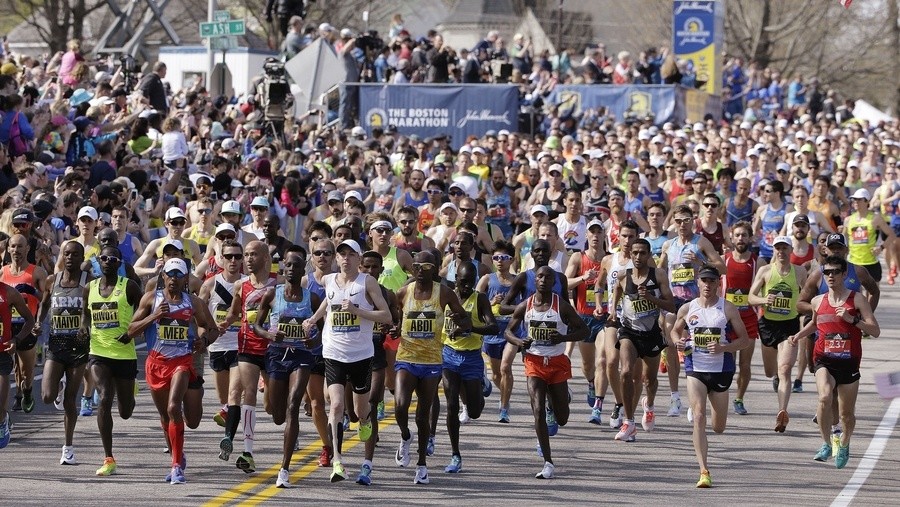
“Unfortunately, the Boston Athletic Association has decided that Indigenous Peoples Day is a ‘side’ holiday that can be usurped," the committee said in a recently launched online petition. "By doing this, they are perpetuating the myth that Indigenous peoples are part of the past and irrelevant.”
The BAA didn't directly address the complaints, but said the new date was selected in close co-ordination with the eight cities and towns along the marathon route. Those communities include Newton as well as Hopkinton, Ashland, Framingham, Natick, Wellesley, Newton, Brookline and Boston.
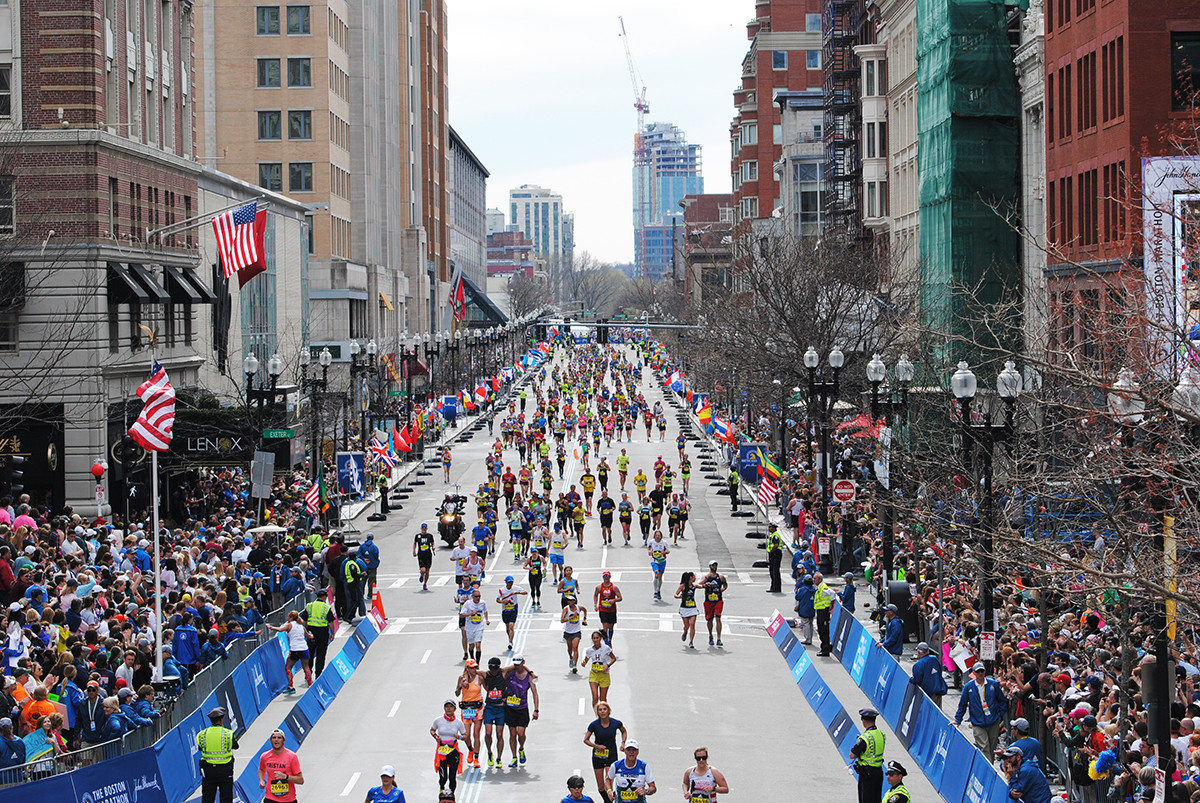
“We will continue working with city and town officials, as well as with organizations planning events during the October 9–11 weekend,” the organization said in a statement.
Newton Mayor Ruthanne Fuller said the city, which has the longest stretch of the marathon course, can handle both events. She said the city is offering to host an Indigenous Peoples Day celebration on a field at Newton South High School.
“While the pandemic has made so many things more complicated, we are excited to celebrate both Indigenous Peoples Day and the Boston Marathon in Newton on October 11, 2021,” Fuller said in a statement.
But City Councilor Emily Norton said she's disappointed at the chosen date. “It was insensitive at best and disrespectful at worst,” she said.
(04/09/2021) ⚡AMPby Canadian Press
Boston Marathon
Among the nation’s oldest athletic clubs, the B.A.A. was established in 1887, and, in 1896, more than half of the U.S. Olympic Team at the first modern games was composed of B.A.A. club members. The Olympic Games provided the inspiration for the first Boston Marathon, which culminated the B.A.A. Games on April 19, 1897. John J. McDermott emerged from a...
more...Laura Muir : I want to inspire the next generation of runners
I am so lucky to be able to run for a living and I’m even more thrilled that, by doing that and talking about my running, I can potentially inspire others to give sport a try.
I think that’s the role that we have to play as elite athletes, to tell our story and to continue to do what we love — so that others can see the opportunities and benefits that sport can bring at every level.
If reading this article or watching me race gets just one child or one family out to play sport today or try running, then that is a success!
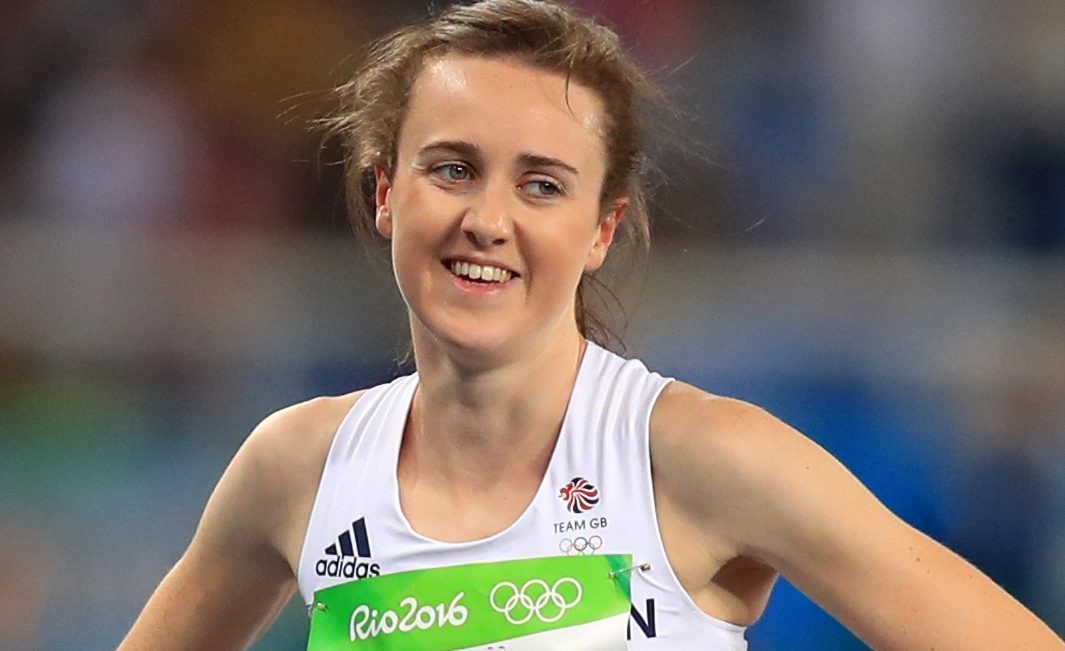
I started athletics at about 11 years old through cross country at my primary school.
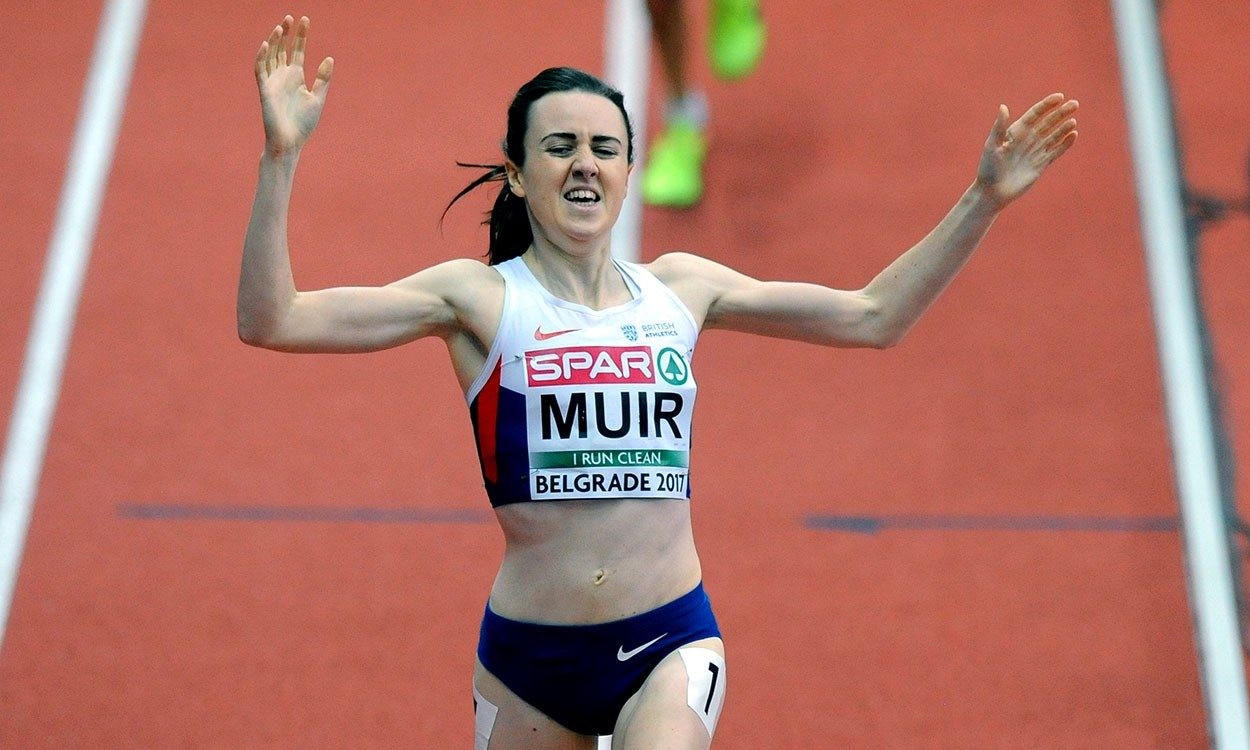
I made it on to the cross country team and I competed in regional events. I was not winning the races but just absolutely loved running.
From there I joined a local athletics club that one of my friends went to and gradually built up my training.
I remember how encouraging my primary school teacher and headteacher were. I think they really wanted us to enjoy sport and did not put any pressure on us, which was lovely.
Then at the athletics club I began in the sprints group like a lot of young athletes do, before a middle-distance coach started working with the club soon after I joined.
I think I had always naturally gravitated towards the longer distances so started working with that coach instead and that was me set.
Being down at the track, I always remember what seemed like a big group of people all helping one another.
There are so many great reasons for sport, particularly sport for youngsters, to be prioritized as we make our way out of this latest lockdown.
I am already incredibly grateful for the team I have around me and the time and effort they have given me to be the best athlete I can be.
If I could win an Olympic medal that would be such a special moment for me and my team.
From family and friends, to my coach, physio, training partners and the volunteers that make the sport tick — I’m thankful every day for their support. Of course, in those big moments it’s great to take a minute and appreciate that support and to say thank you when the spotlight is on you.
But, realistically, it’s the hard days when that support is most appreciated. The weeks of injury, the tough winter sessions, the local athletics meets — that’s when I am really grateful for those who help me so much.
(04/08/2021) ⚡AMPby Laura Muir
2000 entries in for Comrades Centenary virtual event
Nearly 2000 participants have signed up for the Comrades Marathon Association’s (CMA) virtual event, the Comrades Centenary Hope Challenge, since being launched two weeks ago.
With two consecutive editions of the traditional Comrades Marathon having been cancelled, owing to Covid-19, runners the world over will have the opportunity of joining in the celebratory spirit of the Comrades Marathon Centenary via its 2nd virtual event in the race’s 100-year long history.
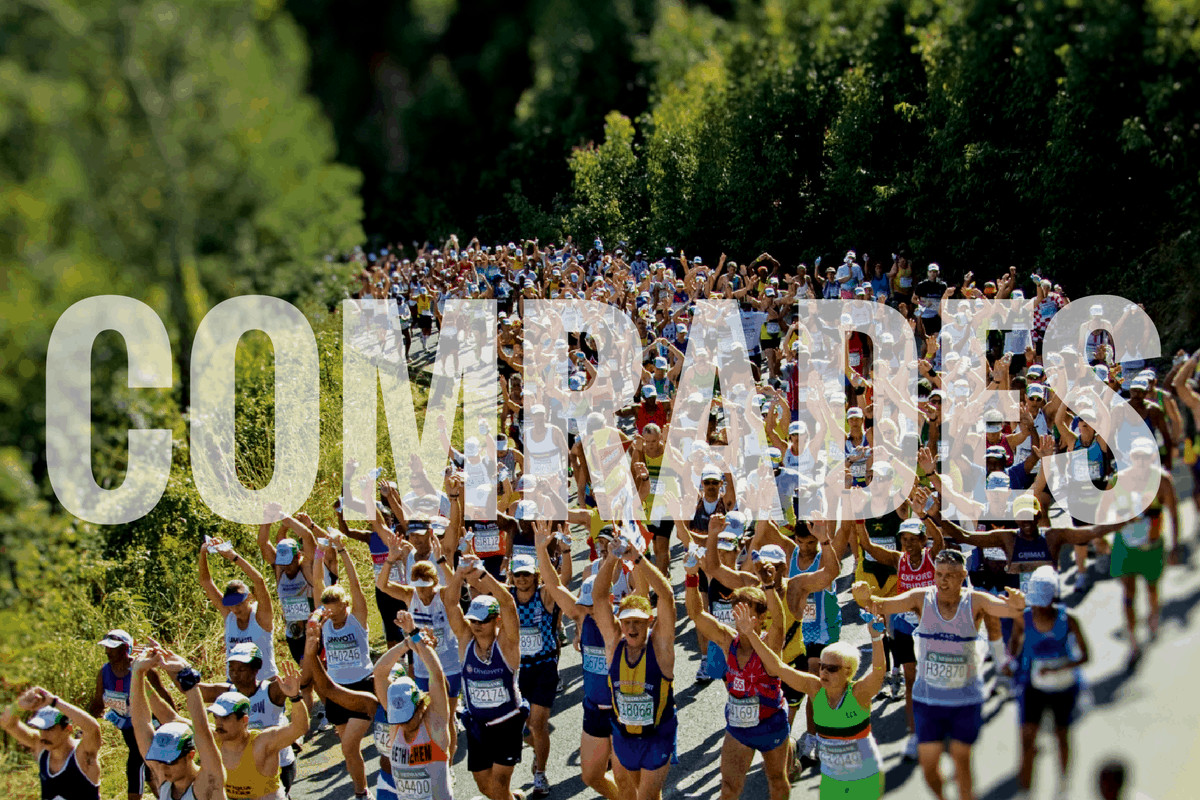
Come Sunday, 13 June 2021, runners and their families will be able to participate from any time between 00:01am and 23:59pm on the actual challenge date, within their local time zone globally.
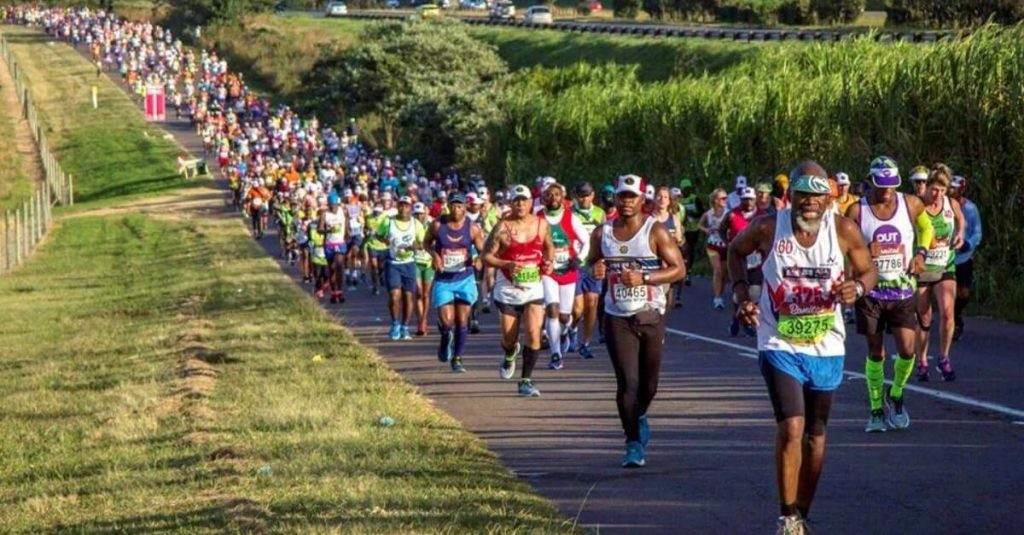
The Comrades Centenary Hope Challenge will comprise 5 distances, being a 5km, 10km, 21.1km, 45km and 90km which will all be run virtually, meaning that athletes get to run their own race, along their select route anywhere in the world.
For more information on the Comrades Centenary Hope Challenge and to enter, please click through to www.comrades.com
The campaign slogan for the Comrades Centenary Hope Challenge is ‘Ithemba – Hope Is’, which aims to contextualise each runner’s hopes, what the feeling means to them and to further inspire other athletes to dig deep and discover their own hopes and dreams for a better future and the new normal in a world ravaged by Covid-19.
(04/08/2021) ⚡AMPComrades Marathon
Arguably the greatest ultra marathon in the world where athletes come from all over the world to combine muscle and mental strength to conquer the approx 90kilometers between the cities of Pietermaritzburg and Durban, the event owes its beginnings to the vision of one man, World War I veteran Vic Clapham. A soldier, a dreamer, who had campaigned in East...
more...Even with vaccination Boston Marathon athletes may need two negative coronavirus tests before race
Boston Marathon athletes might need to show they tested negative for coronavirus twice before the October in-person race, even if they’re vaccinated, the Boston Athletic Association said Wednesday.
Also, the B.A.A. this year will eliminate the staging area in Hopkinton where athletes traditionally mingle, stretch, hydrate, and fuel up before the race.
“The B.A.A. is committed to taking all necessary steps to ensure the health and safety of participants, volunteers, and the public,” Tom Grilk, president and CEO of the B.A.A., said in a statement. “We will continue to follow the science and adapt the event plan to reflect guidance from our local, city, and state partners.”
Participants for the first time will be able to buy registration insurance, the B.A.A. announced. There will also be a $25 COVID-19 health and safety fee for this year’s race on Oct. 11.
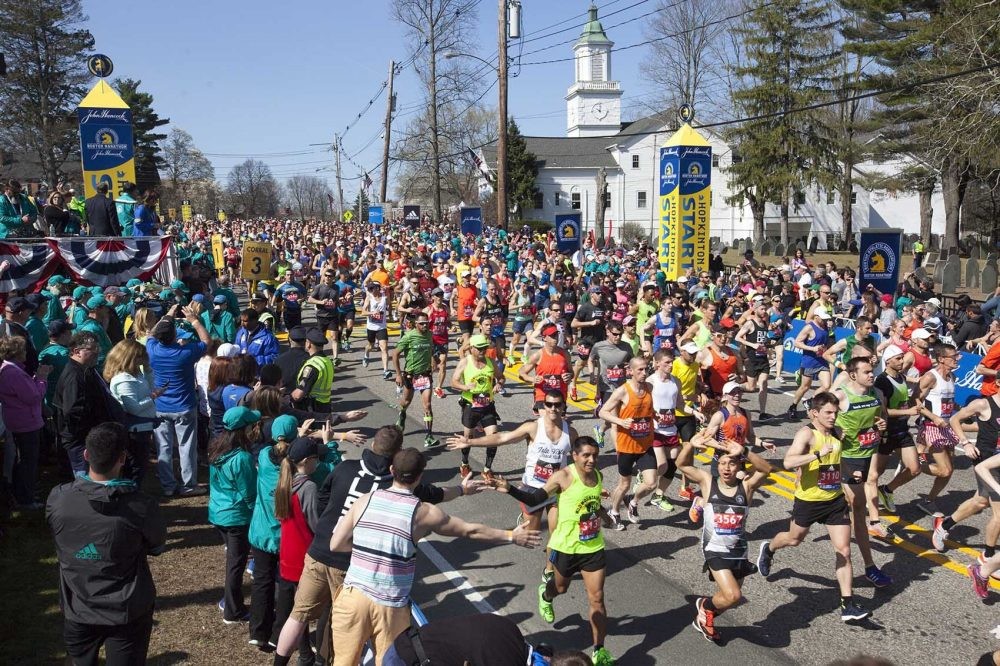
The B.A.A. last month announced a smaller field size for this year’s race. There will be 20,000 entrants to allow for social distancing throughout the course. The field size in recent years has been 30,000 participants.
“Participants in the in-person race may be expected to produce up to two negative COVID-19 tests prior to Monday, October 11, regardless of vaccination status, in order to mitigate spread to participants and community members,” the association said. “The B.A.A. will continue to follow the data and science and will share more information in the coming months on testing timelines and requirements.”
In addition to the in-person road race, the B.A.A. is also holding a virtual Boston Marathon over the race weekend from Oct. 8 to 10.
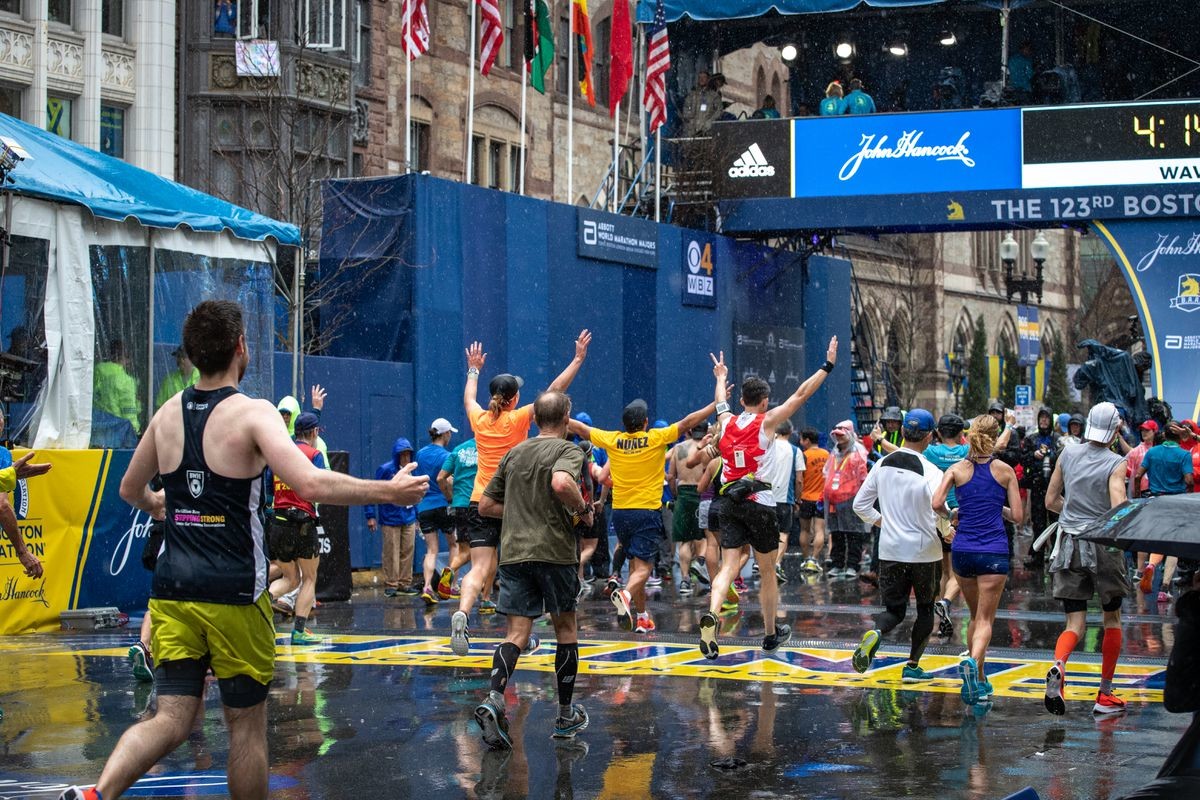
With no staging area for the in-person race this year, athletes will instead be assigned specific start times and participate in a rolling start at Hopkinton. The rolling start procedure will be directly aligned with the bus loading times in Boston and transportation to the start.
The entry fee for the 125th Boston Marathon will remain $205 for U.S. residents and $255 for international residents.
Participants who elect to purchase registration insurance, offered by RegShield, will be able to have entry fees and the COVID-19 health and safety fee refunded for multiple reasons including loss of job, pregnancy, illness, and injury.
Refunds may only be eligible for those who purchase the insurance policy at the point of registration. Entries in the Boston Marathon cannot be transferred, deferred to a future year, and only those who elect to purchase registration insurance may be eligible for refunds.
Registration will be held through the B.A.A.’s online platform, Athlete’s Village, from April 20 at 10 a.m. to April 23 at 5 p.m.
(04/08/2021) ⚡AMPby Rick Sobey
Boston Marathon
Among the nation’s oldest athletic clubs, the B.A.A. was established in 1887, and, in 1896, more than half of the U.S. Olympic Team at the first modern games was composed of B.A.A. club members. The Olympic Games provided the inspiration for the first Boston Marathon, which culminated the B.A.A. Games on April 19, 1897. John J. McDermott emerged from a...
more...Scientists reveal a new way to detect banned performance-enhancing substances just ahead of the Tokyo Olympics
A team of scientists at the Florida Institute of Technology has developed a new method for detecting doping compounds in urine samples ahead of the Tokyo Olympics.
This new method will not only help regulatory agencies detect existing dopants, but will also help them find newly created illicit steroids not yet known to the World Anti-Doping Agency (WADA) to reduce doping in the future. The research was presented Monday at the American Chemical Society.

Each year, WADA releases a list containing every substance athletes are prohibited from using, which includes steroids. The problem is that it can be difficult to distinguish between endogenous steroids (those created naturally in the athlete’s body) and exogenous steroids (steroids the athlete takes in from an outside source) when analyzing a urine sample. Additionally, new performance-enhancing drugs are continuously being developed that many labs don’t know to test for.
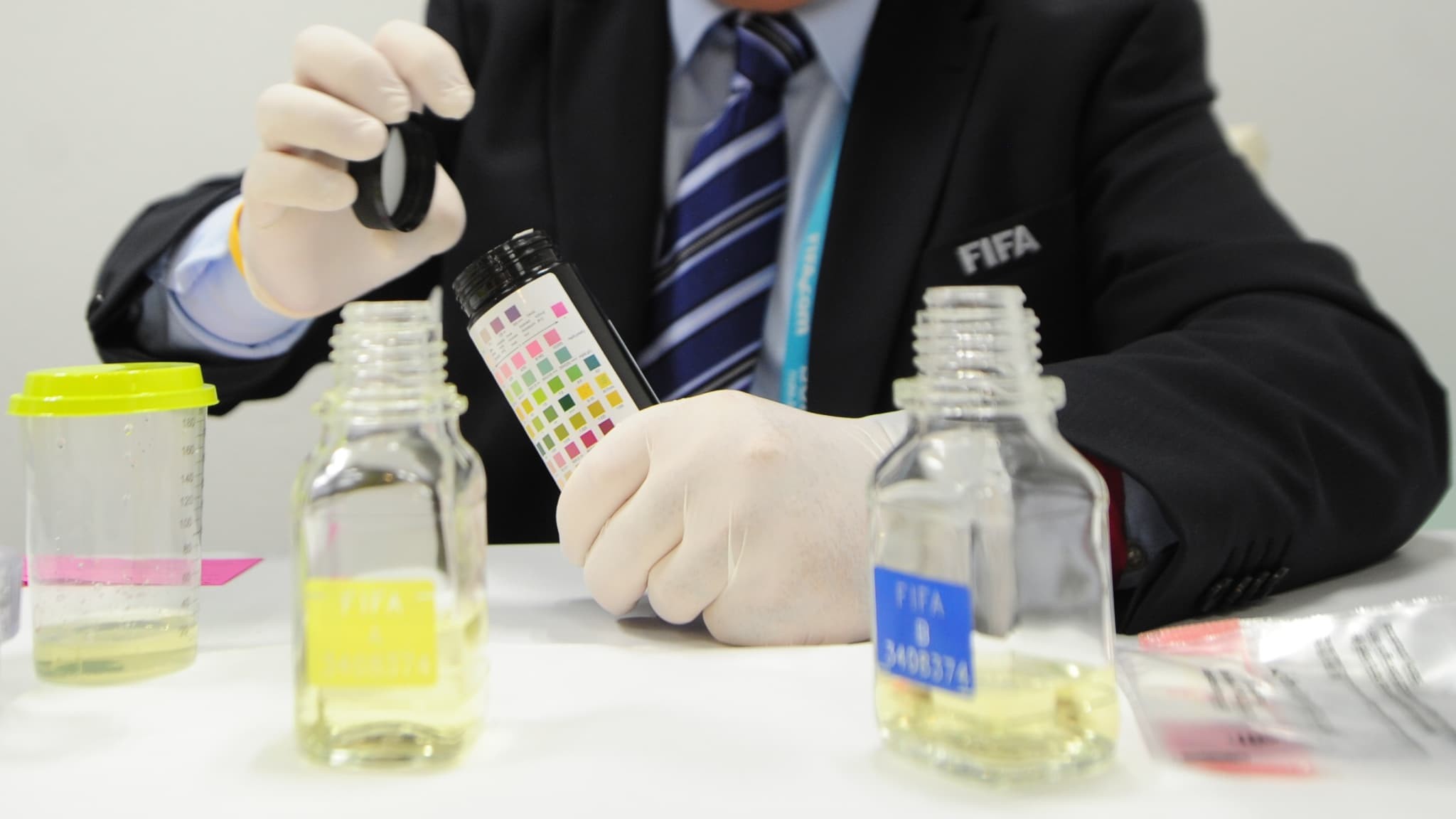
“As quickly as we develop methods to look for performance-enhancing drugs, clandestine labs develop new substances that give athletes a competitive advantage,” Dr. Christopher Chouinard, the project’s principal investigator said in an interview.
CChouinard and his team have now developed a test using mass spectrometry and gas or liquid chromatography that can differentiate between endogenous and exogenous steroids, while also anticipating the chemical structure of potential future performance-enhancing compounds. Basically, this test breaks the molecules in the sample up and separates them into fragments, so testing facilities can identify the original, intact compound. Then, the scientists use another special separation technique that allows them to tell the difference between naturally occurring steroids and synthetic, performance-enhancing substances.
The team is also collaborating with other researchers at the university to develop machine-learning techniques to predict the structure and other characteristics of new or future steroids that WADA does not yet know about.
“If we can develop methods to identify any theoretical steroids in the future, we could dramatically reduce doping, because we would be able to detect these new species immediately, without the lag time that’s been associated with anti-doping testing over the last 40 years,” Chouinard says.
This research is coming out only a few months before the summer Olympics, and if it can be employed in time, it could make these Games one of the cleanest on record.
(04/08/2021) ⚡AMPby Brittany Hambleton
Tokyo 2020 Olympic Games
Fifty-six years after having organized the Olympic Games, the Japanese capital will be hosting a Summer edition for the second time, originally scheduled from July 24 to August 9, 2020, the games were postponed due to coronavirus outbreak, the postponed Tokyo Olympics will be held from July 23 to August 8 in 2021, according to the International Olympic Committee decision. ...
more...Medtronic Twin Cities Marathon registration opens April 8 to be run in person
The Medtronic Twin Cities Marathon Weekend of Events went virtual only in 2020, but it will return in-person this year on Oct. 2 and Oct. 3.
The Medtronic TC Family Events will take place on Saturday, October 2, and the weekend will conclude with the Medtronic Twin Cities Marathon and TC 10-Mile races. Those races run from downtown Minneapolis to the State Capitol in St. Paul, on Sunday, October 3. To register, you can visit Twin Cities in Motion’s webpage starting at 10 a.m. on Thursday, April 8.
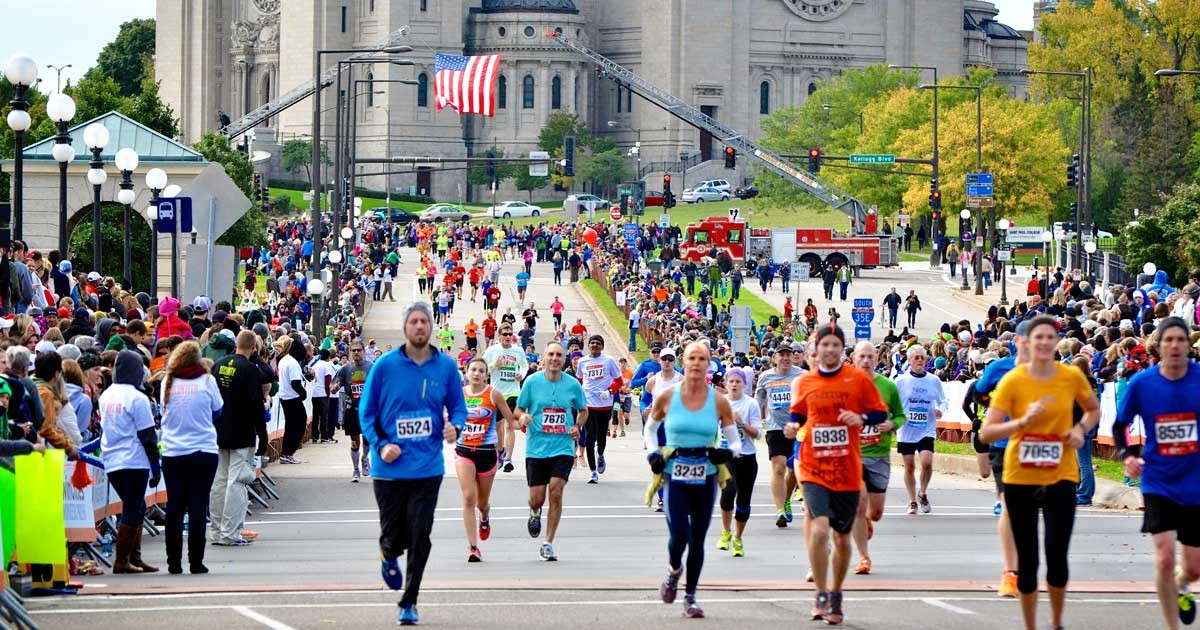
Twin Cities in Motion has partnered with experts and officials to build an event that’s COVID-safe. Virtual races are included as well for those who prefer the option. All 2021 Medtronic Twin Cities Marathon Weekend events will have limited field sizes. The marathon is currently limited to 4,000 in-person registrants.
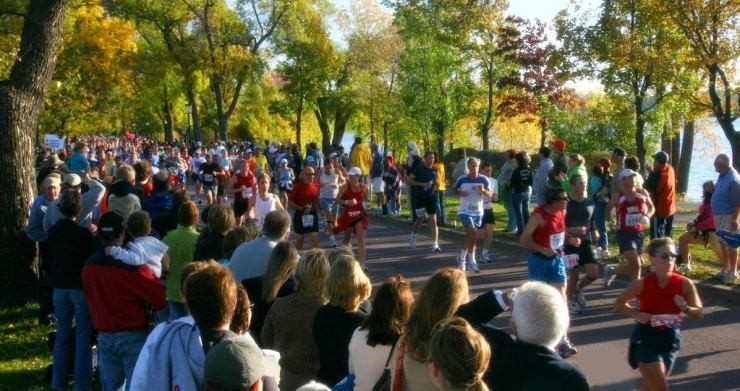
If the event is cancelled due to COVID-19, a partial cash refund policy will be in place. For more information on safety precautions, see here.
Get the Twin Cities in Motion app for pro tips, free Runcoach training, and helpful content for free virtual check-in races to gauge your progress and prepare you for the race.
Registration is also open for the Earth Day 8K, presented by Everlight Solar on Sunday, April 25 at Lake Como, the Spring into Summer 5K, presented by LX Medical on Saturday, May 22 at Lake Phalen and the Summit Triumphant 5K and 10K on Saturday, June 26, at Bde Maka Ska.
KARE 11 is proud to be the official media sponsor for the Medtronic Twin Cities Marathon Weekend and the presenting sponsor for the KARE 11 Family Mile.
(04/08/2021) ⚡AMPby Sonya Nayar
Medtronic Twin Cities Marathon
The Medtronic Twin Cities Marathon Weekend offer races, walks and activities for every age and ability level! Learn more about the weekend's events and activities by using the navigation bar at the left or top of your screen. The Twin Cities Marathonis a running event in the Minneapolis-Saint Paul area. The TCM was first run in 1982, and typically takes...
more...Kibiwott Kandie´s training camp routine is three times a day
The first run is at 6am, and I might do 20km at a good pace. At 10am, I’ll do another 8km, plus some exercises. In the afternoon, around 4pm, I’ll usually do an easy 10km.
That’s my routine during training camp, in Ngong or Iten, and while it may seem like a lot, I've been covering long distances ever since I was a kid.
I grew up in Baringo County, western Kenya. My mother was a farmer, my father worked for the Ministry of Water, and when I was young I spent my days on my feet. Maybe it was chasing goats or cows around the farm or in the local forest, or maybe it was going to and from school, which was 7km away. I’d make that journey four times a day, coming back in the middle to take lunch at home. I’d run a bit, walk a bit, run a bit, walk a bit.
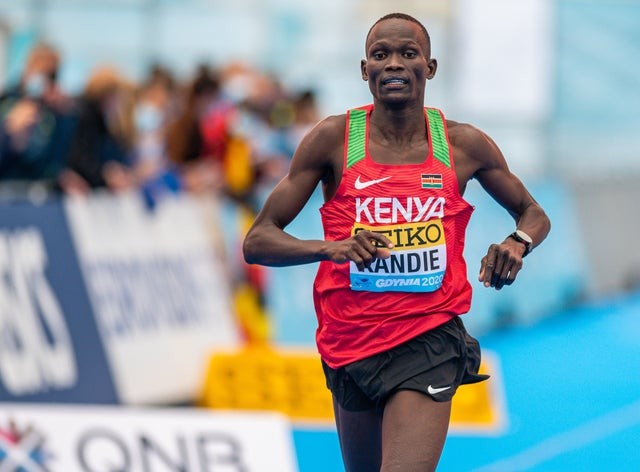
I started doing cross country races while at school, and I wasn't successful in the beginning. But I told myself, one day, I have to win.
As a kid, I used to set myself the goal to run from here to there, and I'd get great satisfaction when I’d be able to do it. That was where the habit started, how I first learned to love athletics.
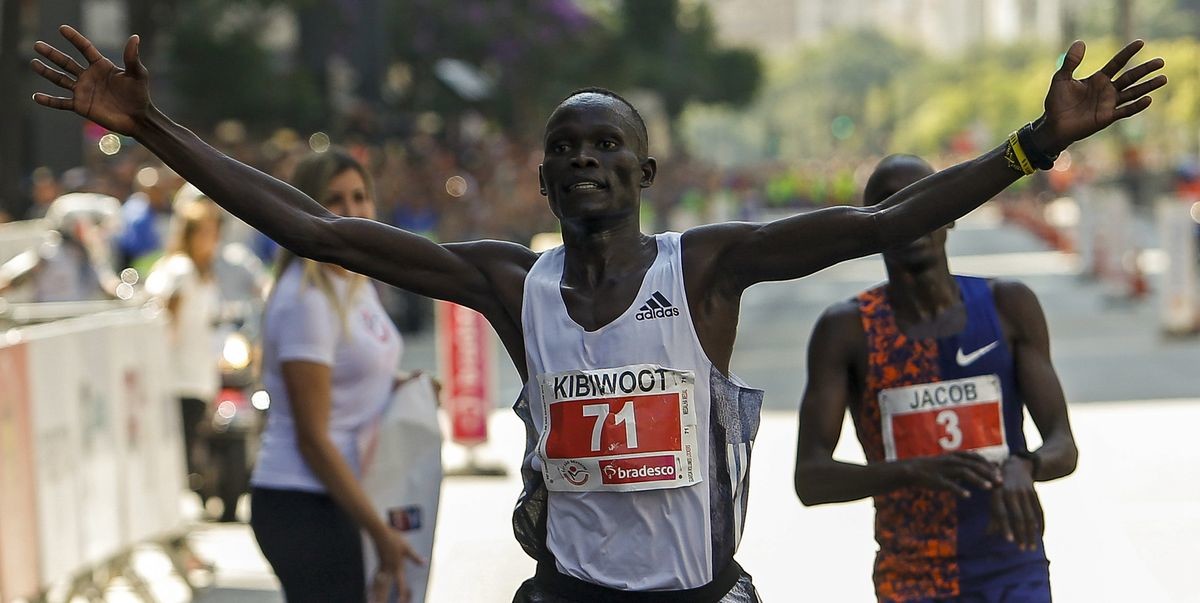
Growing up, a name I heard all the time was Paul Tergat. He was from an area not far from me so my goal was to grow up and be like him.
I finished school in 2015 and, at that point, my parents told me to go for higher education, but my mind was made up. I wanted to run full-time, and I convinced them to allow me to give it a go. For the last four years I’ve also been working with the military, a job that supports life as a high-level athlete.
My first coach was John Korir, who’s based in Ngong, but since last year I’ve spent a lot of time in Iten, training with coach Joseph Cheromei. On a normal week, I'll do 170-180km.
When things started to shut down last year due to the pandemic, I accepted what was happening, that this was nature and we couldn’t blame anyone. I kept training, but not as hard. I did my morning run as normal, and once in a while I did speed work, but I eased back and didn’t do the usual three times a day.
I told myself, be patient, sometime soon everything will be well and sports will be back.
That happened last autumn, and my big goal then was the World Half Marathon Championships in Gdynia, Poland. My training had been really good so my aim was to win gold, but in the race I quickly realised many others were very strong, too, so I changed it to getting a medal.
My big goal is to make the Kenyan team over 10,000m for the Tokyo Olympics, and everything will be focused on that until the summer.
Looking beyond that, my mind is already starting to think about the marathon. It will be a big challenge, trying to move up to double the distance, but I’d like to prepare for one in the autumn and see how good I can be.
Long-term, that's my big goal in this sport. I want to do what Paul Tergat did, and make history in the marathon.
(04/07/2021) ⚡AMPby Kibiwott Kandie
Jakob Ingebrigtsen says that the 1500m is the most painful race
Is there anything Jakob Ingebrigtsen gets nervous about? In his exclusive interview in the April issue of AW magazine, the Norwegian star talks with real assurance about how he plans to put himself at the summit of his sport. His aim? “To be too fast for everybody else, which means that I can basically do what I want and I will still win.”
The 20-year-old exudes confidence in his ability and was in complete control when winning both the 1500m and 3000m at last month’s European Indoor Championships. There is a very clear air of calm around him, too, but he does admit that nerves play a significant part in his racing life.
Nerves when it comes to the pressure of meeting his own expectations but also nerves surrounding – particularly when it comes to the 1500m – the prospect of pain.
“Yeah, I’d say so,” he answers when asked if he’s good at channelling that nervous energy.
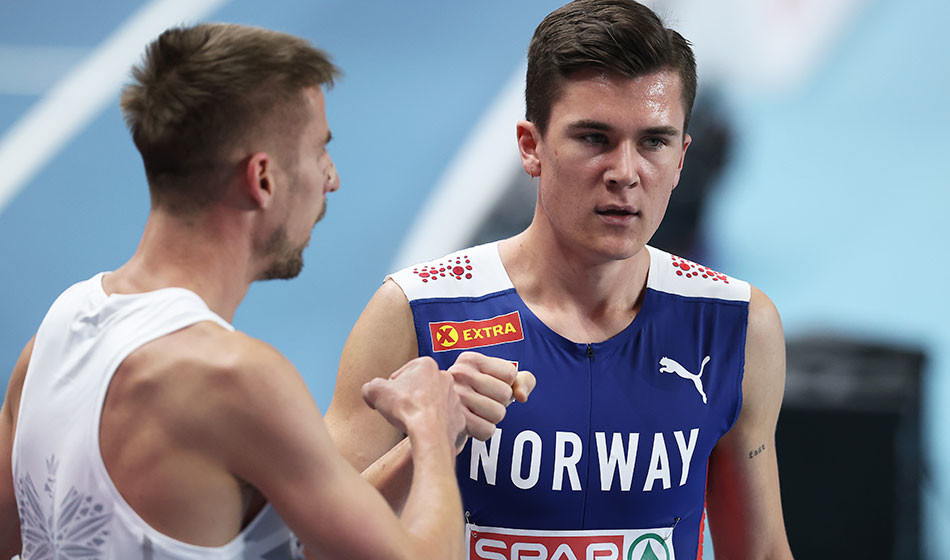
“If there’s a lot at stake then you’re obviously going to get more nervous than if it’s just a random race but I usually get really nervous – not only because of my expectations but it’s also about the pain [that comes] with racing. I don’t enjoy being in pain.”
He adds: “It’s difficult to describe but the 1500m is probably the most painful race because you are going out at such a high speed and after 500 metres you are really hitting a wall. But then, when you continue you don’t slow down, you just run faster and faster. Or at least that’s my experience.
“If you are really well prepared and you do what you need to do going into that race it’s going to end up pretty good and you’re not going feel that much pain after all. But I know, going into my next race, I get really nervous [again] because of the pain.
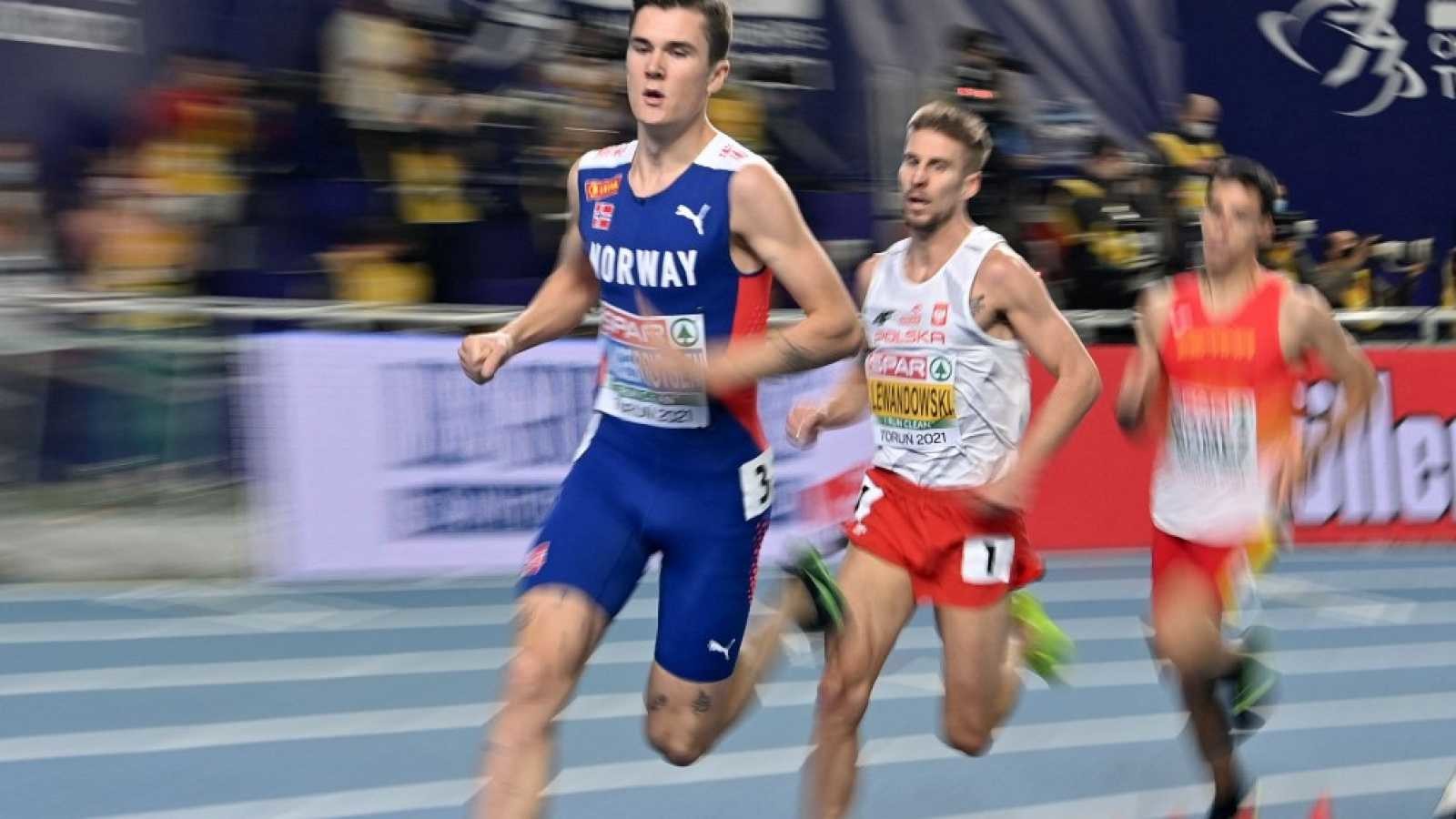
“But I think that’s my way of preparing myself physically and mentally for each race – to be nervous of the pain that’s coming but also to be awake and focused on the task so I can run as fast as possible.”
Expectation does now follow the 1500m European record-holder both indoors and out whenever he toes a start line. But the man who is coached by his father Gjert and trains with brothers Henrik and Filip is not usually one to dwell on outside opinion.
“Expectations are always a good thing but I usually don’t read comments from other people because I know I’m going to be really disappointed if I’m not winning,” he says.
“Even if I’m a worse runner than my competitors, I’ll still aim for finishing first.
“My mentality going into races is that I’m always going to win so I would say the expectations that I put on myself are always going to be a little bit harder to fulfil than everybody else’s.”
To achieve those goals, the Ingebrigtsen family is well known for laying the groundwork through a regime of threshold training. That is, finding the pace and the sweet spot where lactate levels are held stable rather than flooding the system.
Only just out of his teens, one of the most fascinating and exciting things about Jakob is that he is still growing and becoming stronger.
(04/07/2021) ⚡AMPby Euan Crumley, AW magazine
China´s Li Yiben, 80, breaks 5,000-meter Asian record for age group
How fast can you run at the age of 80 years?
China's Li Yiben's answer was a performance of 28:06 to finish 5,000 meters, breaking the Asian record for 5,000-meter race in the 80-year-old group.
Li did it in a track and field event in Huainan of east China's Anhui Province on April 3. He was competing in a 5,000m race in a mixed group of six. The other five were three men in their 50s and 60s, plus two women in their mid-30s.
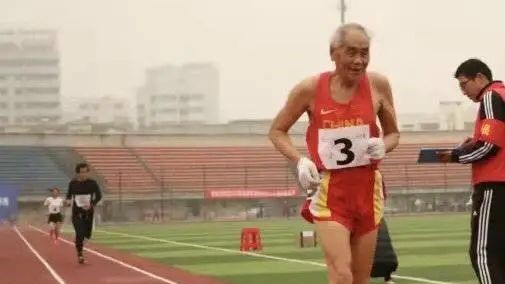
In the end, Li beat three competitors under mild rain and finished the race in the third place, surpassing the previous Asian record (31:05) by 2:59.
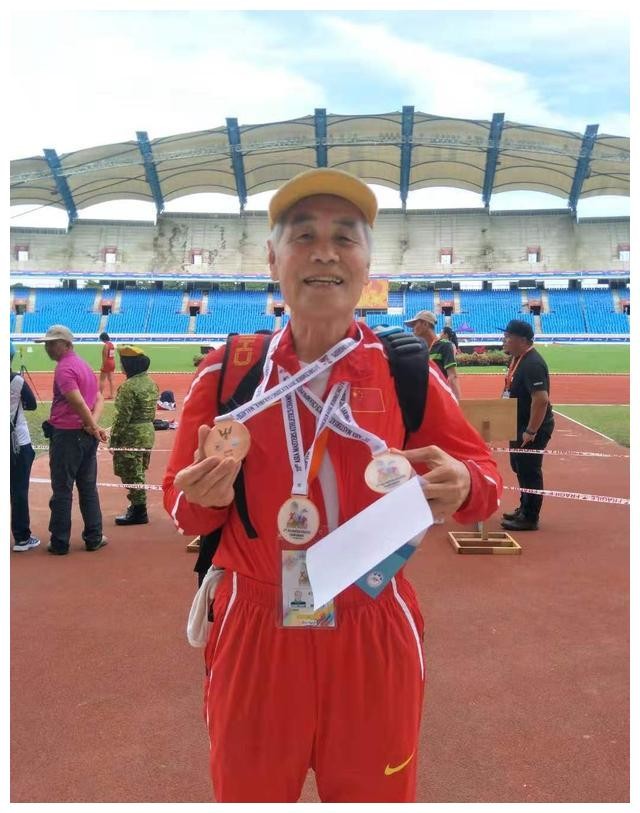
"This is tough. I have never worked so hard in my left," said Li after the race.
Li used to serve in the military when he was young. Back then he was a mountaineer. After being transferred to civil work in 1968, Li had to go over 20 kilometers from home to work. That's when he fell in love with running. Li would choose run to work every two or three days. Such hard workouts made him an incredible amateur track and field athlete.
After he retired in 1995, Li was able to invest more time in running and he did with every hour he had. In 1998, Li attended a 100-kilometer super marathon event and won the gold medal in senior group by finishing at 11:45:33, which was two hours faster than the national record.
Li participated in the national masters athletics games in 1999 and won four golds, breaking the Asian record in every competition he attended. One year later, he was invited to attend the Asia Masters Athletics Championships in India. Li was 0.8 seconds away from winning gold in the men's 400-meter race but claimed the title in the 800m competition.
In June 2001, Li went to Sydney to participate in the World Masters Athletics Championships. Though many of his opponents were retired professional athletes, Li still won the bronze medal in the 800m and finished sixth in the 5,000m race.
Li continued to appear at multiple editions of the above events in the following years and pocketed more medals and new records. Running has become a part of his life as he runs at least 5,000 meters everyday for the last 60 years. Running makes him feel younger, said Li.
(04/07/2021) ⚡AMPNN Mission Marathon has confirmed Netherlands as new location
The NN Running Team announced on Tuesday that the NN Mission Marathon has been relocated to Enschede, the Netherlands. The race, which organizers postponed on March 31, will take place on April 18, one week later than it was originally set to be run.
The event will feature about 70 athletes, including marathon world record holder Eliud Kipchoge, who will be looking to use the race as a chance to test his fitness ahead of this summer’s Tokyo Olympics.
The original plan for the NN Mission Marathon was announced in February, and organizers hoped to hold it in Hamburg. That plan fell apart in late March, when COVID-19 restrictions changed in Germany, ultimately making it impossible to hold any race in Hamburg in the coming weeks.
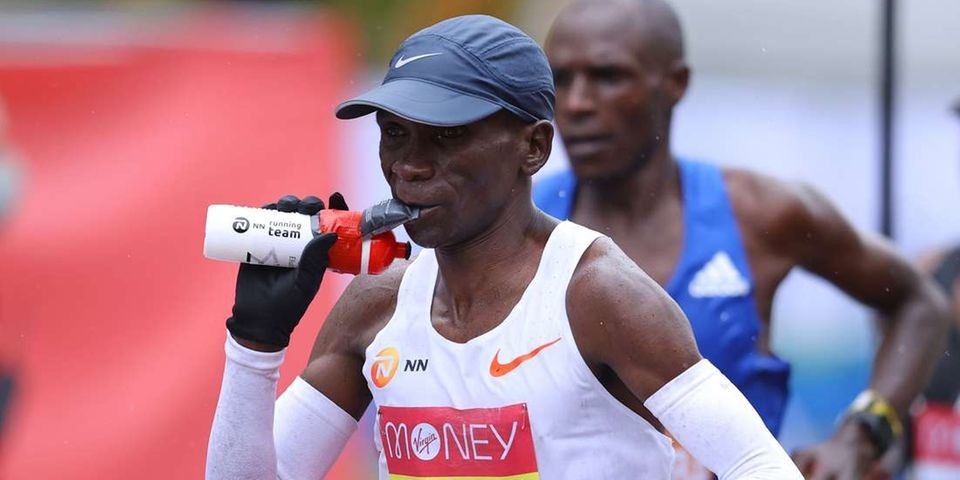
The NN Running Team announced the postponement and relocation of the Mission Marathon just over a week before the race date of April 11. The event was only pushed one week, which didn’t give event organizers much time to find a new host city for the race.
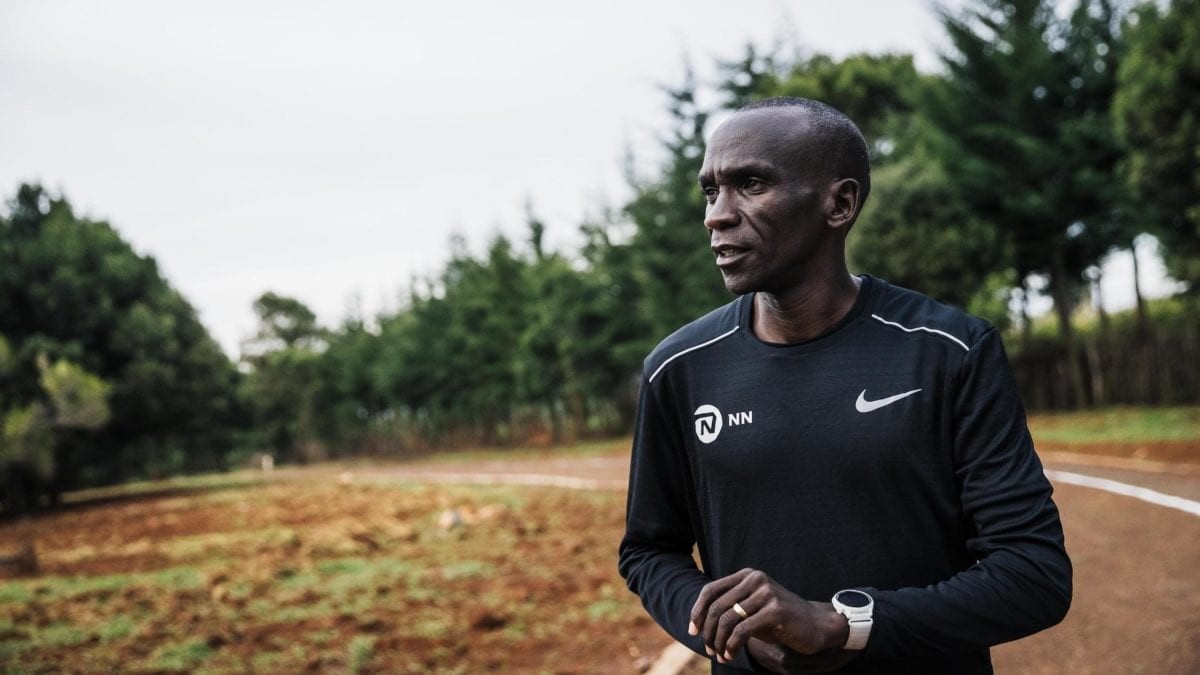
It turns out that they needed less than a week to do so, though, as the NN Running Team announced the official change of venue on Tuesday. The race will now take place at Twente Airport, which is about 12K outside of Enschede.
The NN Running Team’s postponement announcement likely created a lot of stress for many of the runners set to race the Mission Marathon. The event, after all, was organized specifically for athletes looking to hit Olympic standard in the marathon ahead of the Tokyo Games. With so few racing opportunities on the calendar, this could be the last chance for a lot of athletes to qualify for Tokyo, and when the race was rescheduled, these runners probably began to scramble as they searched for a backup event in case the postponement turned into an outright cancellation.
Kipchoge is already a lock for the Kenyan Olympic team, and he will be one of the favorites to win gold in the marathon this summer. Even so, he, too, probably breathed a sigh of relief when it was announced that the race can officially go ahead in the Netherlands, as there is still a lot riding on this race for him.
He doesn’t need to perform well to guarantee his ticket to Tokyo, but a good run at the Mission Marathon can silence any doubters who think he is past his prime.
Luckily for Kipchoge and the many Olympic hopefuls slated to run the Mission Marathon, the race is good to go in its new home in the Netherlands. It will be can’t-miss action on April 18, and seeing as there is so much on the line for these athletes, dramatic runs can certainly be expected.
(04/07/2021) ⚡AMPby Ben Snider-McGrath
NN Mission Marathon
Eliud Kipchoge will bid to resume winning ways in his last race before the Tokyo games with around 70 runners looking to make the Olympic qualification standard on April 18th in Twente.After suffering a rare marathon defeat in London last October, reigning Olympic champion Eliud Kipchoge makes his return at the NN Mission Marathon in 2021. It is set to...
more...British Olympian Tim Hutchings calls for records reset in hi-tech shoes era
World Athletics should introduce a new set of records for times set by athletes wearing high-tech footwear, said British Olympian Tim Hutchings, as debate continues over whether the shoes give runners an unfair advantage.
Footwear developed by Nike played a role in two of the biggest distance-running achievements of 2019, with Eliud Kipchoge's sub-two-hour marathon in Vienna and Brigid Kosgei's record-breaking run at the Chicago Marathon bringing the Vaporfly shoes into the spotlight.
While World Athletics banned the shoes from professional sport last year, Nike has launched a new version of its Alphafly footwear that complies with new rules introduced by the governing body.
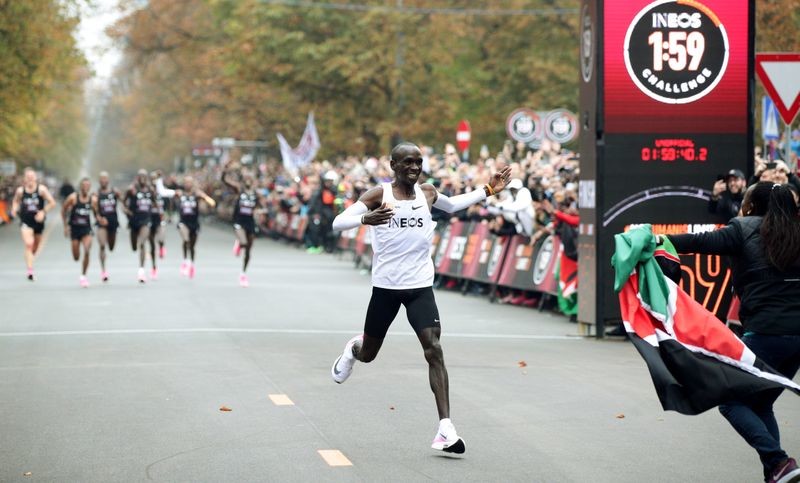
"People from many quarters are saying stop fussing about the shoes. Just move on and enjoy the racing. To which I'd respond, I've always enjoyed the racing and will continue to," Hutchings told The Times.
"But I want to enjoy and respect times as well, not just cast aside that element. A reset would enable this. The shoes are here to stay, sadly the genie is out of the bottle."

Kenya's Ruth Chepngetich shaved 29 seconds off the world half marathon record on Sunday and British triathlete Beth Potter is awaiting ratification of a world record time from a low-key 5km road race a day earlier.
Both athletes wore high-tech footwear made by different manufacturers.
"Let folk race and record new era personal bests," said Hutchings, who finished fourth in the 5,000m at the 1984 Los Angeles Olympics.
"A date needs to be identified retrospectively, then everyone would respect times in the right context. Athletes deserve that."
(04/07/2021) ⚡AMPLondon Marathon organizers will host a COVID-19 test event
London Marathon Events (LME) is set to host the Reunion 10K as the UK Government aims to gather scientific data on holding mass participation events during the COVID-19 pandemic.
The event on April 24 and 25 will be one of the pilots in the Events Research Programme, and is planned for Hatfield Park to the north of London.
It will consist of three separate 10-kilometer races, held over the weekend.
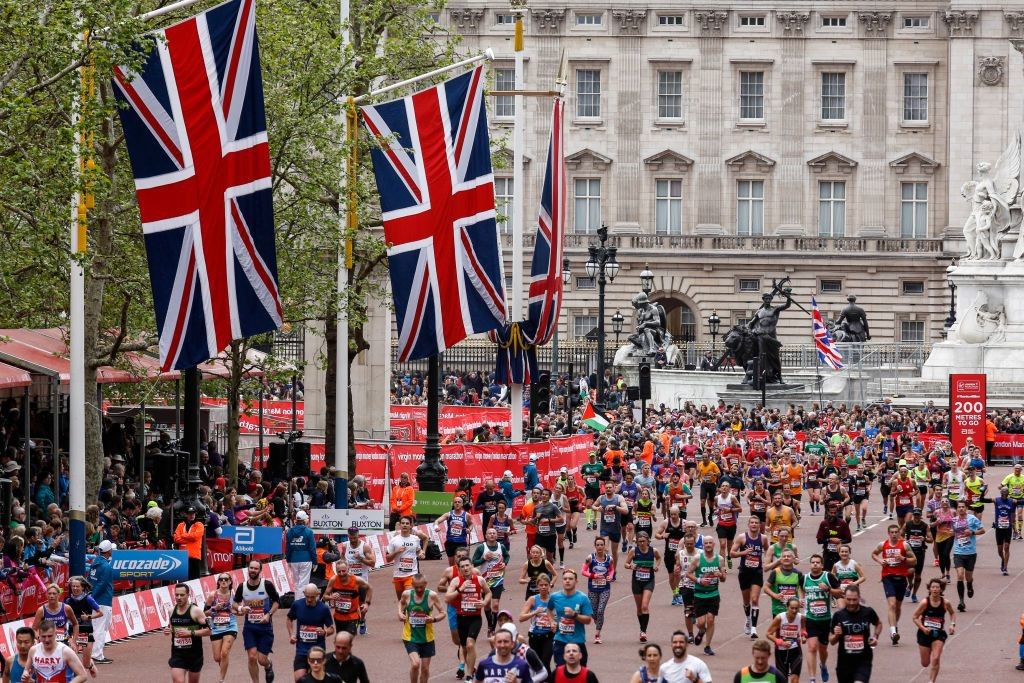
The format has been designed in cooperation with the Department for Digital, Media, Culture and Sport (DCMS), with the aim of understanding how mass participation events can go ahead as part of England's roadmap out of lockdown from June 21.
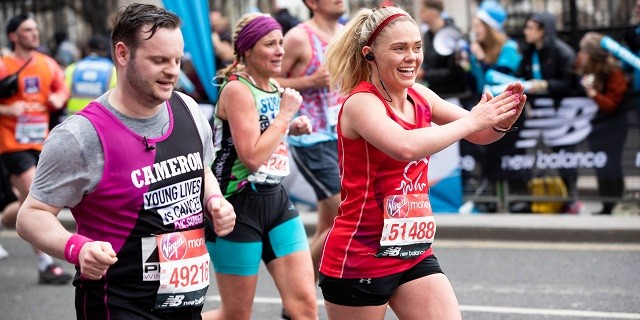
LME plans to have 3,000 participants and up to 3,000 spectators for each of the three races, which will all be configured slightly differently for data purposes.
The organization is working closely with Public Health England, Welwyn Hatfield Borough Council, Hatfield Park and other key stakeholders to host the event.
The races will collect scientific data from participants, spectators and staff which can be used to inform the DCMS as they plan a safe return for sport.
All attending the event will be required to take a COVID-19 polymerase chain reaction test before and after the event.
All will be asked if they have been vaccinated, but this will not be a requirement to attend.
Anyone testing positive before the event will not be able to attend, with participants having their entry fee refunded if they have.
"The Government's Events Research Programme is a very significant step towards the safe return of events and London Marathon Events, along with our fellow mass participation event organizers, is doing everything we can to assist the Government with this project," said Hugh Brasher, event director of LME.
"We would like to thank everyone involved for their support in putting on the Reunion 10K at Hatfield Park."
Entries will open on April 8.
It comes with the UK Government reportedly considering the introduction of COVID-19 vaccination passports, which would restrict the public from attending large events without being vaccinated.
This would not restrict people from attending pubs or restaurants or travelling on public transport, but it could stop non-vaccinated people from attending sporting events, as well as nightclubs and theatres where social distancing would be difficult.
(04/06/2021) ⚡AMPby Michael Houston
TCS London Marathon
The London Marathon was first run on March 29, 1981 and has been held in the spring of every year since 2010. It is sponsored by Virgin Money and was founded by the former Olympic champion and journalist Chris Brasher and Welsh athlete John Disley. It is organized by Hugh Brasher (son of Chris) as Race Director and Nick Bitel...
more...California International Marathon registration opens April 6
After being cancelled due to the pandemic in 2020, it appears the California International Marathon is on track to return this year. Registration opens at 9 a.m. Tuesday for the marathon, which travels from Folsom to Downtown Sacramento. This year's race is scheduled for Dec. 5.
An announcement from the Sacramento Running Association, which organizes the marathon, says "certain event details and amenities are still being determined due to changing health guidelines."
In a social media post, event organizers said the "participant cap is still somewhat uncertain," and registrations will be accepted on a first-come, first-served basis.

People who were registered for last year's marathon received a voucher for entry into a future California International Marathon through 2023. If you plan to use your voucher, you still need to formally register for this year's race. Additional information is available online.

The event has attracted thousands of participants and spectators in the past.
Indoor events to resume
Marathon registration isn't the only sign of a slight return to normalcy. Most of California will be allowed to reopen indoor venues for performances, conferences and other events by April 15, state officials announced Friday. Indoor events were among the first activities to be closed as the Covid-19 pandemic touched down in California last year.
As larger parts of the population become vaccinated, California is ready to loosen its restrictions around events, state public health officials stated.
(04/06/2021) ⚡AMPby Sonya Sorich
California International Marathon
The California International Marathon (CIM) is a marathon organized by runners, for runners! CIM was founded in 1983 by the Sacramento Running Association (SRA), a 501(c)(3) non-profit organization. The SRA Board of Directors is comprised of runners with a combined total of 150+ years of service to the CIM. The same route SRA management created for the 1983 inaugural CIM...
more...2021 Little Rock Marathon Unveils its Medals
The Little Rock Marathon unveiled its 2021 finisher’s medals this weekend as it continued preparing for another sell-out event in the fall.
The 2021 Little Rock Marathon Race Weekend was originally slated for March 5-7, but was pushed back to November 19-21 to accommodate necessary changes due to COVID-19. This year’s race will again be held in downtown Little Rock and will benefit Little Rock Parks & Recreation.
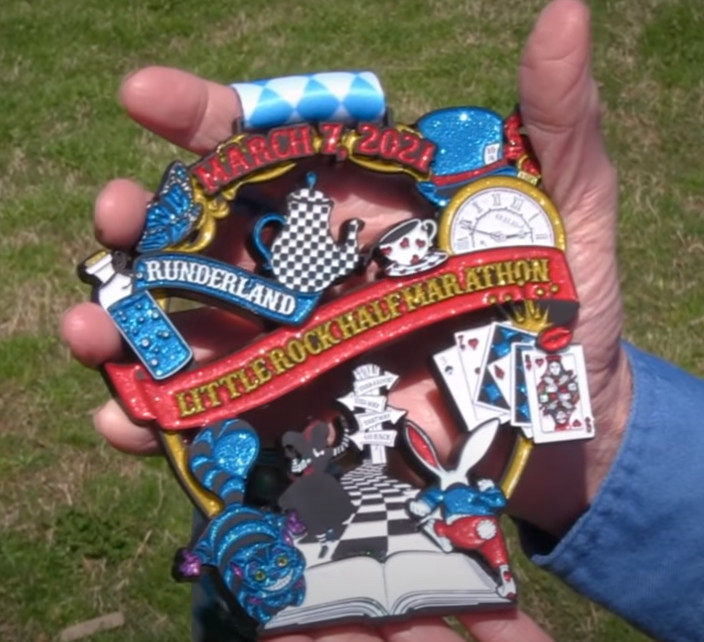
“For many years, the Little Rock Marathon medals have set a standard in the marathon industry,” said Geneva Lamm, Executive Director of the Little Rock Marathon. “Our medals are an extraordinary keepsake that celebrates each participant’s finish.”
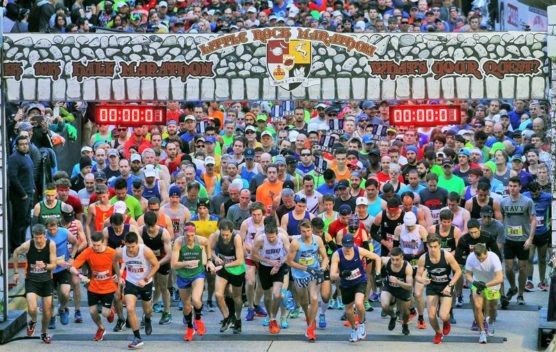
The 2021 family of finisher medals feature the race’s whimsical Runderland theme. This year’s marathon medal weighs more than 3 pounds. According to Lamm, the medal is a significant factor in the event’s growing popularity and sold-out races each year.
Other events taking place during race weekend include the Little Rock Marathon Health & Fitness Expo, the Little Rock Marathon, presented by the Arkansas Democrat-Gazette, the Little Rock Half Marathon, presented by Baptist Health, the Little Rock 10K, the Little Rock 5K, presented by Arkansas Federal Credit Union, and the Little Rockers Kids Marathon, presented by the Hatcher Agency.
The 2021 Little Rock Marathon is also sponsored in part by the Little Rock Convention & Visitors Bureau, the Heart of Arkansas, Premium Refreshment, Little Rock Marriott, Golden Eagle of Arkansas, Rock City Running, Loreal USA, KTHV Channel 11, Fence Brokers, and DataMax Office Systems.
Registration will be available online through 11:59 p.m. CST Friday, Nov. 12, 2021 or the race is sold out.
(04/06/2021) ⚡AMPLittle Rock Marathon
The mission of the Little Rock Marathon is provide a premier event open to athletes of all abilities, while promoting a healthy lifestyle through running and walking and raising money for Little Rock Parks & Recreation. Since inception in 2003, more than $1,093,000 has been donated to Little Rock Parks & Recreation. Little Rock Marathon Race Weekend is held the...
more...North Korea has withdrawn from Tokyo 2020 after the country cited coronavirus fears.
North Korea withdraws from Tokyo 2020 over COVID-19 fears.
A statement on the secretive state's official Sports in the DPRK Korea website said authorities want to "protect athletes".
The country has become the first to pull out of the rearranged Tokyo 2020 because of COVID-19.
Its decision comes just under a week after South Korean capital Seoul announced it had submitted a joint bid with the North for the 2032 Games to the International Olympic Committee (IOC).
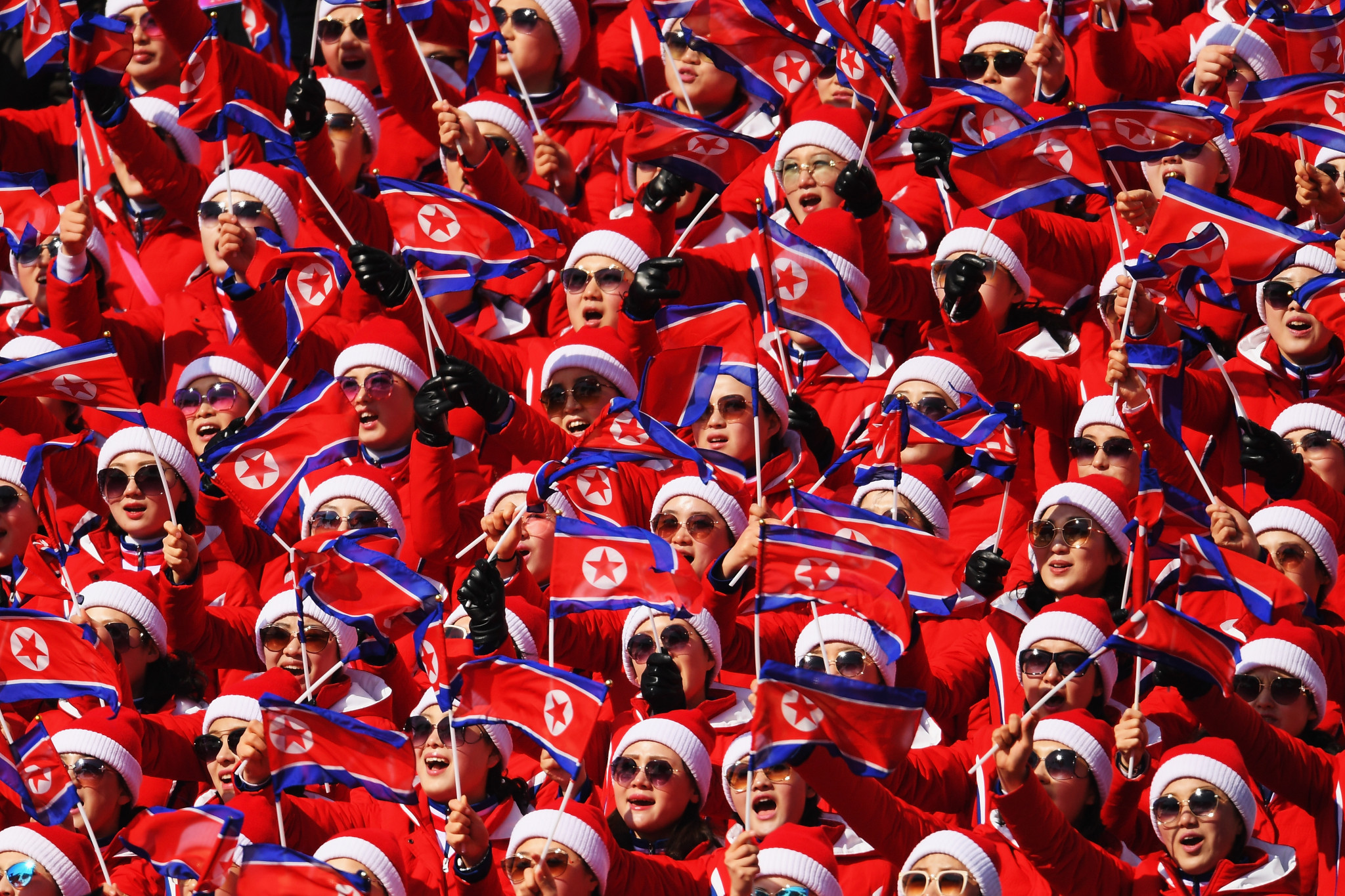
South Korean President Moon Jae-in had also said he wanted Tokyo 2020 to be an opportunity for dialogue between the bordering nations, which remain technically at war.
The Olympic Committee of the Democratic People's Republic of Korea held a General Assembly to discuss the Games in Japan.
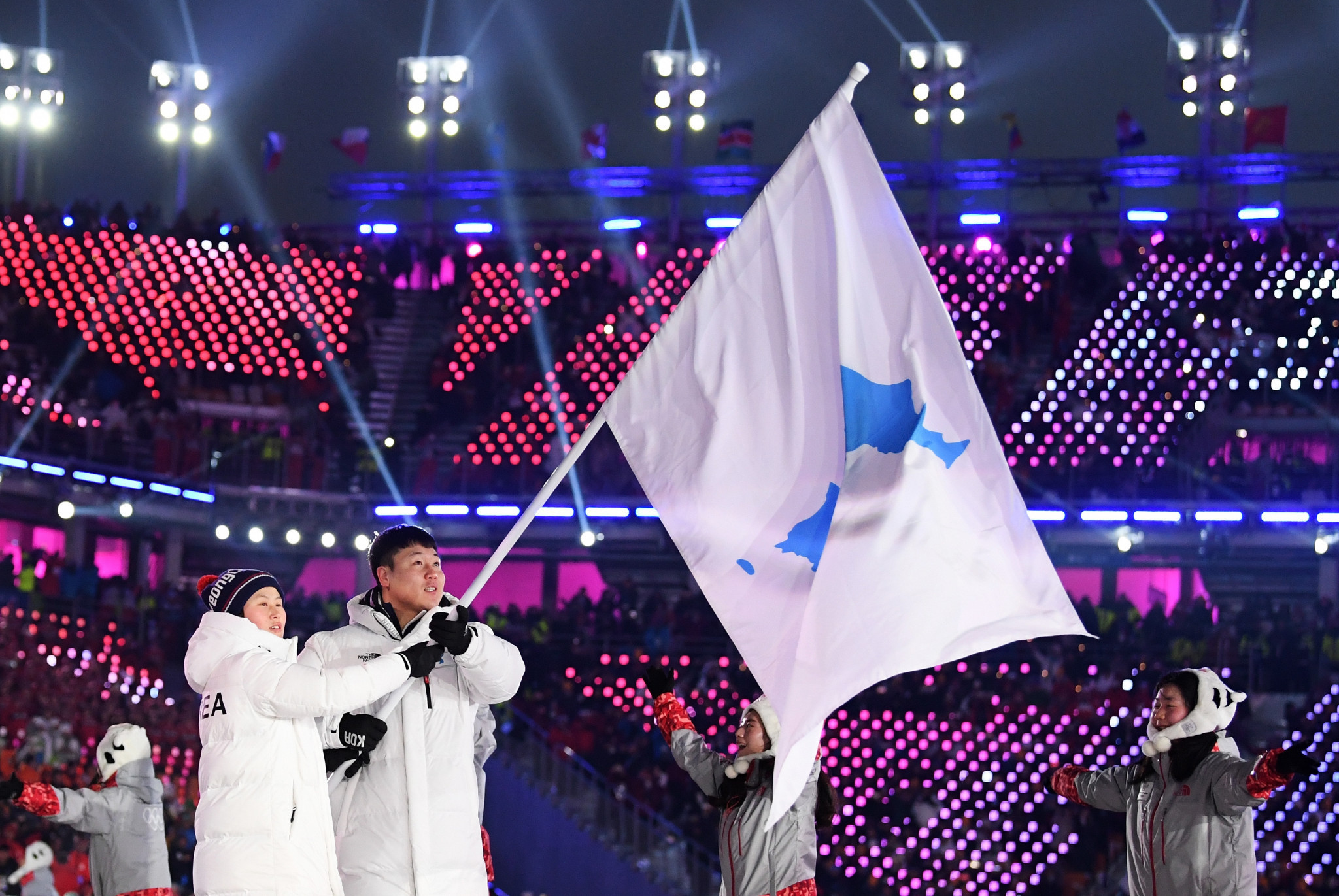
"The Democratic People's Republic of Korea has decided not to participate in the 32nd Olympic Games during the General Assembly to protect our athletes from the global health crisis situation related to the coronavirus as proposed by committee members," a statement said.
North Korea shut off its borders in January 2020 as the coronavirus pandemic first began to take hold.
The country has claimed it has no COVID-19 cases but this is believed to be unlikely.
In 1988, North Korea boycotted the Summer Olympics in the South's capital Seoul, but they were welcomed with open arms when their neighbour hosted the 2018 Winter Games in Pyeongchang.
A unified team took part in the women's ice hockey tournament and the two countries marched together at the Opening and Closing Ceremonies under a joint flag, with peace a key message.
The withdrawal from Tokyo will likely be felt particularly keenly by IOC President Thomas Bach, who has worked to improve sporting relations on the border and visited North Korean leader Kim Jong-un in Pyongyang in 2018.
He accepted the Seoul Peace Prize in October for his work and had previously discussed with Moon the possibility of the joint Olympic bid for 2032.
Pyongyang's relations with the west have been tense in recent years, particularly due to its nuclear programme and missile launches.
Tokyo 2020 host Japan's dealings with North Korea are particularly strained, with Pyongyang accused of abducting dozens of Japanese citizens in the 1970s and 1980s.
In 2017, Kim fired missiles over Japan and another launch into the sea last month again raised fears about the country's weapons expansion.
Former American President Donald Trump held high-profile talks with Kim in 2019 but the North's destruction of a joint liaison office on its side of the border in June highlighted how tensions have risen.
The Tokyo 2020 Olympics, which were postponed by a year due to COVID-19, are due to open on July 23.
North Korea won seven medals at the last Summer Games in Rio de Janeiro in 2016 - including two golds in weightlifting and gymnastics.
(04/06/2021) ⚡AMPby Dan Palmer
Tokyo 2020 Olympic Games
Fifty-six years after having organized the Olympic Games, the Japanese capital will be hosting a Summer edition for the second time, originally scheduled from July 24 to August 9, 2020, the games were postponed due to coronavirus outbreak, the postponed Tokyo Olympics will be held from July 23 to August 8 in 2021, according to the International Olympic Committee decision. ...
more...2021 B.A.A. 10K and Half Marathon will be held virtually
The 2021 B.A.A. 10K and the 2021 B.A.A. Half Marathon will be held virtually this year, the Boston Athletic Association announced Monday.
The B.A.A. 10K, which is presented by Brigham and Women’s Hospital, will have virtual race dates from June 25-27. The B.A.A. Half Marathon, presented by Dana-Farber Cancer Institute and the Jimmy Fund, will take place from September 17-19.
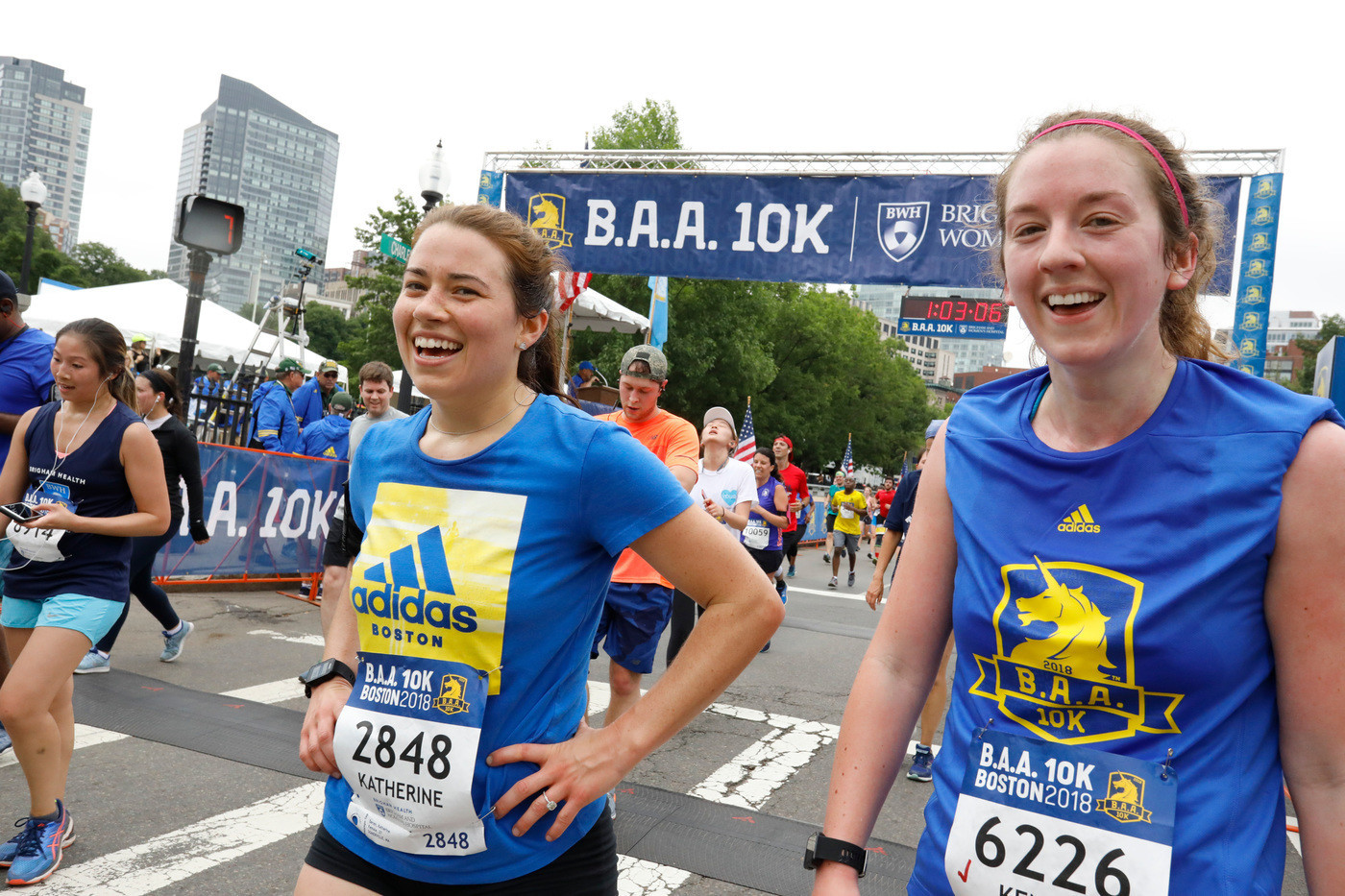
“Runners around the world can earn the signature unicorn medals and be active through the B.A.A. 10K and B.A.A. Half Marathon,” B.A.A. President and CEO Tom Grilk said in Monday’s release. “We look forward to continuing to engage new and experienced runners globally in the sport of running and helping people pursue active lifestyles.”
Runners can register for this year’s virtual 2021 B.A.A. 10K starting at 10 a.m on Tuesday, April 6, through the B.A.A.’s online platform Athletes’ Village. Runners can create a free Athletes’ Village account prior to the registration opening. All entrants will receive a virtual B.A.A. 10K toolkit, which will have signature race elements such as a printable champion’s breaktape, mile markers and and cheer cards.
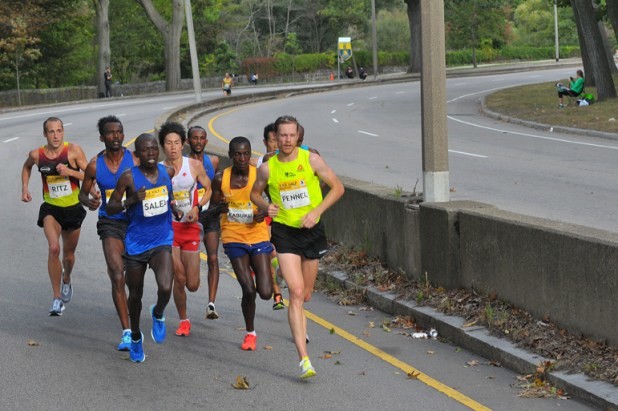
Registration dates and information for the virtual B.A.A. Half Marathon will be announced at a later date.
Both events are anticipated to return to an in-person format in 2022.
(04/05/2021) ⚡AMPB.A.A. 10K
The 6.2-mile course is a scenic tour through Boston's Back Bay. Notable neighborhoods and attractions include the legendary Bull and Finch Pub, after which the television series "Cheers" was developed, the campus of Boston University, and trendy Kenmore Square. ...
more...The importance of hydration during your runs
Why Hydration Matters
Dehydration in athletes may lead to fatigue, headaches, decreased coordination, nausea, and muscle cramping. Proper hydration is critical for preventing heat-related illnesses, such as heat stroke, which can have serious consequences.
Aside from all that discomfort, dehydration slows you down. One study showed that even a "small decrement in hydration status" on a warm day impaired runners' performance conditions affect your rate.

Signs of Dehydration

Be aware of the signs that you need more fluids. Early symptoms include:
Thirst, Dry mouth, Feeling fatigued or sluggish.
As dehydration progresses, symptoms can include:
Headaches, Muscle cramps, Nausea, Fatigue.
Pre-Run Hydration
Especially if you're doing a long run or race (more than 8 to 10 miles), it's important to make sure you're well-hydrated during the few days leading up to your long run. You know you're well-hydrated if you void large volumes of pale urine at least six times a day.
Drink plenty of water and non-alcoholic fluids. Not only does alcohol dehydrate you, but it can also prevent you from getting a good night's sleep. It's not a good idea to run with a hangover, because you'll most likely be dehydrated when you start running.
An hour before you start your long run or race, try to drink about 16 ounces of water or other non-caffeinated fluid. Stop drinking at that point, so that you can void extra fluids and prevent having to stop to go to the bathroom during your run.
Drinking on the Run
You will need fluids every 15 to 20 minutes during your run, so you need to either carry it with you or make sure it is available along the way (say, at a drinking fountain or by running a loop that takes you back to your home or car where you have extra water). Drinking small amounts frequently helps your body absorb the liquid better, and you won't have that feeling of it sloshing around in your stomach.
Set a timer on your watch or phone to prompt you to drink. Or use landmarks or mile markers as reminders. One study found that athletes who had a hydration plan and wrote it down drank more than those who didn't have a plan.
If you forget to drink and get behind on hydrating, it's hard to catch up. You may have to walk for a bit to conserve energy and cool down.
If you have to carry your own fluids with you, try handheld bottles, packs (like backpacks or vests), or fuel belts; it's a matter of personal preference. However, if you're running in a race, you shouldn't have to carry fluids because there will be water stops on the course.
Post-Run Hydration and Recovery
Don't forget to rehydrate with water or a sports drink after your run. Some people feel the effects of dehydration hours after their run because they failed to drink enough fluids after they finished. Weigh yourself after your run. You should drink 20 to 24 fluid ounces of water for every pound lost. If your urine is dark yellow after your run, you need to keep rehydrating. It should be a light lemonade color.
Common Hydration Mistakes
Staying alert to these common problems can help you stay healthier and more comfortable during your runs.
Drinking Too Little
Make a plan and stick with it. Be careful not to run out of water during a long run. You can't always count on drinking fountains (they can break) or stashing water along your route (someone might take it, or it will get too hot to use).
Drinking Too Much
The issue is not so much taking in too much liquid. It's drinking too much without replacing sodium, which can lead to hyponatremia. If you gain weight during a run, you are drinking too much. Add in a sports drink, salt shot, or salty snack to replace the sodium you're losing when you sweat.
Drinking the Wrong Fluid
As noted, drinking plain water when you need electrolytes could be trouble. It's also a problem to drink something new and different during a race. Work out your hydration plans and preferences during training, or else your performance (or stomach) might suffer.
Gulping Instead of Sipping
When you're running, your digestive system slows down because blood is diverted away from it. So taking giant gulps of water can be hard on your belly. Try small sips instead—even immediately after your run, when you might feel like chugging a whole bottle of water. Take it slow.
(04/05/2021) ⚡AMPby Christine Luff
2016 Scotland’s Olympian Beth Potter breaks 5K world record with 14:41 run in Great Britain
Scottish runner-turned-triathlete Beth Potter beat the 5K road world record on Saturday at a race in Barrowford, U.K., about an hour north of Manchester, where she ran an amazing 14:41. Organizers of the race, which is called the Podium 5K, say their course is the fastest in Great Britain, and Potter’s run certainly bolsters that claim.
Potter bettered the previous world record of 14:43 (which Kenya’s Beatrice Chepkoech set in Monaco in February) by two seconds.
According to fastrunning.com, Potter missed the start of the women’s race, but she was luckily permitted to run in the ‘B’ wave of the men’s event. While missing the start of a race is a nightmare that haunts all runners, this actually might have helped Potter, as she had other 14:40-range athletes to run with who could push her right to the finish.
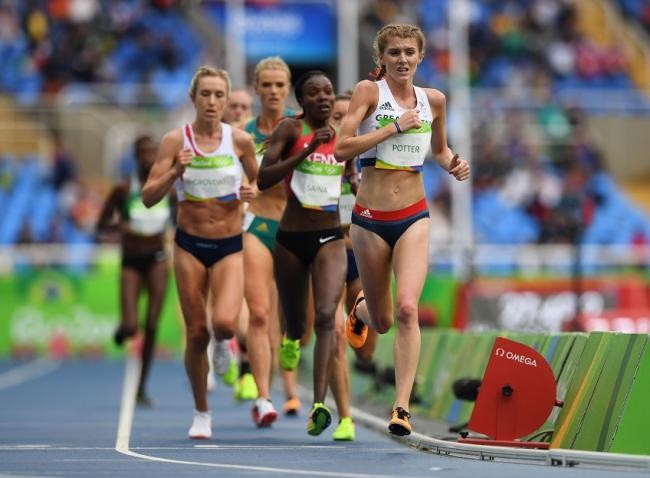
She very well could have beaten the record had she run with the women’s field, but having constant competition no doubt helped her mentally. When Potter crossed the finish line, she was visibly surprised to see the clock.
Potter’s time beat Chepkoech’s world record by two seconds and Paula Radcliffe‘s British 5K record of 14:51 by 10 seconds. She also smashed her own 5K PB of 15:24 — a time she ran at the same race in Barrowford last year.
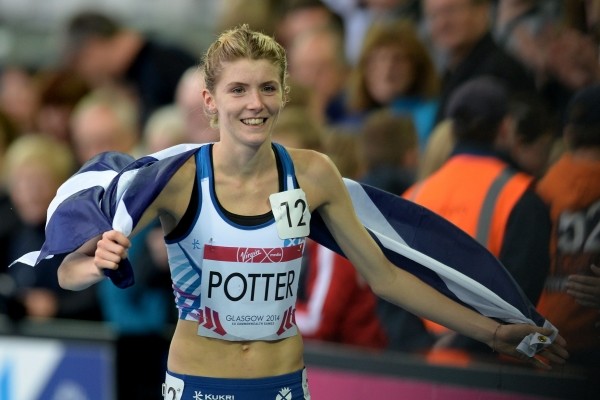
It is important to note that, while Potter bettered the world record (a result that World Athletics reported is unlikely to be ratified), one woman has run a road 5K faster. In September 2017, Kenya’s Joyciline Jepkosgei ran a 14:32 5K split en route to the 10K world record at a race in Prague. At the time, though, World Athletics (then IAAF) did not recognize the 5K as a world record event, and even though Jepkosgei’s run is the fastest in history, it’s not the official world record.
In no way does this diminish Potter’s result, and regardless of whether her run is ratified as the world record, she officially owns one of the fastest 5K runs in history.
ASICS Metaspeed
Not only did Potter’s record support the claim made by race organizers that their course is the fastest in the U.K., but it is also great for ASICS, her main sponsor, as she wore the company’s new shoe — the Metaspeed Sky — in her win.
The Metaspeed is the latest carbon-plated shoe from ASICS, and it’s the company’s response to Nike in the “super shoe” race. ASICS only just released the Metaspeed at the end of March, but Potter has already delivered the shoe’s first world record.
Turning to triathlon
Potter represented Great Britain at the 2016 Olympics and 2017 world championships in the 10,000m. She is also a former 10,000m British champion. According to Athletics Weekly, when she struggled to find sponsors in running, Potter decided to switch sports and focus her attention on triathlon instead of the track.
(04/05/2021) ⚡AMPby Ben Snider-McGrath
2021 Volkswagen Prague Marathon set for October 10
Throughout the pandemic and against all odds RunCzech has found dozens of creative ways to stage safe, small running events, along with other ways of keeping the running community engaged.
But finding an opportunity to stage its signature event—the internationally acclaimed Volkswagen Prague Marathon—has eluded them until now.

Health and public officials feel that moving the race to the autumn will make it possible for RunCzech to safely host a large-scale event, and accommodate the thousands of fans and volunteers who will come out to support the participants on October 10.
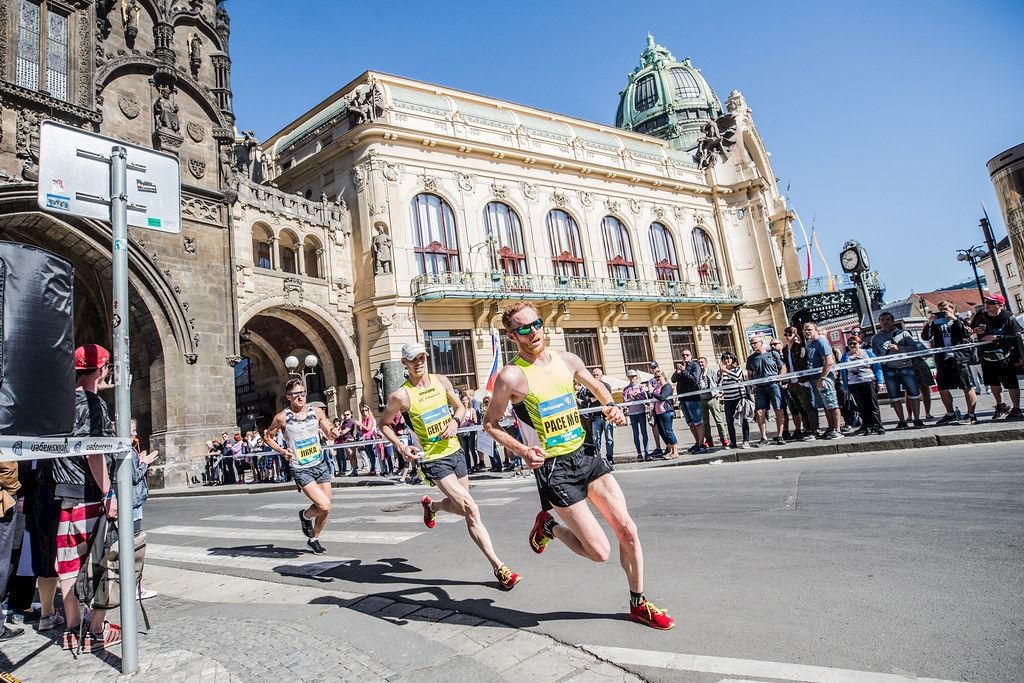
Starting numbers will be in high demand. The capacity of the event will be determined with health and government officials with the priority being runners‘ safety and health.
Runners who registered in 2020 will have the option of transferring their registration to 2022.
RunCzech will also stage a bonus event, the Volkswagen Prague Virtual Marathon from 3–31 May, limited to 10,000 participants. Priority will be given to those who entered the Volkswagen Prague Marathon 2020.
(04/05/2021) ⚡AMPPrague Marathon
The Volkswagen Prague International Marathon is considered by many, to be one of the top 10 marathons and invariably contains a number of high profile runners. Winding through the streets of one of Europe's most beautiful cities it is a spectacular race. And with a mainly flat course there is the chance for a personal best. Since its inception in...
more...The science behind the runner's high
Have you ever finished a run and felt like you could take on the world? Or returned from a jog in a better mood or with greater mental clarity than when you set out? Then you’ve likely experienced the ‘runner’s high’ and will understand why, during times of stress or needing to calm a busy mind, running seems the perfect remedy.
“It begins with this peace of mind and then a greater ease of movement, a sense of power and confidence, optimism and hope, and you will often hear runners describe feeling loving and connected to everyone and everything,” explains Kelly McGonigal, a psychologist, educator and author of The Joy of Movement. “So, what could possibly be going on in the body and the brain that would make you feel powerful, hopeful, faster, more confident and more loving?”
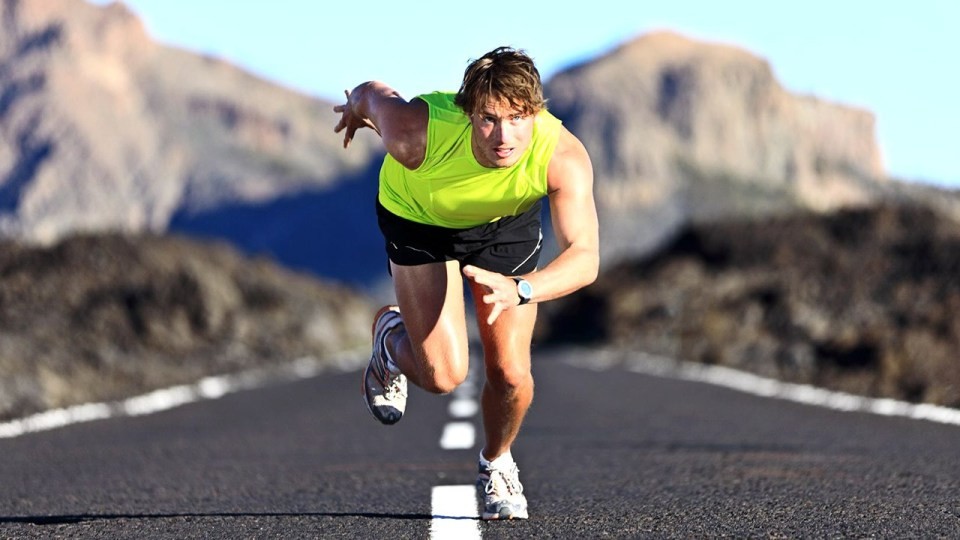
Speaking during this week's World Athletics 'Run Anywhere' Webinar in collaboration with Mass Participation World, McGonigal answered that question, plus many more.
“It turns out that it’s caused by a really reliable change in brain chemistry that kicks in once you have been in continuous motion for about 20 minutes and it’s not only the endorphin rush that so many people have heard about,” McGonigal explains, as she delves into the science behind the runner’s high.
“The runner’s high is primarily driven by endocannabinoids, which are the brain chemicals that cannabis mimics, but when you are running and endocannabinoid levels naturally increase, that is what produces this powerful sense of an inner peace, empowerment and connection to others.”
Run to become a better you
“The thing that I find so fascinating about the runner’s high is it is like the perfect neurobiological change to make you a better version of yourself,” McGonigal tells Chris Robb, CEO and founder of Mass Participation World, during the webinar. “I think that is why so many people go for a run and then they feel like they can take on the world.
“And it lasts for hours. So even though you might only feel that peak high during a run or just after the run, we know that those brain changes last and they create this upward spiral, so people often report feeling less stressed, getting more things done and having better interactions with other people, for hours after a run.”
Hunting that high
“There are a few things you can do if you want to get the high a little bit faster,” McGonigal says. “For example, listening to music early in a run can actually kick start the process – release more endorphins and dopamine and adrenalin – so that you can start to feel some of that high sooner.
“The more you run or exercise, your brain actually learns how to more reliably produce that high. Part of that is because exercise, and running in particular, has this interesting effect on your brain where it strengthens your reward system and that includes endocannabinoids and endorphins. All the brain chemicals that make you feel good and that help you be motivated – exercise actually strengthens that system so that it kicks in sooner, you can sustain it longer and you get a bigger jolt of joy, hope or pride, from anything that would naturally trigger that system, and part of that includes the runner’s high.
“It seems to take about six weeks of regular training for people to see these structural changes in the brain that make it easier not only to get the runner’s high, but to experience more joy, pleasure, hope and motivation in everyday life. This is one of the reasons that running is such a powerful antidepressant and so good for our mental health, because it changes the brain in this way.”
Moving forward together
One of the many challenges posed by the pandemic has been the restriction on in-person interactions, with virtual and solo events having replaced mass participation races. As we edge closer to the return of more traditional event forms, that could further impact our enjoyment of the activity, McGonigal adds.
“Humans have always needed to move together to survive and to thrive. A race or an event is basically a way to rehearse our fundamental human interdependence,” she says. “We know that when you move with other people, you feel like you are part of a pack and you are all headed in the same direction, even if there’s an element of competition in there – your brain interprets that as being a part of something bigger than yourself.
“There are all sorts of words that people use to describe it – there’s ‘muscular bonding’, ‘we-agency’ and ‘collective joy’ – but we know that we are wired to experience a massive endorphin rush when we move with other people. A sense of being connected and a sense of collective strength. What could be a better way to experience that than moving forward together?
“So many people experience that when they are part of a race but also what I have heard from so many people who engage in races is also that powerful ability to support other runners and to receive help from other runners, whether it is getting water at an aid station or encouraging someone who has slowed down a little bit and telling them that they can do it. There is something about a race that allows you to really lean into what it means to be a part of a collective effort where sometimes you are the one who needs that extra help and encouragement and sometimes you are the one that has something to offer.
“I wouldn’t underestimate the role that the aspect of events play in why people feel this tremendous sense of togetherness. That is what we need to do for all sorts of crises and challenges in life – we need to learn how to be open to the support that is available to us and also tap into our inner strength to keep going and look for how we might be able to reach out and help others.”
Green exercise
While all movement can lead to experiencing the ‘runner’s high’, McGonigal highlights the additional benefits of getting outside. “People who exercise outdoors report some really profound experiences – a tremendous sense of relief of anxiety, a feeling of being at peace or at one with the universe,” she explains.
“There is something going on when people run outdoors, it’s almost like people are having a switch flipped in their brains that puts them into this transcendence state. As it turns out, we now know from studies that when people are active outdoors it actually creates a kind of focus, mindfulness and mind quieting that looks a lot like what happens if you train in meditation for decades and spend tens of thousands of hours learning to focus the mind and calm the mind – people experience this spontaneously when they run in nature. That is part of what makes ‘green exercise’ so special. It can be a really spiritual experience for a lot of people.
“People report really feeling connected to life itself. When we are out in nature, we shift into a state of having to be aware of our environment and that really is part of what it means to be human – to figure out how to navigate the world and how to be a part of the natural world.
“When you’re talking about trail running or really challenging races, you are getting literal physical feedback from your body that says who you are is tough, who you are is capable, who you are is someone who can adapt and push through and persevere and figure things out and put one foot forward even when every cell in your body is screaming to stop. Once you have that embodied knowledge of your own strength, when other challenges come up in life, it kicks in. It is a physical memory that you are someone who can overcome obstacles, that you can do things that other people can’t or other people won’t, that when part of you wants to give up, you already know there is a part of you that will choose to keep going when it matters and that you can trust that part of yourself.”
Did you know?
“There is bacteria in dirt that actually acts as an antidepressant when you inhale it, like when you kick up dirt on the running trail,” McGonigal smiles. “It’s like in order for us to be at peace, we actually need to literally breathe in the natural world.
“It doesn’t have to be ideal running weather – it can be in the rain, it can be in the cold. Research shows that being in different types of weather and environments can bring out different benefits of green exercise. Even in the cold and rain, don’t be afraid of the outdoors. Often when you give in to allowing yourself to be a part of it, you can reap the benefits even if it’s not the ‘perfect’ run day that you imagined.”
(04/04/2021) ⚡AMPby World Athletics
8 reasons to give ultrarunning a try
Ultramarathons are pretty daunting, but you should run one anyway
This might be a tough sell, but you should run an ultramarathon. We know that the idea of running 50K, 100K or even more might not sound like something you want to do, but that could just be because you haven’t trained properly for it. After all, when you first started running, 5Ks, 10Ks and regular marathons probably sounded daunting, but you trained well and got through them. Not convinced? Here are a few more reasons to at least consider testing the waters of ultramarathons at some point in your running career.
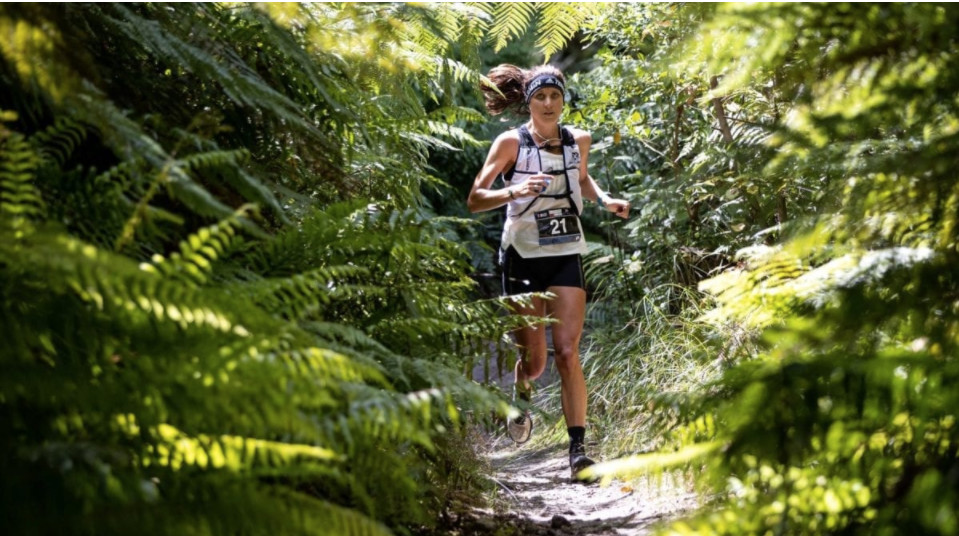
Bragging rights
We don’t recommend doing anything simply for the attention it may bring you, but there’s no denying that ultrarunning will impress people. Most non-runners will be impressed if you tell them that you’ve run a marathon before, so you’ll blow their minds when you say you ran an ultra. A lot of people don’t even know what an ultramarathon is, and when you tell them how far you ran, they’ll think you’re amazing.
Mental challenges
Any long-distance race requires mental toughness, but the farther you go, the more you need it. Venturing past 42.2K will take you from a mostly physical endeavour to a mostly mental one, and that’s when you’ll learn more about yourself. Plus, you’ll become stronger mentally thanks to ultras, and you can apply that mental toughness to every other type of race you enter in the future, which will only help you on the course.
You could become obsessed with it
Some people might view this as a reason not to take up ultrarunning, but we think it’s definitely a reason to do it. As unattractive as running 100 miles might seem right now, after your first 50K, you shouldn’t be surprised when you feel the need to enter another ultra-distance race. Even if you tell yourself something like “Never again” during the race, we’re willing to bet that you’ll be asking “When can I do that again?” after you reach the finish line
More racing opportunities
If you add ultra distances to your list of options when picking your race schedule, you’ll only be increasing the number of racing opportunities in your life. Can’t find a marathon to race on a certain weekend this summer? If you’re open to running farther than 42K, you have more of a chance to fill that slot with an ultramarathon.
The community
Everyone who has done an ultra mentions the community and how great it is. The running community in general is awesome, but as you get into more and more specific groups within the sport, that we’re-all-in-this-together kind of feeling only intensifies. Also, since an ultra is such a huge undertaking, bonding with your fellow athletes is even easier than usual, because you’re all in for the same long and arduous experience.
It’s not over until it’s over
If you’re an athlete who races to win, then an ultramarathon is a great place for you, because no gap is insurmountable. You could be an hour behind the race leader, but in a run that lasts dozens of hours or even multiple days, that’s nothing, and it’s 100 per cent possible to chase them down and take the win. In a marathon, on the other hand, even just a 10-minute gap can be impossible to overcome.
It’s not permanent
Just like any kind of race, if you enter an ultra and don’t like it, you can leave that part of your life behind and never try it again.
It could be your forte
Working off that fact, there’s also the chance that you’ll fall in love with ultrarunning and actually be quite good at it. If you don’t try, you’ll never know. If you do try and you don’t like it, you can forget about it, but if you love it, then it can become your new go-to type of racing.
(04/04/2021) ⚡AMPby Running Magazine
High school runner crawls across finish line to sub-9 two-mile
Gavin Sherry collapsed right before the finish line and crawled to an 8:57.67
Last weekend, the track world was impressed yet again by another incredible performance by high school phenom Hobbs Kessler, who closed a two-mile race with a 55-second final lap, crossing the finish line in first place in 8:39.04. Given that Kessler was 10 seconds ahead of the second-place finisher, it would have been easy to miss the action that happened behind him, but those who stuck around got to watch as Connecticut runner Gavin Sherry collapsed in the final few metres of the race and crawled to the finish line in 8:57.67.

It looked as though Sherry would cross the line in third place, but his legs gave out just before the finish. While he struggled to get back on his feet, two other athletes passed him and he managed to stumble across the finish line in fifth, before collapsing immediately upon completing the race. While this is likely not the finish the high school senior was looking for, it was a demonstration of the athlete’s grit and determination. Despite his struggle, he was still able to go sub-nine minutes in the race, an impressive time for a high school athlete in and of itself.
You may not have heard of Sherry, but he has been one of the top high school runners in Connecticut for the last couple of years. He boasts an indoor two-mile PB of 8:53, which he set during his first-ever indoor track season as a sophomore last February, and last year he was named the Gatorade Connecticut Boys Cross Country Runner of the Year.
In an interview last year with a local newspaper, Sherry explained that he didn’t feel (at the time) as though he’d pushed himself to his limit, but that trying to find out where that limit is is what he enjoys so much about track.
“To me, that’s why I love the sport,” Sherry said. “It’s really just trying to explore how far you can push yourself before you break. So far I haven’t really had an experience where I’ve broken.”
It appears as though last weekend, he did finally have that experience, but he proved in that moment that he has the ability to push through it. The race may not have been a personal best for Sherry, but with the amount of determination he displayed, he will certainly be one to watch over the coming years.
(04/04/2021) ⚡AMPby Running Magazine
Strava's Most Active Runner Shared the Secret to Running 20-Mile Days at 61
"When people ask me about the key to my longevity, I tell them it’s slowing down."
Name: David B. Simon
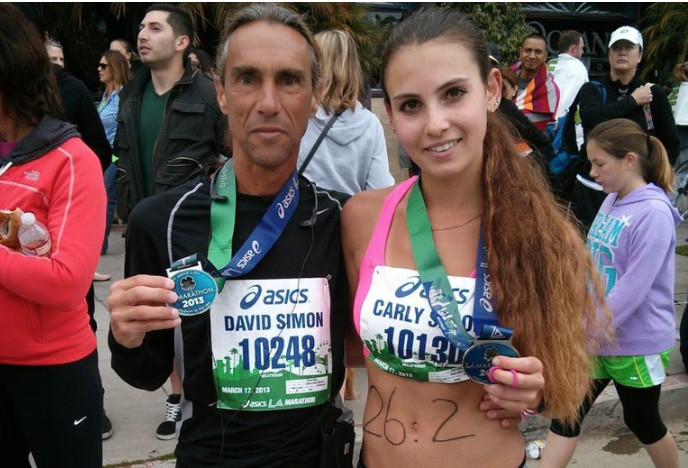
Age: 61
Location: Agoura Hills, California
Occupation: Programmer/Developer (Retired)
In 2020, David Simon ran more than 8,000 miles and 2,000 hours—more than any other person on Strava, the popular fitness app. His run streak, however, predates the fitness platform by decades: Simon, turns out, has steadily clocked 20+ mile days for nearly 40 years. Men's Health talked to Simon, 61, about how he’s stayed motivated, consistent, and (mostly) injury-free.
I started running the summer after high school in 1977. Before that, I was a shy, insecure, and completely unathletic guy. My first run was to the local drugstore about a mile from home. I was completely exhausted when I got there, but it felt good. I ran home, and after that, I started doing it every day. Within a month, I was up to a continuous three-mile run without stopping. Three months after that, I was up to 15 to 20 miles a day and hooked.
At the time, I was able to do it within about two to three hours—these days it takes me about five. Running truly changed my life: I got fit, healthy, more confident, and happier. Now if I miss a day, I bounce off the walls. It’s become my version of meditation, an escape from real world pressures. Unless I need to travel for work or have an emergency, I’d never miss a day. I'd drive my wife nuts.
Now that I’m retired, I take my time. Often I’m doing work or taking personal calls, so the runs are partly my “working hours” too. I’ve been able to work from home all my life, which has afforded me more time to run while seeing my daughters grow up. Over the years, I've kept pushing myself. In 1984, I signed up for the first L.A. Marathon and finished in 4:20. I ran the next 10 marathons—and once in Chicago—and got my PR down to 3:20.
In 2013, I accidentally wound up running the Las Vegas Marathon. I was in Vegas for work, and after I got to my room, I changed and headed out for my run. When I got to the street, I heard what sounded like gun fire and saw thousands of people running towards me. Turns out, it was the start of the marathon, which runs down the strip and through downtown. So, I just started running with them and ended up finishing—okay, scabbing—the race. I felt bad when they gave me a medal, but they said it was okay when I fessed up, and I had a great time.
I later stopped running organized events—the crowds and logistics just got too hard with two kids. When my kids were in high school, however, they each wanted to run the marathon, so I did it two more times over those four years. They’re both still avid runners—and much faster than me, I might add. I wound up founding a youth cross country running team, the Calabasas Cheetahs, and coached them for a few years.
Even during COVID, I still wake up motivated to run—I’m quite addicted to running. I pretty much run by myself or only with my daughters, so I’ve been safe. I always use Strava and I like to do their monthly “running distance challenge,” which has a leaderboard. I’ve always been among the top runners, and I’m proud of that considering I’m also likely older than most of the other runners. Fortunately, living in Southern California means very few cold or rainy days.
f I’m not taking calls, I always run while listening to podcasts—mostly tech and security, or news and political podcasts. I also listen to Howard Stern on Sirius, as well as the occasional audiobook, but I don’t listen to music. Mostly I run in the mornings, but sometimes my schedule requires me to break up my runs. I’m very routine-oriented, and my routine is always to wake up, walk the dog, eat a small something, drink a Rockstar Energy Drink, and then head out for my run.
Diet is a very long story. I’m an extremely picky eater—healthy, but not diverse. I’ve never eaten meat, for instance. I’m not intentionally vegetarian: I’ve just never liked it.
I live on high protein power bars like ProMax, as well as healthy multigrain breads and carbs. I eat about 4,000-5,000 calories per day, and lots of carbs. I’ve been lucky with injuries, too: In 40+ years of running, I’ve only had one knee injury—I tore my meniscus. The doctor said I needed surgery, so I did it, and I feel like it was one of the worst mistakes of my life. That knee has never been the same. When I injured my other knee, I opted not to do surgery and it’s perfect now. You live and learn.
As for gear, I’ve used ASICS running shoes like the GT 1000 or Gel Nimbus almost all my life—they’re a little wider, which I need, and I’ve found them somewhat more durable without being heavy or clunky. I’ve tried others and they hurt my feet. I always carry my phone with me in a running pouch, and I use cheap bluetooth headphones with hooks and a cord. Since I’m only listening to podcasts, audio quality isn’t all that important. I mostly want something that’s comfortable and lasts a long time.
When people ask me about the key to my longevity, I tell them it’s slowing down. At my age, my “run” is more of a fast shuffle, but that also means less impact, so it’s good for my knees and body. I’m always breathing normally out of my nose and can talk easily unless I’m on a steep hill. That’s also what I like to tell beginners: Start slow. Build up. Don’t try to “boil the ocean all at once,” as a mentor once told me. Otherwise, you’ll burn out. Running is a lifestyle, not just a training activity.
My only goal this year is just to be able to keep doing what I’m doing. As I tell my family, when I can’t run anymore, I’ll walk. When I can’t walk, I’ll roll. And when I can’t do that, I’ll have to figure out a new activity.
(04/04/2021) ⚡AMPby Men’s Health
The lights are back on at Hayward Field, but Cole Hocker steals the spotlight
There weren’t any extra bells or whistles for the grand opening of Hayward Field Friday night, no pageantry or fireworks for the debut of Oregon’s new $200 million facility.
But there was track and field, and after nearly three years of no home meets, that was more than enough.
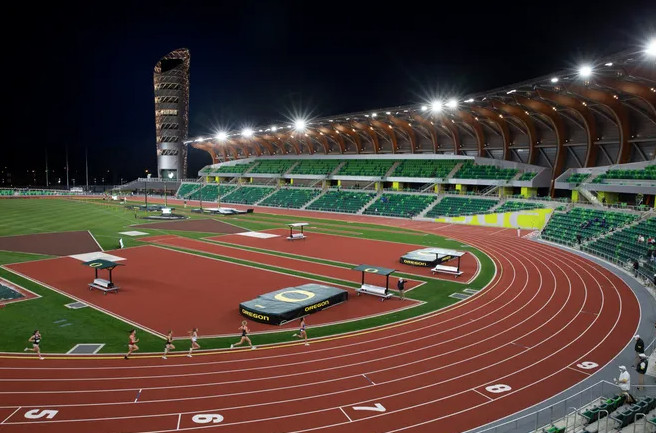
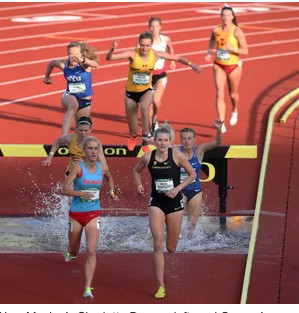
“This has been a long time coming for us here and our program,” Oregon coach Robert Johnson said after Day 1 of the multi-team Hayward Premiere, the Ducks’ first meet since June of 2018. “It’s been a surreal moment today. … Thankful, blessed, happy. I woke up this morning excited and giddy and couldn’t wait to shoot off the gun.”
Oregon picked up four wins and had several impressive performances, though none stood out more than Cole Hocker’s late surge to win the men’s 1,500-meter Invitational in the first home meet of his Oregon career.
The sophomore from Indiana, who captivated the running community with his national titles in the mile and 3,000 meters at the NCAA Indoor Track & Field Championship meet in March, looked sharp as ever Friday, winning in 3 minutes, 38.99 seconds.
“It was definitely different and even though it wasn’t a full stadium, there was something different about the energy especially with other teams being in there and in the mix,” Hocker said. “They definitely put on a good race, too. It was fun.”
It was also close, as Hocker went into the home straight with challengers right on his heels. But one last burst of speed gave him all the separation he’d need to get the win.
“Yeah I’m really happy with (the race),” he said. “I just went in with one goal to win and I executed that. I’m really happy about it because of where we are in training and completely training through this race and not really prepping specifically for this. I’m happy with the result.”
Talem Franco of BYU was second in 3:39.79 and Iowa State’s Festus Lagat was third in 3:39.93. Oregon’s Reed Brown was fifth in 3:40.90.
Cooper Teare was entered in the race but didn’t run. The Oregon senior, who set the collegiate record in the indoor mile in February, did pace the men’s 10,000 Invitational through the first 4K. He’s also entered in the 800 Saturday.
A sparse crowd of family and close Oregon associates were sprinkled throughout the stadium, as were members of all the participating teams.
It wasn’t loud, but for an opening night in the era of COVID-19 restrictions, it was still special.
“The feeling was unreal,” said Oregon senior hammer thrower Austin Tharp, a Sheldon High graduate who has a childhood worth of memories competing at the previous Hayward Field. “Just walking in with all the officials and other competitors, it felt like Hayward Magic was back. I’m from Eugene and my last home meet was the Oregon Twilight in 2018 so it was really nice to have family watching me compete at Hayward again for the first time in a few years.”
Tharp finished third Friday night, throwing a PR 195-feet.
For the trivia books, senior distance runner Jack Yearian was the Ducks’ first winner in the new stadium, as he ran a 40-second PR with a time of 14:1122 in the men’s open 5,000 race.
Tori Sloan was Oregon’s first field event winner, as the junior set a big PR with a mark of 19-5 1/4. Her previous best was 17-11 1/2.
Aneta Konieczek made her long-awaited outdoor debut for the Ducks with a second-place finish in the women’s steeplechase in a PR 9:59.42, making her the third-fastest performer in Oregon history and only the fourth Duck to run under 10 minutes.
“It was amazing to be out there today and have a pretty good opener,” Konieczek said. “I was just really excited, not only because it’s been awhile but also, it’s our track and I’d never raced at Hayward (Field) before. You could hear everyone and even with the smaller crowd, the magic was there.”
Konieczek transferred to Oregon in 2019 from Division II Western State in Colorado where she was a steeplechase all-American with a 10:01.02 PR. During the recently completed indoor season, Konieczek placed seventh in the mile at NCAA championship meet.
New Mexico senior Charlotte Prouse was the winner in a collegiate-leading 9:54.65. The two-time NCAA runner-up took the lead from Konieczek with two laps to go and slowly separated from the Oregon redshirt junior.
“After indoor nationals, there was some down time and I hadn’t really done any hurdle work coming into today but I thought everything felt pretty good," Konieczek said. "I didn’t really know what to expect especially in my first (steeplechase) race in three year but it helped to have Charlotte Prouse in the race so we could work together.”
Oregon’s Matt Wisner, a senior transfer from Duke, set a six-second PR of 3:42.95 in his victory in the men’s open 1,500.
Carmela Cardama Baez, the 2019 NCAA outdoor runner-up, finished third in women’s 10,000 Invitational in 32:57.01, nearly topping her PR of 32:55.50. Boise State’s Clare O’Brien won in 32:43.70, and Weber State’s Lexie Thompson was second in 32:49.62.
Oregon State’s Lindsay McShane and Sydney Guthrie-Baker went 1-2 in the women’s hammer. McShane won with a throw of 208-03 and Guthrie-Baker threw 195-07.
(04/04/2021) ⚡AMPWorld half-marathon record falls to Ruth Chepngetich in Istanbul
Istanbul race promised fast times due to red-hot line up and it delivered despite damp conditions
Ruth Chepngetich took almost half a minute off the women’s world half-marathon record in Istanbul on Sunday (April 4).
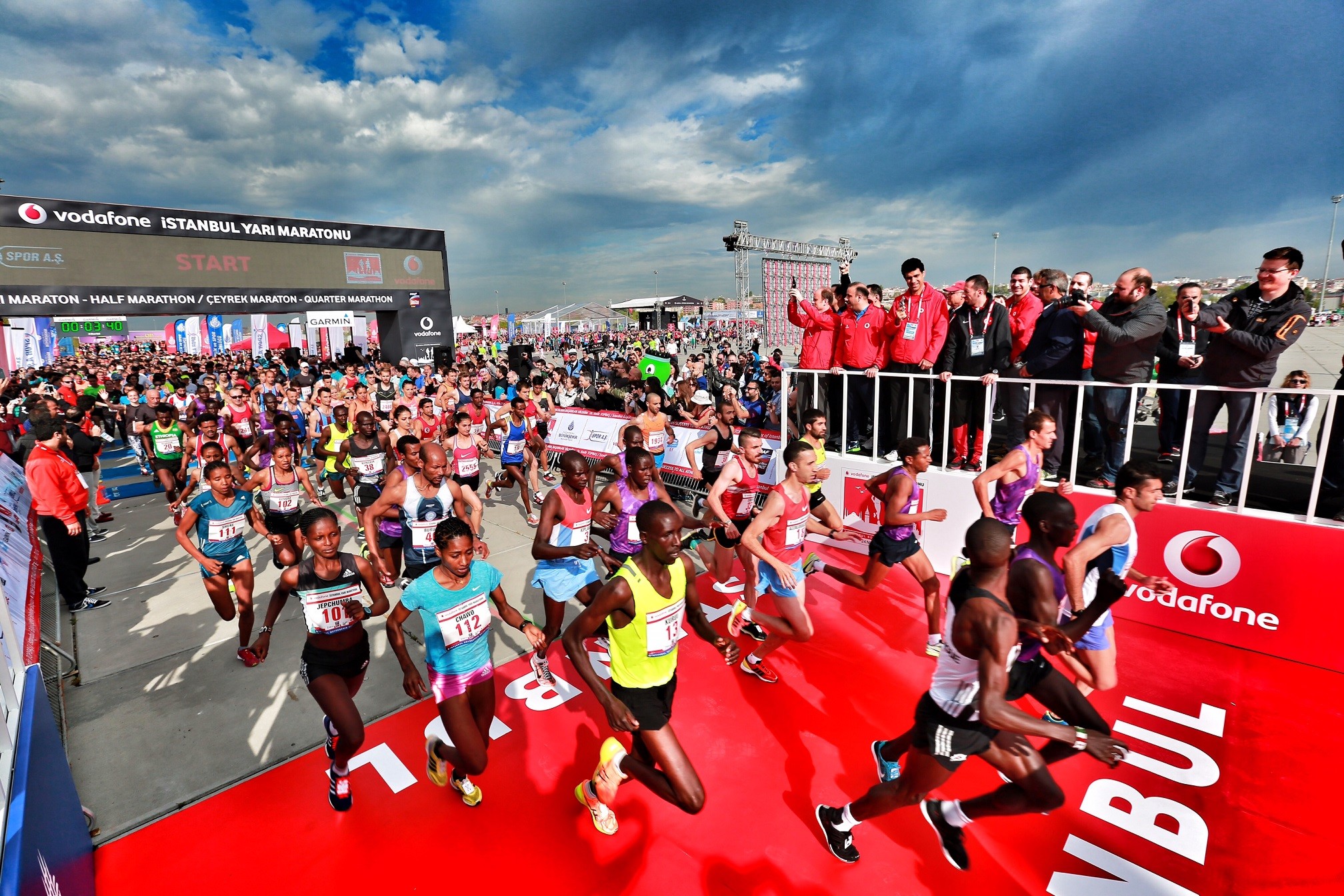
The Kenyan, who won the world marathon title in the heat and humidity of Doha in 2019, clocked 64:02 for the 13.1-mile distance as she smashed the 64:31 mark held by Ababel Yeshaneh of Ethiopia.
The 26-year-old is certainly familiar with the roads of Istanbul. She has now won the city’s half-marathon three times and in 2018 she ran 2:18:35 to win the Istanbul Marathon.
Yeshaneh’s world record was set at the RAK Half in February last year. That race was called off this year due to the coronavirus, which effectively meant many of the leading entrants competed in Istanbul instead.
Racing less than 24 hours after Beth Potter ran the fastest ever 5km on the roads at the Podium 5km in Lancashire, Chepngetich drew away from a strong field in Istanbul in damp and cool conditions.
The event featured a mass participation field and also inline skaters and saw the runners tackling the distance on the banks of the Bosphorus on a wet morning in Turkey.
Not only was Chepngetich’s time a world record, too, but it was quicker than the fastest-ever half-marathon set on the roads – the 64:28 by Brigid Kosgei on a Great North Run course that is disallowed for record purposes.
Runner-up Yalemrzew Yehualaf clocked 64:40 to go No.3 on the world all-time lists while Hellen Obiri, the world cross-country champion, clocked 64:51 on her debut, making this the first time three women had broken the 65-minute barrier in the same race.
Joan Chelimo Melly was fourth in 65:09 and world marathon record-holder Kosgei fifth in 66:01 as the top seven broke 67 minutes.
The eagerly-anticipated men’s race head to head between Kibiwott Kandie beats Geoffrey Kamworor, meanwhile, saw Kandie take the win by three seconds in 59:35 as he gradually drew away from his rival in the closing stages.
The runners were well outside Kandie’s men’s world record of 57:32 but Kandie’s time was a course record and the top five men broke the one-hour mark.
(04/04/2021) ⚡AMP
New Asics carbon METASPEED SKY could help you reduce the # of steps you take in marathon by over 1.2%
Asics has launched two new race shoes, designed for runners with different stride lengths. The Metaspeed Sky is made for those who increase their speed by taking longer strides, while the Metaspeed Edge is built for those who extend their stride length, but also increase their cadence.
Both models have the same components, with a full-length carbon plate to conserve energy (a feature that's become commonplace in race shoes over the last couple of years) a curved sole unit to help your foot roll and reduce ankle flexion, and a bouncy foam midsole.
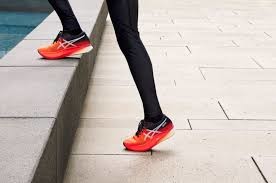
We've tested and ranked all of the best running watches available today
Don't need GPS? Check out our guide to the best fitness trackers
For pool training, take a look at our roundup of the best swimming watches
Both new shoes have engineered mesh uppers made from recycled polyester, helping reduce the use of virgin plastics. Asics began working recycled materials into its shoes while designing sportswear for the Tokyo Olympic Games, and it's now begun incorporating reclaimed textiles into its consumer products too.
Earlier this year, the company released the Sunrise Reborn pack, containing a distance training shoe and a hybrid street/technical shoe, both made from old clothing gathered in Japan. The material for these shoes was processed and solution dyed – a technique that involves adding color to the plastic before it's made into filaments, and uses far less water than dyeing it later.
One (not so) small step...
The differences between the two Metaspeed models are all down to construction and geometry. The Metaspeed Sky has a thicker sole than the Edge, for better cushioning as runners increase their stride length
There's also a difference in heel drop: the Sky has a 5mm height difference between heel and toe, while the Edge has an 8mm difference. Finally, the Sky has a sharper curvature at the forefoot than the Edge, enabling runners to push off further with each stride.
With so many carbon running shoes now on the market (plus more affordable designs with stiff nylon plates like the Saucony Endorphin Speed), it's good to see more variety in styles rather than a one-size-fits-all approach. We'll be putting the new Metaspeed models to the test, and bringing you a full review
(04/04/2021) ⚡AMPWorld Records in danger at Istanbul Half Marathon Sunday
Super-strong fields tackle 13.1 miles in Turkish city on Sunday with Hellen Obiri, Brigid Kosgei, Peres Jepchirchir, Kibiwott Kandie and Geoffrey Kamworor among the entries
World records could fall at the Istanbul Half Marathon on Sunday (April 4) due to the red-hot line-ups that have been assembled.
The women’s race features marathon world record-holder Brigid Kosgei, world half-marathon gold medallist Peres Jepchirchir and world cross-country and 5000m champion Hellen Obiri.
Whereas the men’s race sees world half-marathon record-holder Kibiwott Kandie against former world record-holder Geoffrey Kamworor.
Obiri makes her half-marathon debut and she could hardly have picked a tougher first race.
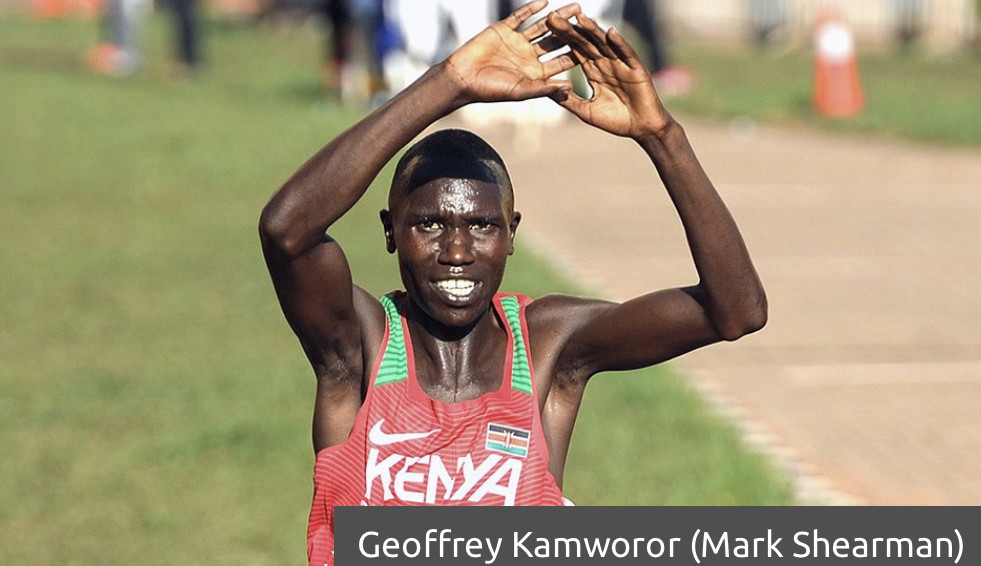
In addition to Kosgei and Jepchirchir, the Kenyan faces world marathon champion Ruth Chepngetich, plus Ethiopian Yalemzerf Yehualaw, Melat Kejeta of Germany and Yasemin Can of Turkey.
All eyes will be on Kandie and Kamworor in the men’s race but watch out too for Ethiopia’s Amdework Walelegn and Uganda’s Stephen Kissa plus Turkey’s Kaan Kigen Ozbilen.
Kandie and Kamworor were due to have a much-anticipated showdown at the RAK Half on February 19 but it was called off due to the pandemic.
If conditions are good Kandie’s world record of 57:32 – which was set in Valencia in December – will be under threat, whereas the women’s world record of 64:31 held by Ababel Yeshaneh is also in danger.
The races start 10am local time on Sunday April 4.
(04/03/2021) ⚡AMPby Athletics Weekly
N Kolay Istanbul Half Marathon
The Istanbul Half Marathon is an annual road running event over the half marathon distance (21.1 km) that takes place usually in the spring on the streets of Istanbul, Turkey. It is a IAAF Gold Label event. The Istanbul Half Marathon was first organized in 1987. After several breaks it was finally brought back to life in 2015 when the...
more...Update on races that hopefully will be held in 2021 from David Monti
Here’s the latest news on marathons and road races which have come across my desk:
ELITE-ONLY MARATHON SCHEDULED FOR TUSCANY – Thanks in part to funding from the Xiamen Marathon, a European Olympic Marathon qualification race will take place at the Ampugnano Airport in Tuscany, Italy, on Sunday, April 11. The event is called the Xiamen Marathon & Tuscany Camp Global Elite Race and will feature some of the sport’s most recognizable marathoners, like:
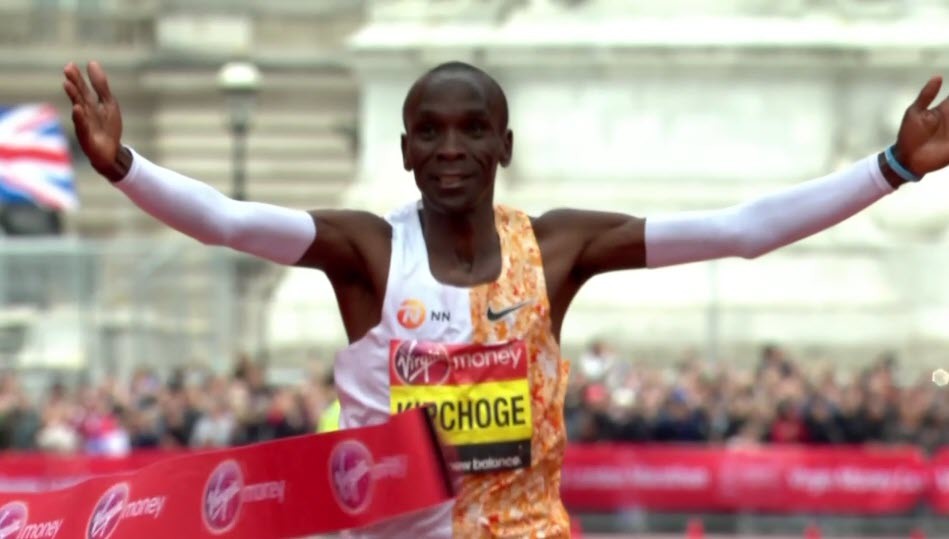
Marius Kipserum (KEN), Suguru Osako (JPN), Angela Tanui (KEN), Leul Gebresilase (ETH), Gerda Steyn (RSA), Daniele Meucci (ITA), and Valeria Straneo (ITA). The race will begin with a one-kilometer loop, followed by eight 5-kilometer loops and a short straight to the finish line to make the full 42.195-kilometer distance. The course is World Athletics-certified, so all athletes have a chance to record Olympic Games qualifying marks.
PRAGUE MARATHON MOVES TO THE FALL – RunCzech has announced that the Volkswagen Prague Marathon will be held in the fall for the first time; the event traditionally takes place on the first or second Sunday of May. The planned date is Sunday, October 10, the same day as the Bank of America Chicago Marathon. The capacity of the event will be determined later in coordination with Czech health officials.
RunCzech will also hold a virtual version of the race from May 3, through May 31. “We must never stop dreaming and believing,” said RunCzech president Carlo Capalbo through a statement. “There is light at the end of this tunnel. We’ll be there to cheer you on every step of the way, and we look forward to greeting you at the finish line with shouts of joy.”
AUSTRALIA AND ARGENTINA ALSO HOST OLYMPIC QUALIFYING MARATHONS – Elite-only marathons will be held in both Australia and Argentina in April to give athletes a chance to qualify for the Tokyo Olympics. In Australia, the race will be held in Sydney at the International Regatta Centre in Penrith on April 25, and be organized by Athletics Australia.
“In the same international calendar period, a number of our marathoners would normally be racing at the London Marathon, so this elite race in Sydney is an important opportunity,” said Athletics Australia president Mark Arbib through a statement. “By creating the course for elite athletes, we are allowing our marathoners to prepare with as much certainty as possible.” In Argentina, the race will be held in Santa Rosa, La Pampa on April 18. The Maraton Internacional A Pampa Traviesa will incorporate the Argentine national marathon championships.
SOME SPRING MARATHONS TO GO FORWARD – A few spring marathons will go forward as in-person races, despite the pandemic. Here is a summary (not a complete list):
April:
03 – Carmel Marathon (USA)
03 – Easter Marathon (AUS)
10 – Access Bank Lagos City Marathon (NGR), C&D Xiamen International Marathon (CHN)
11 – Beverly Wuxi Marathon (CHN), Canberra Times Canberra Marathon (AUS), Maratona Sao Paulo (BRA), Xuzhou Marathon (Chinese Olympic Trials)
18 – Debno Marathon (POL/elite only), Maraton Internacional A Pampa Traviesa (ARG), Zheng-Kai International Marathon (CHN)
24 – Valley O.NE Marathon Weekend (USA)
25 – Ascension Seton Austin Marathon (USA), Mercy Health Glass City Marathon (USA)
25 – Wrexham Elite Marathon & Half-Marathon (GBR)
May:
01 – Myrtle Beach Marathon (USA)
08 – Fort Worth Cowtown Marathon (USA)
16 – Belgrade Marathon (SRB), Alexander the Great Marathon (GRE), Copenhagen Marathon (DEN), Generali Milano City Marathon (ITA)
30 – Brescia Art Marathon (ITA)
MOST SPRING ROAD RACES MOVE TO THE FALL – One by one, race organizers are moving their spring road races to late summer or the fall. Here is a summary of some of those postponements:
August:
22 – Vitality Big Half (GBR), Generali Berliner Halbmarathon (GER), Kerzerslauf 15-K (SUI)
28 – Asics Sentrumsløpet 10-K (SWE)
September:
05 – Bath Half-Marathon (GBR), CSOB Bratislava City Marathon (SVK), Harmonie Mutuelle Semi-Marathon de Paris (FRA)
05 – Spar Women’s Challenge – Cape Town (RSA), Sportisimo Prague Int’l Half-Marathon (CZE)
06 – GTC Reedy River Run 10-K (USA)
11 – Göteborgsvarvet Half-Maraton (SWE)
12 – HASPA Marathon Hamburg (GER), Credit Union Cherry Blossom 10-Mile (USA), Meia-Maratona Internacional de Lisboa (POR)
12 – Brighton Marathon (GBR), Stramilano (ITA), Vienna City Marathon (AUT)
19 – Run Rome The Marathon (ITA)
25 – Cooper River Bridge Run (USA), Freihofer’s Run for Women (USA), NN City Pier City Half-Marathon (NED)
October:
02 – Azalea Trail Run 10-K (USA)
03 – Cardiff University Cardiff HM (GBR), 10-K Valencia Ibercaja (ESP), Virgin Money London Marathon (GBR)
10 – Bank of America Chicago Marathon (USA), Volkswagen Prague Marathon (CZE)
11 – Boston Marathon (USA)
17 – EDP Medio Maratón de Sevila (ESP), Schneider Electric Marathon de Paris (FRA), eDreams Mitja Marató de Barcelona (ESP), Tokyo Marathon (JPN)
24 – NN Marathon Rotterdam (NED), Standard Chartered Hong Kong Marathon (HKG), Oberbank Linz Donau Marathon (AUT)
29 – Jerusalem International Marathon (ISR)
November:
07 – Los Angeles Marathon Presented by Asics (USA), Zurich Marató de Barcelona (ESP)
14 – Movistar Medio Maratón Villa de Madrid (ESP)
21 – New Taipei City Wanjinshi Marathon (TPE)
28 – Limassol Marathon (CYP)
(04/03/2021) ⚡AMPby David Monti Race Results Weekly
5,000 Runners Arriving Safely Home from Nagoya, Japan Gives Hope to Runners and Organizers Worldwide
Nagoya Women’s Marathon was the first mass participation event in Japan since the Covid-19 pandemic started
- Organisers implemented a range of measures to prevent the spread and transmission of Covid-19
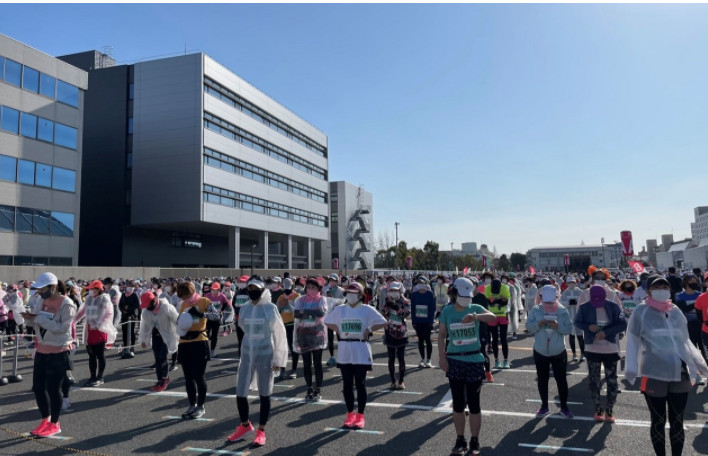
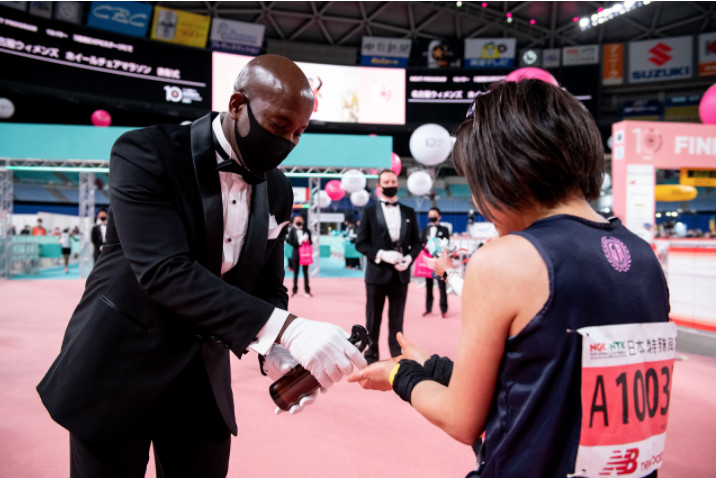
- 2 weeks after the event, which welcomed 4,704 runners in the marathon, there are no reports of Covid-19 infection or suspected cases
The Nagoya Women’s Marathon 2021, the largest women’s marathon in the world and a World Athletics Platinum Label road race, was held on Sunday, March 14, 2021 as the first mass participation road race to be held in Japan since the Covid-19 pandemic started. From top elite athletes to general runners, a total of 4,704 women runners participated in the race and had a joy of running on the city streets of Nagoya. Another 4,052 ran the accompanying half marathon.
To prevent the spread and transmission of Covid-19, various measures were taken at all event sites throughout the event period. We established the Covid-19 Control Office with medical professionals, local governments of the City of Nagoya and Prefecture of Aichi, and the Japan Association of Athletics Federations (JAAF) within the Marathon Organizing Committee, and formulated and implemented an infection control plan in accordance with the JAAF’s Guidance on Resumption of Road Racing and advice from medical experts and local government officials. We would like to share some of the key measures as below.
At Race Entry
The field was reduced from 22,000 to 11,000 (domestic residents only) at the time of race entry An option was given to all registered participants to switch from in-person racing to virtual racing after a state of emergency was declared by the Japanese government in Aichi Prefecture in January 2021. The state of emergency was lifted on February 28, 2021, and the Nagoya Women's Marathon 2021 was held with the 5,000 participants who chose to run the in-person race. Runners residing outside Japan were accepted at the virtual race due to the international travel restrictions.
Protocols for All
Wear masks at all times (except for runners during competition). Sanitize hands frequently (on arrival, after finish, before and after using the toilet, etc.). Check temperature at home and on arrival (Anyone with a fever of 37.5 degrees Celsius or higher are refused to participate). Monitor, record and submit health condition and body temperature (via a web form) for 7 days prior to race day. Monitor and report any poor health condition or positive Covid case for 14 days after race day.
At Competition
Runners must wear masks before start. Social distancing at the starting blocks (more than 1 m between runners). Gradual start by each starting block. Covered water at water stations to prevent droplets. Individually packaged food at refreshment stations and hand sanitization before taking them. Hand sanitization and face masks distributed after finish. Social distancing at the dressing area and limited use to 15 minutes.
For Volunteers
All volunteers were provided face masks, face shields, and portable alcohol disinfectant, as well as additional equipment (e.g., globes) depending where they are assigned.
At Marathon Expo
Booth setting, flow design, and entry restriction to avoid the ‘Three Cs’ ‘Three Cs’ are high risk situation of COVID-19 transmission defined by Prime Minister's Office of Japan and Ministry of Health, Labour and Welfare: Crowded places with poor ventilation, Close-contact settings and Confined spaces. All visitors were required to provide their name, address and contact information via an admission form at the entrance (for contact tracing purpose).
Crisis Management
Establishment of a crisis management plan for potential scenarios. A private emergency vehicle was stationed for transport of suspected Covid-19 patient.
Course Management
Public announcement on TV and newspapers to discourage cheering and spectating along the roadside.
It has been more than two weeks since the race day, but thankfully we have not received any report of infection or suspected case as of March 29. This year’s race was an extremely challenging event to prepare and coordinate for the realization. We have nothing but deep and sincere gratitude for runners for participation, and volunteers, sponsors and all the concerned personnel for their support. We wish your good health and the earliest possible arrival of end to the pandemic.
(04/03/2021) ⚡AMPby Japan Running News
Nike Launches Lawsuit over 'Satan Shoes' Made with Real Human Blood
The modified Nike Air Max 97s also features an inverted cross, a pentagram and the words "Luke 10:18"
Turns out, it's not just conservative Christians on Twitter who aren't happy with 'Satan Shoes', Nike also has a problem with them, which is why it's suing streetwear company MSCHF for releasing a modified pair of Nike sneakers, which contain a drop of human blood, without its consent.

Satan Shoes are the result of a collaboration between MSCHF and rapper Lil Nas X, with the shoes being made to promote his new track 'Montero (Call Me By Your Name)'.
On Monday, 666 pairs (get it) of the shoes were released and sold out within less than a minute. Each shoe features a signature Nike air bubble cushioning sole, which contains 60 cubic centimetres of red ink and a single drop of human blood that has been donated by employees of MSCHF.
However, Nike says that by releasing the shoes, MSCHF has diluted its brand, confused customers and caused "significant harm to [Nike's] goodwill, including among consumers who believe that Nike is endorsing satanism".
Its suit reads: "Nike files this lawsuit to maintain control of its brand, to protect its intellectual property and to clear the confusion and dilution in the marketplace by setting the record straight – Nike has not and does not approve or authorise MSCHF's customised Satan Shoes."
As part of it lawsuit, Nike has asked the court to immediately stop MSCHF from fulfilling orders for the shoes and has also requested a jury trial to seek damages.
Although, Lil Nas X isn't named in the lawsuit, he took to YouTube to issue an apology. Sort of.
In a YouTube video titled 'Lil Nas X Apologizes for Satan Shoe', he says: "Okay, guys, I see everybody's been talking about this shoe, and I just want to come forward and say..."
The clip then cuts to a scene from the video for his new song, 'Montero (Call Me By Your Name)', where he is giving the devil a lap dance.
Lil Nas X kept the same energy while defending the shoes on Twitter. In response to the governor of South Dakota Kristi Noem's criticism of the shoes, Nas X wrote: “You are a whole governor and you [are] on here tweeting about some damn shoes. Do your job!”
You have to say, he has a point.
(04/03/2021) ⚡AMPby Men’s Health
Hayward Field’s Grand Reopening, And a Ton of NCAA Stars Racing
When the University of Oregon’s Hayward Field reopened on Friday with the Hayward Premiere meet, 1,028 days will had passed since it last hosted a track meet.
Back then, on June 9, 2018, the marathon world record was 2:02:57, the Nike Oregon Project still existed, Donald Trump had zero impeachments, and we were still 18 months away from learning the word “coronavirus.” It has been a minute.
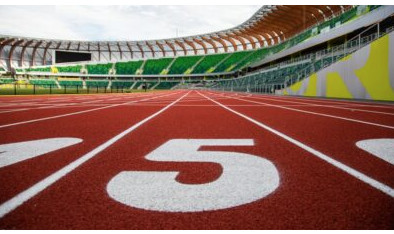
With an estimated cost of $270 million, “new” Hayward is easily the most expensive track & field-specific facility ever built in the United States and immediately becomes the center of the American track & field universe: over the next 16 months, the stadium will host two NCAA championships, the US Olympic Trials, and the 2022 World Championships. Based on everything we’ve seen, it should be a fitting home (if you haven’t already, check out the Hayward Field website, which has tons of info and cool photos of the rebuild).
On Friday, track is finally back in Eugene. And it should be quite a meet. Some of the country’s top distance programs — BYU, Arkansas, Iowa State — are sending athletes to compete at the Hayward Premiere, and of course the host Ducks will be racing some stars of their own. Between Oregon’s Cole Hocker, BYU’s Courtney Wayment and Conner Mantz, and Iowa State’s Wesley Kiptoo and Edwin Kurgat, no less than five NCAA individual champions will get to test out the new track.
The Hayward Premiere is the first of four regular-season home meets at Hayward in 2021, followed by the West Coast Classic (April 17), Oregon Relays (April 23-24), and Oregon Twilight (May 7) before the stadium hosts NCAAs (June 9-12), the Olympic Trials (June 18-27), and Prefontaine Classic (August 21).
Meet details and preview below.
How does the new stadium look? And is it fast?To say we at LetsRun.com are excited about the new Hayward Field is an understatement. There was no better place in America to watch a track meet than the old stadium, and while we are firm believers that not every single big meet should be in Eugene, it was distinctly weird not having any meets there the past two years. The new stadium may lack the character of “historic” Hayward Field, but from the wooden roof beams to the Bowerman Tower, it already sports an iconic look. After sitting empty for months — outside of UO practices — it will be great to see Hayward Field doing what it was built for: hosting meets.
And the good news is that some fans and media will be there in person. Under Oregon’s current athletics guidelines, a limited number of family and guests of coaches and athletes are allowed at the meet. Obviously, it would have been nice to open up the new Hayward with a full house, but this is better than totally empty stands. And the fact that Oregon got permission from the state and county to host four regular-season meets with spectators is a step in the right direction toward an Olympic Trials with fans (how many will be allowed in June remains to be seen).
As for the second question — is the new track fast? — we assume the answer has to be yes if they spent $200+ million on it and we imagine we’ll find out this soon. While this will be the outdoor opener for the athletes, the story of Covid-19 and the super spike ear is that no one seems to wait to run fast anymore. People want to get fast marks up ASAP in case of a Covid-19 delay.
The weather looks decent (high of 61 in Eugene on Friday, 64 on Saturday, and no rain) and the fields are full of quality so it will be interesting to see what type of marks are put up.
And will the infamous headwind still blow on the backstraight?
(04/03/2021) ⚡AMPby Let’s Run
IOC has removed 4 x 400m from 2024 Olympics
World Athletics was shocked to learn that the International Olympic Committee has cut the popular relay event to make room for math-based competitions.
In a disappointing and unexpected change to the Paris 2024 Summer Games program, the International Olympic Committee (IOC) has announced that the men’s and women’s 4 x 400m relay races will be cut to make room for “mathletics.”
The decision to add math-based events to the Games was made by the IOC and the Paris Organizing Committee (POC), and World Athletics (WA) was reportedly left out of discussions entirely.

At a press conference announcing the program change on Thursday, IOC president Thomas Bach said how thrilled he is to usher in “the next era” of the Olympic Games.
“I was never good at math as a kid,” Bach said. “So I’m proud to know that I’m playing a part in inspiring the next generation of Olympians to not just work hard at math, but to enjoy it, too.” An official from the POC also spoke, echoing Bach’s words.
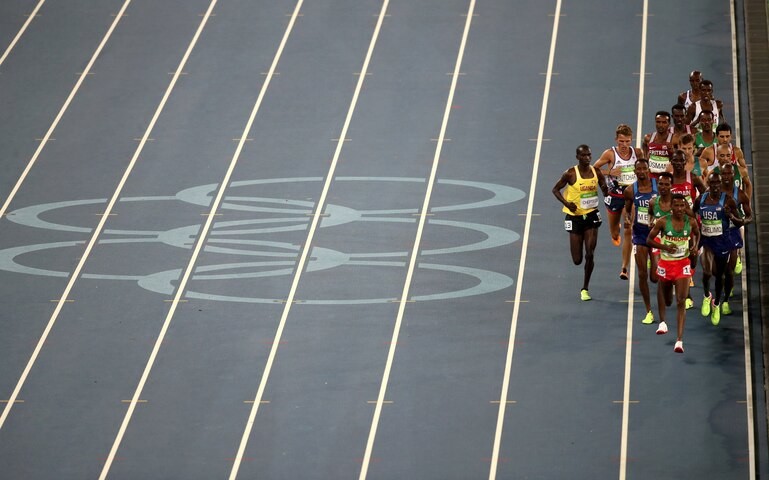
“In France, we rank somewhere around 25th in the world when it comes to youth math scores,” the official said. “We want to change that, and we sincerely believe that hosting an Olympic mathletics event in our country will inspire our children.”
When asked whether he believes the elimination of the 4 x 400m will hurt athletics in France, the POC official said he thinks “France has enough runners already,” pointing out that “kids everywhere run all the time. At recess, in after-school sports. They’re always moving. We need more mathletes, not runners.”
While the IOC and POC are excited by this program change, some people are upset — most notably WA president Seb Coe. “I get that math is important, I do,” Coe said, speaking after the IOC press conference. “But why are they cutting the 4 x 400m relay? How can the IOC think that’s a good idea?”
Coe spoke heatedly, clearly annoyed, and he apologized after a seven-minute rant about long division (which he said he “could never wrap [his] head around”), explaining that he’s not against promoting math, but that he was simply caught off-guard. “Thomas [Bach] and the IOC didn’t contact me about this change. I learned about it on Twitter, just like everyone else.”
Coe continued, saying that he plans to fight the IOC on this change. It appears to be a battle he and WA are destined to lose, though, as shortly after Coe’s speech, Bach released the tentative lineup of mathletics events he hopes to see in 2024.
“We’re planning to hold multiplication races, abacus events and so much more,” Bach tweeted. “Athletics have been in the Games for over a century, but math has been around forever. It’s time we show mathletes the respect they deserve.”
Bach has also reportedly considered dropping equestrian events from the 2024 Games to allow room for a new blackjack competition, but nothing has been made official.
(04/02/2021) ⚡AMPby Ben Snider-McGrath
Paris 2024 Olympic Games
For this historic event, the City of Light is thinking big! Visitors will be able to watch events at top sporting venues in Paris and the Paris region, as well as at emblematic monuments in the capital visited by several millions of tourists each year. The promise of exceptional moments to experience in an exceptional setting! A great way to...
more...Eliud Kipchoge's redemption run has been pushed one week due to COVID-19 restrictions in Germany
With less than two weeks to go until the NN Mission Marathon in Hamburg, event organizers have postponed the race until April 18 due to local COVID-19 restrictions. Those same restrictions in Hamburg are forcing officials to find a new location for the race with less than a month of notice. The event is set to feature Eliud Kipchoge, who is looking to bounce back from his sub-par performance at the London Marathon last October, but he will now have to wait a little longer before getting back in action.
“Over the past months, we have learned that we need to be flexible and stay positive,” Kipchoge tweeted after the news of the Mission Marathon postponement broke. It’s true that members of the global running community got used to race cancellations throughout 2020, but by the end of the year and moving into 2021, it seemed like event organizers had figured out the right formula to hold a run during the pandemic (for elite-only races, at least).
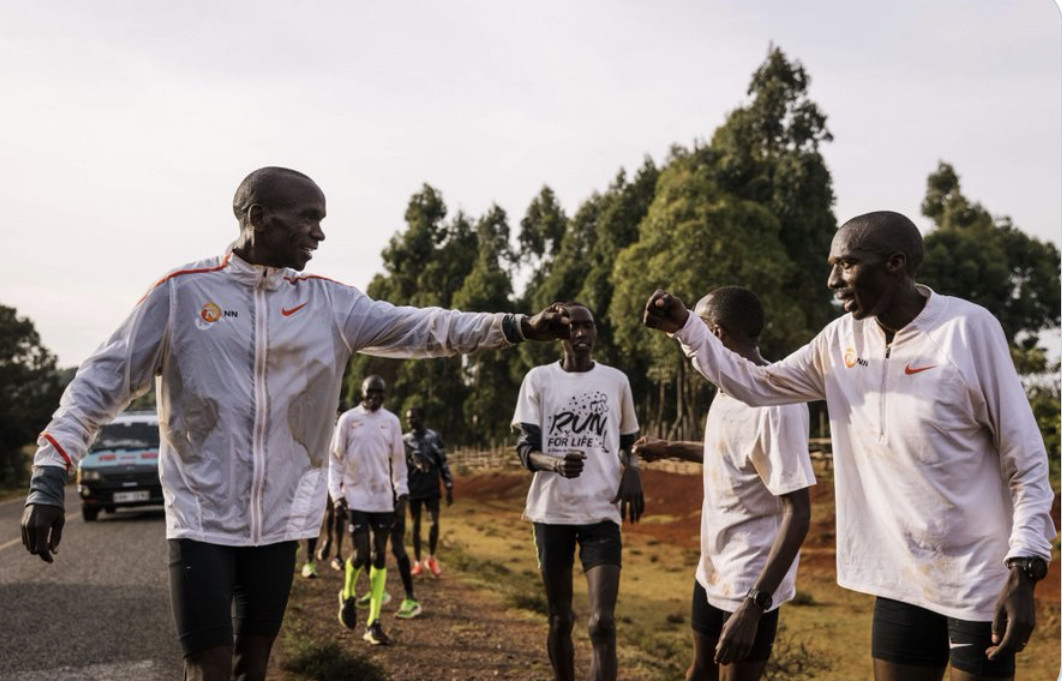
Unfortunately, COVID-19 proved once again that there is no way to guarantee an event’s safety during this pandemic. Granted, the Mission Marathon has only been postponed, but seeing as it has been rescheduled to run just one week after originally planned, it could be tough for organizers to find another city in the coming weeks.
In a press release announcing the postponement, Hamburg Marathon managing director Frank Thaleiser expressed his team’s regret. “Of course we were quite disappointed at first, but we can understand the decision given the current situation,” he said. “We are now putting all our efforts into the realization of the event at a different location and are optimistic that we will find a solution.”
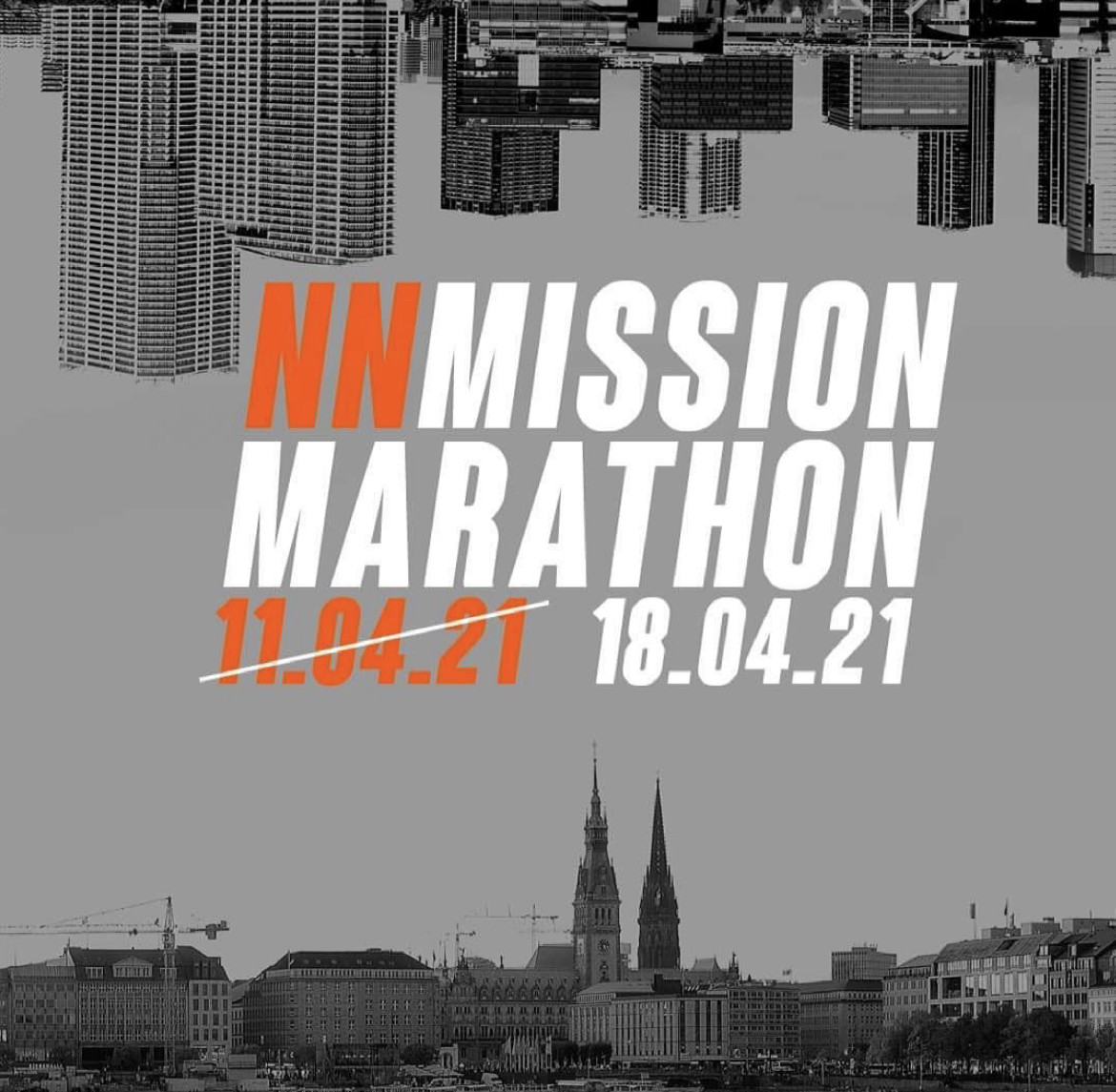
Thaleiser said he and the other organizers owe this race to the more than 70 athletes who were set to run in Hamburg. For Kipchoge, the race represented a chance to prove he’s still the man to beat going into the Tokyo Olympics, but for other runners, this was perhaps their last opportunity to qualify for the Summer Games. If the race cannot go ahead, many runners will have to scramble to find another competition before the summer.
(04/02/2021) ⚡AMP
by Running Magazine
Race against time for Irish athletes to qualify for Tokyo Olympic marathon
With spring marathons abandoned due to Covid, handful of elite races offer last chance
Aoife Cooke from Cork after winning the women’s category in the 2019 Dublin Marathon (photo). She is targeting the elite-only Wrexham marathon in Wales on April 25th in her bid to qualify for Tokyo.
Irish athletes are facing a race against time and opportunity in their quest to qualify for the Tokyo Olympic marathon, the worry being not just where to run, but whether that run will even happen.
With the normally busy spring marathon calendar effectively abandoned for another season due to Covid-19 – London, Boston and Paris among those postponed to the autumn – a handful of elite-only races present the last chance before the qualification cut-off date of May 31st, given the nature and distance of the event that’s fast becoming a sprint.
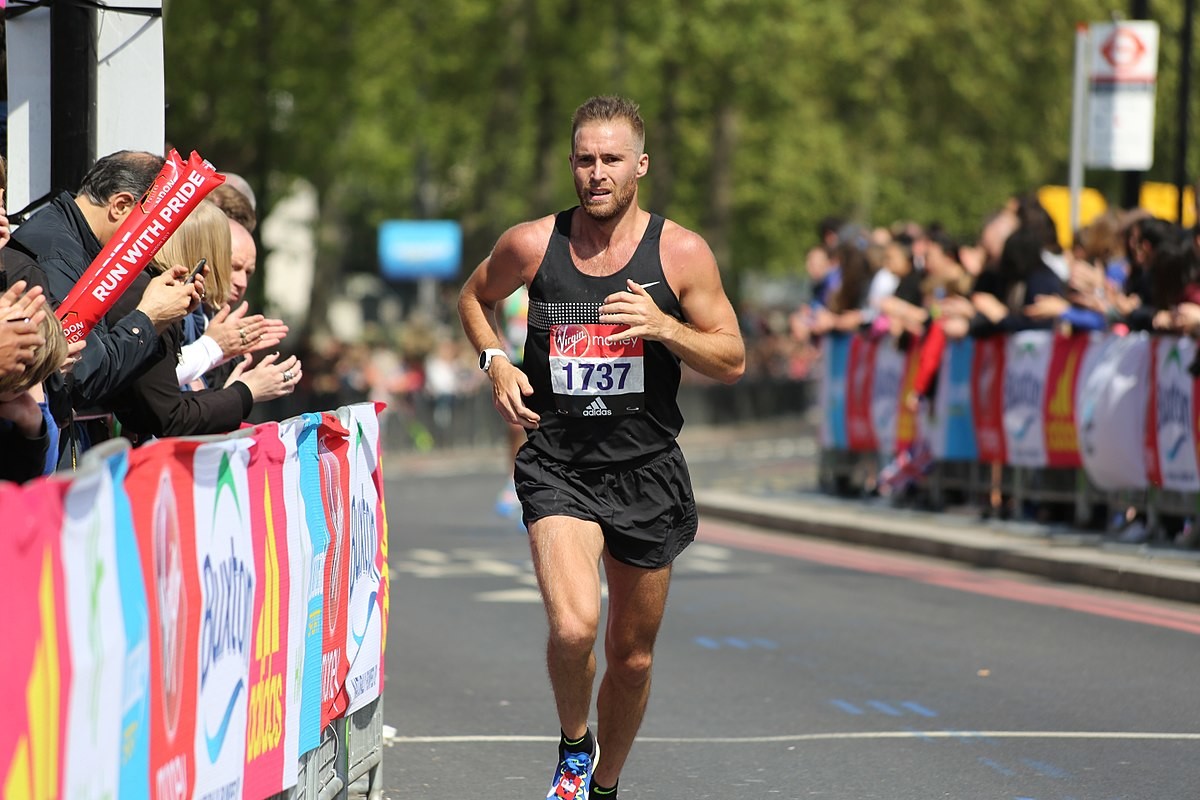
Three Irish men – the full quota per event – have already achieved the qualifying standard, although they are not yet officially selected. Stephen Scullion, Kevin Seaward and Paul Pollock all hit the necessary mark over a year ago, unlikely, it seems, to be ousted by a faster time at this point.
Fionnuala McCormack remains the only Irish woman qualified, in line for her fourth Olympics, after she ran 2:26.47 in the 2019 Chicago marathon. McCormack gave birth to her second daughter in December, and has now resumed full training in the build-up to Tokyo.
Two more Irish women still have Tokyo very much in mind, and are targeting the elite-only Wrexham marathon in Wales on April 25th. Aoife Cooke won the national title that came with being the top Irish woman in the 2019 Dublin Marathon, clocking a personal best of 2:32:34. That moved her from 55th to fifth on the Irish all-time list, and within touching distance of the Tokyo standard of 2:29:30, with possibility also of still qualifying via the ranking quota.
Best shot
The 34-year-old from Cork was all set to race the Vienna marathon this time last year, before that fell victim to Covid-19, and, despite the long and uncertain wait, is for now on course at least to give Tokyo her best shot in the unlikely surrounds of the seven-lap course in Wrexham.
Also running in Wrexham is Ann-Marie McGlynn, who improved her best to 2:32:54 in Dublin in 2019, and then ran 2:35:41 in Valencia last December. Mick Clohisey is also down to run in the Welsh event, the 2016 Olympic marathon representative eying the men’s standard of 2:11.30, which will require some improvement on his best of 2:13:19.
Of the three Irish men’s qualifiers already, Stephen Scullion is the fastest, thanks to the 2:09:49 he clocked at the elite-only London Marathon last October, over two minutes faster than his previous best, and 11th best in a strictly elite field of the world’s finest marathon runners.
While Scullion’s time was actually outside the Tokyo qualifying window (suspended between April 5th and November 30th, 2020), it stands as the fastest official Irish marathon. John Treacy’s Irish marathon best is still considered the 2:09:15 he ran when finishing third in Boston back in 1988, although for world record purposes Boston is considered a slightly downhill course, and therefore not deemed eligible, according to World Athletics.
Ratified
Although ratified at the time, Treacy’s only other sub-2:10 was the 2:09:56 he ran when winning silver at the LA Olympic marathon back in 1984. Scullion was just inside that in London, his 2:09:49 bettering his own 2:11:52 run in fifth place in Houston back in January (also his official Olympic qualifier by virtue of a top-five finish in a Gold Label marathon such as Houston).
Kevin Seaward put himself first in line for selection after clocking a lifetime best of 2:10.10 at the Seville marathon, in February 2020; Paul Pollock clocked his qualifier in December 2019, in the Valencia marathon, a new personal best of 2:10.25, and also inside the automatic Tokyo time.
That marathon – and race walking events – will be taking place in Sapporo, 800km north of Tokyo, after the International Olympic Committee (IOC) deemed the conditions there to be less gruelling come the height of the Japanese summer.
(04/02/2021) ⚡AMPTokyo 2020 Olympic Games
Fifty-six years after having organized the Olympic Games, the Japanese capital will be hosting a Summer edition for the second time, originally scheduled from July 24 to August 9, 2020, the games were postponed due to coronavirus outbreak, the postponed Tokyo Olympics will be held from July 23 to August 8 in 2021, according to the International Olympic Committee decision. ...
more...Professor hosts new virtual COVID Marathon to help community beat pandemic stress
When Lori Koban, a math professor at the University of Maine at Farmington, had to start working from home last March, she was happy to still be helping her students, but like many people, she was concerned about the negative impacts it would have on her physical, mental and emotional health. She decided to do something big and hosted two virtual marathons in 2020, and is repeating her success next month, April 12-18, 2021.
“I teach Actuarial Science at UMF where students can learn to become actuaries who help businesses manage risk,” said Koban. “Two years ago, I knew I had to make some personal changes of my own when my life insurance company determined my health status wasn’t up to par. One thing I did was start running, and I didn’t want Covid to derail my progress.”
In April 2020, she started a COVID-19 Marathon Week event for anyone who wanted to join. The goal was to purposefully move forward 26.2 miles in 7 days. She knew how much running was helping her and she wanted to share the idea with others to help them find purpose and healthy activity during that stressful time.
Each morning she put a short running-oriented video on her Facebook event page, and under it every participant logged their mileage for that day. She hoped 10 people would participate. To her surprise, 95 people joined from Farmington and around the state, and Florida, Massachusetts, Connecticut, North Carolina and more.
“I was thrilled,” said Koban. “I am not the typical runner that most people think of. I run intervals, currently running five minutes, walking one minute, and a 13-minute mile means I’m having a really good day. I just wanted to encourage people to move, whether it be running or walking or interval running or speed walking, and experience the benefits.”
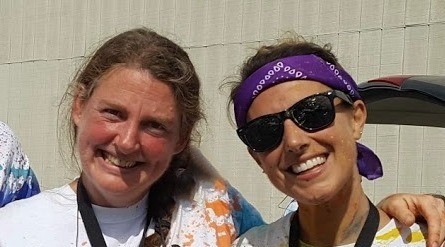
The event was so successful, Koban created a three-week COVID Marathon 1-2-3 event to help propel participants through the COVID phases in the state of Maine, one phase during each of May, June and July. Everyone who completed the event had their names entered into a drawing for fun prizes.
“Lori’s Covid marathon provided just the motivation I needed to do something outside my comfort zone,” said Morgan Leso, school counselor and UMF alumna. “Having a personal goal, such as completing a marathon helped me concentrate on doing something challenging instead of focusing on things I can’t control. Participating with so many people supporting each other was such a community effort. Her marathon challenge underscored the fact that we are all in this together.”
Now, after receiving even more inquiries, she is running a final COVID related event titled Goodbye COVID Marathon Week.
It will be held April 12 – April 18, 2021, precisely one year after the first marathon week, and she welcomes anyone to participate.
(04/02/2021) ⚡AMPNew research shows that you may prevent age-related decline in your race times with consistency and motivation
No matter how long you’ve been running and how many miles you log each week, it’s not uncommon to see your race times start to slow as you age. However, runners who can finish a marathon in under three hours showed reduced age-related decline in performance, according to a new study in Frontiers in Physiology.
The question on all of our minds: Do these findings apply to those of us who aren’t lining up in at the front of the field?
Researchers analyzed the marathon performances of 40 runners who have hit that sub-3 mark in five consecutive decades. The group consisted of 39 men and one woman, 1984 Olympic gold medal winner Joan Benoit Samuelson.
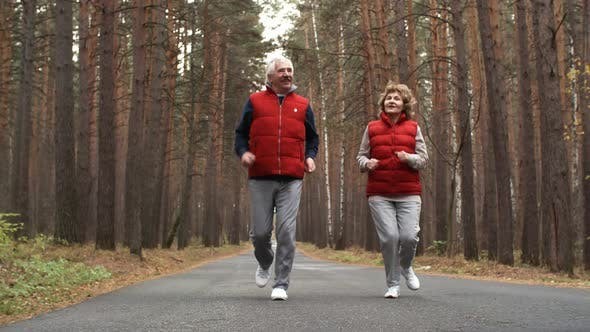
The researchers concluded that, with consistent training and racing regimens, it is possible to limit significant performance drops, at least until age 60. And although Samuelson was the only woman in the study—she’s the only woman to have achieved this mark, after all—Lepers said there’s no reason the results should not be true for female runners in general.
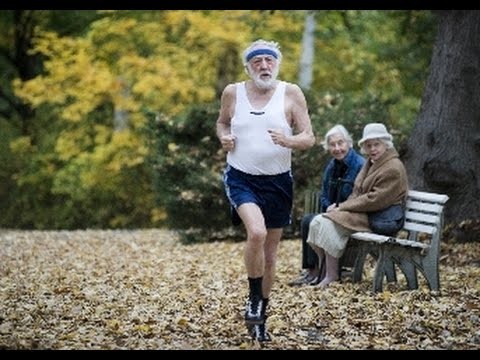
“The takeaway message could be that it is possible to limit the age-related decline in performance to less than 6 percent per decade, at least between 35 to 60 years old, if you keep training hard and stay motivated for that,” study co-author Romuald Lepers, Ph.D., a professor at the Université de Bourgogne-Franche Comté in France, told Runner’s World.
While the researchers still need to learn more about the running economy, specific training regimens, and recovery time of these top runners that make their performance so unique, Lepers believes their motivation is at the heart of their achievements.
“In the end, it all comes down to motivation. No one can perform at a top level without the motivation to train and race hard. They might be chasing personal records, or maybe world records. But they need very high motivation,” he told Podium Runner.
In terms of whether the results might also hold for runners with slower race times—say, a sub-4 marathon—Lepers said too many people are in that category to perform a full study. However, he would expect that whatever level you might be at as a runner, keeping your training volume and intensity strong could limit age-related decline in performance to less than 10 percent per decade.
(04/01/2021) ⚡AMPby Runner´s World
Austin Marathon excited to announce its partnership with Siete Family Foods
Leading up to the 2021 Austin Half Marathon, Ascension Seton Austin Marathon presented by Under Armour is excited to announce its partnership with locally owned and operated Siete Family Foods.
The Austin-based company, which has quickly become the leading health-conscious Mexican-American food brand on the market, is donating 7,500 bags of their grain-free Sea Salt Tortilla Chips for the marathon’s post-run goodie bags. They’ll also provide healthy snacks for event volunteers. The Austin Half Marathon, owned and produced by High Five Events, will take place on April 25, 2021.

Founded in 2014, Siete Family Foods is a family-owned and operated company that is passionate about making real food that inspires inclusivity and brings families together around the table. They’re on a mission to share the heritage-inspired flavors and traditions that brought the Garza family together on their journey to health. In addition to helping celebrate this year’s runners at the finish line, Siete will provide an array of their flavorful, heritage-inspired, grain-free snacks to all event volunteers.
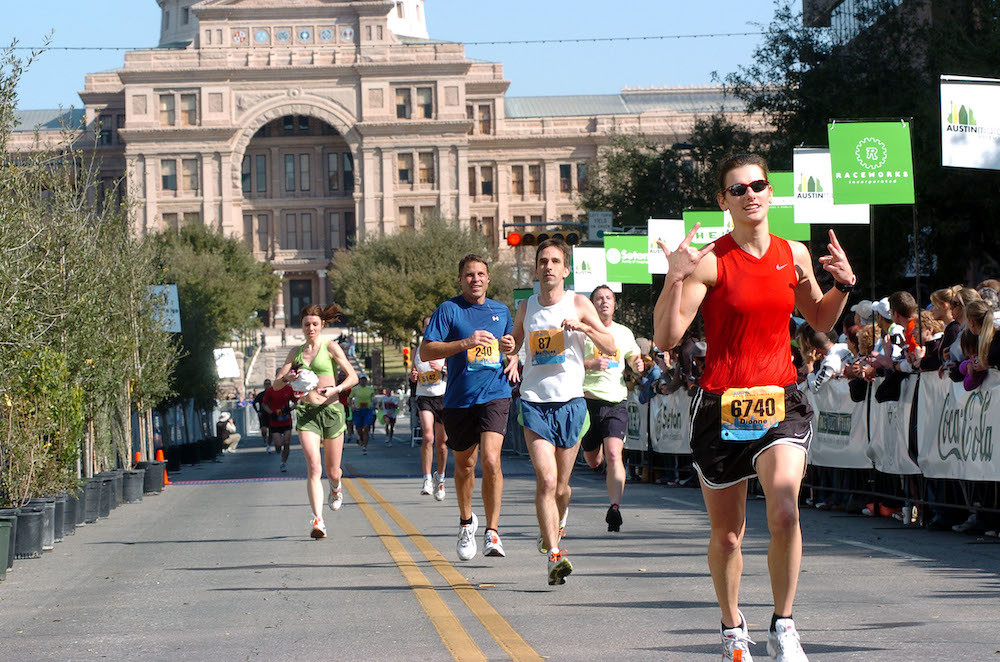
The post-run goodie bag pickup process will be touchless and in conjunction with the COVID-19 Mitigation Plan. Like most of Siete’s products, the chips included in the goodie bags are grain-free, dairy-free, and gluten-free, and made with better-for-you ingredients like coconut flour, avocado oil, chia seeds, and sea salt.
“Cultivating community is at the heart of our family and company,” said Veronica Garza, Co-Founder, President, and Chief Innovation Officer, of Siete Family Foods. “We are proud to partner with the Austin Marathon, an event that brings our community together with a shared purpose of giving back and staying active.”
“We’re proud to partner with Siete because many of their values align with ours, like helping others lead healthier lifestyles," said Jack Murray, co-owner of High Five Events. "Participants will love crossing the finish line, opening their goodie bag, and seeing a bag of Siete’s healthy chips."
Online registration is currently available. The in-person and the virtual options both have a maximum capacity set in the COVID-19 Mitigation Plan. The event has already surpassed 65% of the capacity based on current registrations. The event is expected to sell out.
(04/01/2021) ⚡AMPAustin Marathon Weekend
The premier running event in the City of Austin annually attracts runners from all 50 states and 20+ countries around the world. With a downtown finish and within proximity of many downtown hotels and restaurants, the Austin Marathon is the perfect running weekend destination. Come run the roads of The Live Music Capital of the World where there's live music...
more...All Sport activities suspended in Kenya as Government aims to tackle COVID-19 spike
Kenyan President Uhuru Kenyatta has suspended all sporting activities in the country as part of efforts to control the spread of COVID-19.
Kenyatta confirmed a raft of new measures yesterday during a televised address, amid a spike in cases.
The Kenya President said the county had 4,380 confirmed COVID-19 cases on January 20, but that the figure had surged to 15,916 on March 22.
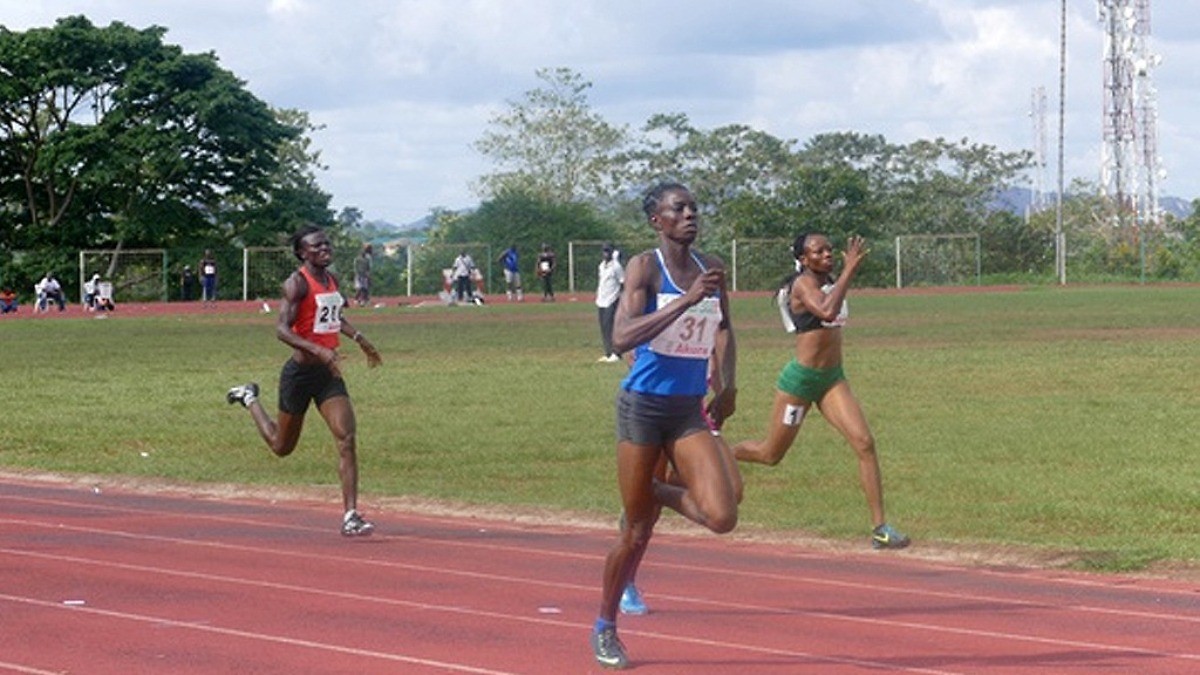
He warned that Kenya was facing a third wave of COVID-19, with the rate of infection having risen from 2.6 per cent in January up to around 22 per cent now.
Kenyatta announced new lockdown measures with a particular focus on high-risks areas, including the capital city Nairobi, as well as Kajiado, Machakos, Nakuru and Kiambu.
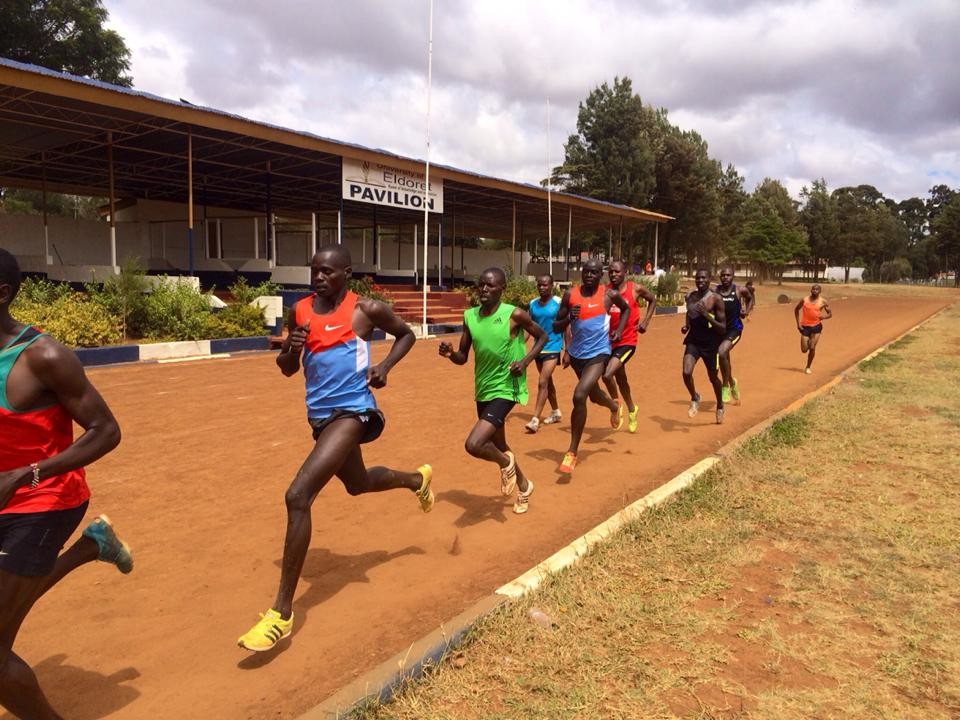
The new measures included the suspension of all sporting activities and in-person schooling in the country.
Kenyatta added that people over the age of 58 would be prioritised during the first stage of COVID-19 vaccinations in the country.
"Whereas the foregoing measures will have adverse effects on the economy and constrain our usual way of life, the measures are temporary and necessary to contain the spread of the disease and therefore stop further loss of lives," Kenyatta said.
"I am convinced that the cost of not acting now would be far greater."
The suspension of sporting activities in Kenya could have a major impact on athletes preparing for the rescheduled Tokyo 2020 Olympic and Paralympic Games.
It is unclear whether the Kenyan Government could issue exemptions for athletes preparing for the Games.
Kenya Rugby Union chairman Oduor Gangla has confirmed the organisation has suspended its Kenya Cup league due to the restrictions.
Kenya's men's and women's rugby sevens teams, however, are not based in the country at this time.
The teams are set to take part in the Emirates Invitational 7s event in Dubai, which will take place in April and serve as a warm-up event for teams competing at Tokyo 2020.
(03/31/2021) ⚡AMPby Michael Pavitt
Eliud Kipchoge must wait to return as Hamburg race postponed
Initially, the NN Running Team in conjunction with Global Sports Communication had scheduled the race for April 11, but had to postpone it by a week due to the deadly coronavirus.
“The NN Mission Marathon race in Hamburg will be postponed to April 18. Due to the current local Covid-19 situation, the organisation is also forced to find an alternative location for the race," read the statement.
World marathon record holder Eliud Kipchoge was set to take part in the race alongside former Olympic marathon champion Stephen Kiprotich from Uganda. Others who will run include Jonathan Korir, Laban Korir, Augustine Choge, Gladys Chesir and Ethiopia's Haven Hailu.
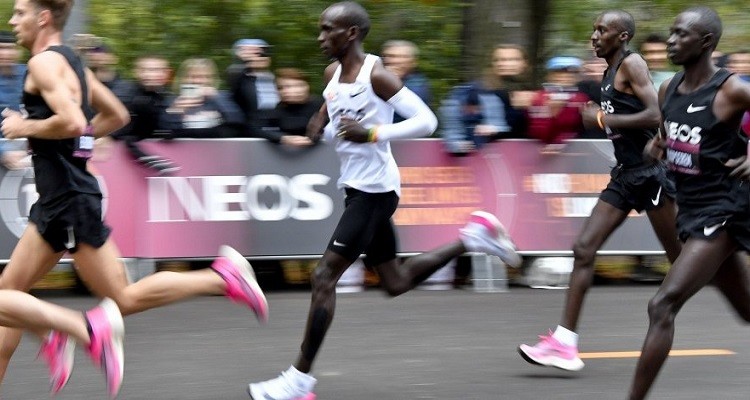
“The NN Mission Marathon in Hamburg will be postponed to April 18. Over the past months we have learned that we need to be flexible and stay positive. With this in mind, I thank everybody involved, keep working hard with positive minds to find a good alternative," posted Kipchoge on Twitter Wednesday.
Kipchoge is using the race as part of preparations ahead of the Tokyo Olympic Games where he is set to defend his Marathon title.
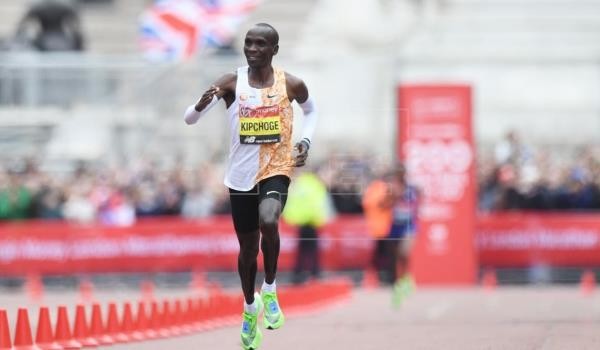
In an earlier interview, he stated that his training has been going on well and is looking forward to run a race that is going to inspire the world at this hard time.
“I want to run a beautiful race to inspire the world which is in huge transition into the bright future after a long break due to the pandemic. It feels good to be back where I started my marathon career, it’s the greatest memory in my life,” he said.
Last week, the team released names of the pacemakers for the race led by Victor Chumo and Philemon Rono.
Other pacers include Philemon Kacheran, Gideon Kipketer, Noah Kipkemboi, Paul Pollock, Victor Kiplangat, Alex Kibarus, Jackson Kiprop, Moses Koech, Sylvester Kiptoo and Bernard Cheptoch.
The traditional annual Hamburg marathon, which was postponed in 2020 due to the pandemic, is scheduled to take place on September 12.
(03/31/2021) ⚡AMPby Bernard Rotich
Tokyo 2020 is set to resume test event with spectators planned for athletics in May
Tokyo 2020 is set to resume test events for the Olympic and Paralympic Games, with organizers hopeful of inviting overseas competitors and domestic spectators to an athletics competition in May.
Sport climbing's test event at the Aomi Urban Sports Park was the last to be held in March last year, prior to the COVID-19 pandemic which ultimately forced the postponement of the Games to 2021.
Organizers plan to hold 18 test events prior to the rescheduled Games, with 17 based in the Japanese capital.

Sapporo will host the marathon test event on May 5.
Several of the test events will be operational, while others will be held under the "Ready, Steady, Tokyo" banner.
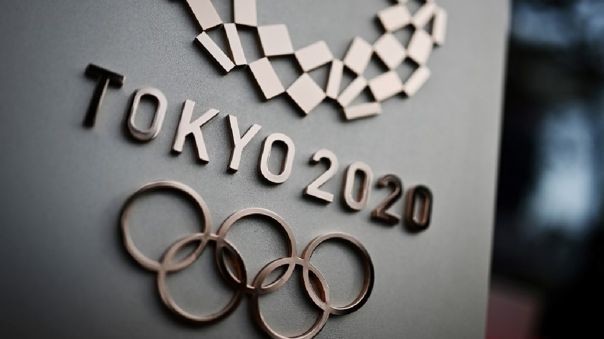
Test events will officially resume on April 3 and 4, with organizers conducting an operational test for wheelchair rugby at the Yoyogi National Stadium.
Water polo, diving, rugby, swimming and cycling test events are also planned to take place in April, with the May schedule including volleyball, artistic swimming, gymnastics, athletics, skateboarding, 3x3 basketball and shooting.
Tokyo 2020 said the Organizing Committee would be in charge of 14 of the test events.
The International Swimming Federation will oversee the artistic swimming, diving and water polo test events, with World Athletics in charge of the marathon event in Sapporo.
Tokyo 2020 Games delivery officer Hidemasa Nakamura suggested the four events run by International Federations could potentially include athletes from overseas, while the attendance of fans may also be possible.
Nakamura confirmed the athletics test event on May 9 will be the only event run by Tokyo 2020 to feature both overseas athletes and local spectators.
The test event will take place less than 12 weeks before the New National Stadium is due to stage athletics at the rearranged Olympics, which are due to open on July 23.
The stadium can have a capacity of 68,089 when used for athletics, with the test event likely to offer information to organizers over the feasibility and potential number of spectators that can be present during the Olympics and Paralympics.
"For athletics and the marathon we are thinking about having spectators and overseas athletes will be invited so we can have comprehensive measures tested," Nakamura said.
"During the athletics test events we will have to collect information so we can make decisions."
Nakamura added that the test events will be smaller and more focused on the operational requirements of the sports.
(03/31/2021) ⚡AMP
by Michael Pavitt
Tokyo 2020 Olympic Games
Fifty-six years after having organized the Olympic Games, the Japanese capital will be hosting a Summer edition for the second time, originally scheduled from July 24 to August 9, 2020, the games were postponed due to coronavirus outbreak, the postponed Tokyo Olympics will be held from July 23 to August 8 in 2021, according to the International Olympic Committee decision. ...
more...Double world indoor 800m champion Collins Kipruto thinks the new Covid-19 measures will negatively affect athletes preparations for international events
Kipruto says the new Covid-19 measures requiring athletes to train individually will negatively affect their preparations for local and international events.
Kipruto said training in a group prepares athletes psychologically and provides them with a hint of what to expect in a competitive setting.
"We usually prefer training together because we can motivate one another and push ourselves to give the best. By training in a group, you are able to gauge your level of fitness and performance vis-a-vis your training partners. You are also able to fine tune your tactics in readiness for the competition," Kipruto said.
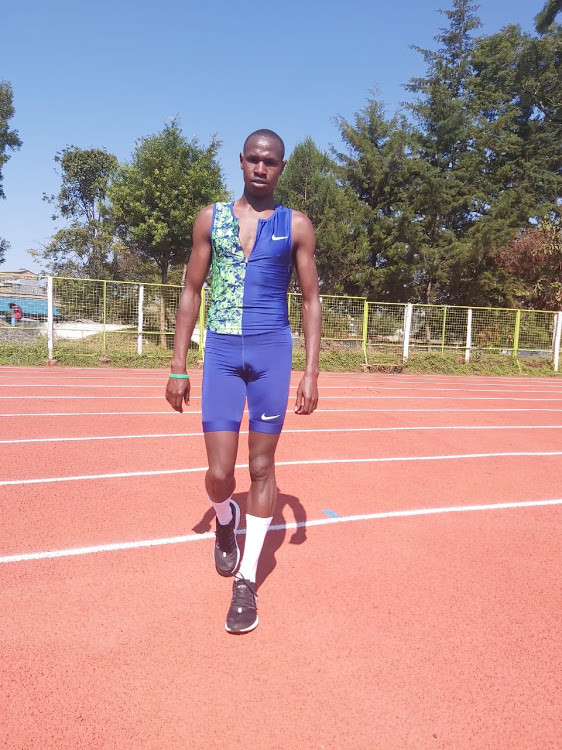
Kipruto, who is currently hard at work in Nyahururu, revealed he has had to adapt his training regime due to the present circumstances.
"The positive thing about the current situation is that the camp has not been closed down so we are able to continue training. There are not many of us in Nyahururu, which makes it easier for us to adhere to the measures. I am in good shape and mentally ready for the upcoming competitions. I hope these new restrictions won't last long so we can get some competition under our belts," he said.
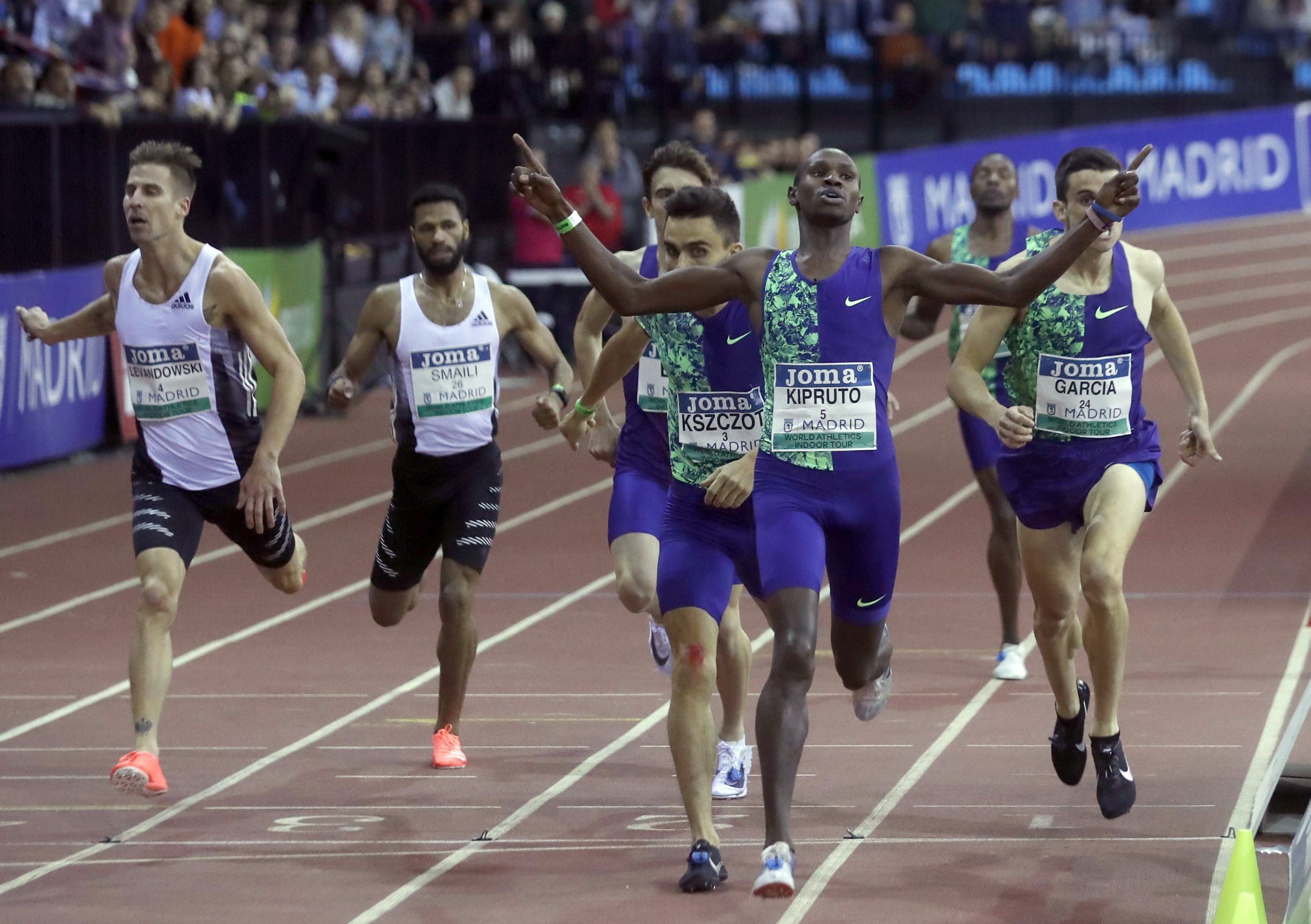
On Sunday, Athletics Kenya postponed all upcoming athletics events in the country and directed all athletes to train individually rather than in groups to maintain physical distancing.
This was after President Uhuru Kenyatta suspended all sports activities countrywide as part of new, tough restrictions to mitigate the third wave of the coronavirus pandemic.
(03/31/2021) ⚡AMPby Omondi Onyatta
Japan gives hope to runners and organizers worldwide, 4704 runners arriving safely home from Nagoya and no covid cases
The Nagoya Women’s Marathon 2021, the largest women’s marathon in the world and a World Athletics Platinum Label road race, was held on Sunday, March 14, 2021 as the first mass participation road race to be held in Japan since the Covid-19 pandemic started. From top elite athletes to general runners, a total of 4,704 women runners participated in the race and had a joy of running on the city streets of Nagoya. Another 4,052 ran the accompanying half marathon.
To prevent the spread and transmission of Covid-19, various measures were taken at all event sites throughout the event period. We established the Covid-19 Control Office with medical professionals, local governments of the City of Nagoya and Prefecture of Aichi, and the Japan Association of Athletics Federations (JAAF) within the Marathon Organizing Committee, and formulated and implemented an infection control plan in accordance with the JAAF’s Guidance on Resumption of Road Racing and advice from medical experts and local government officials. We would like to share some of the key measures as below.
At Race Entry
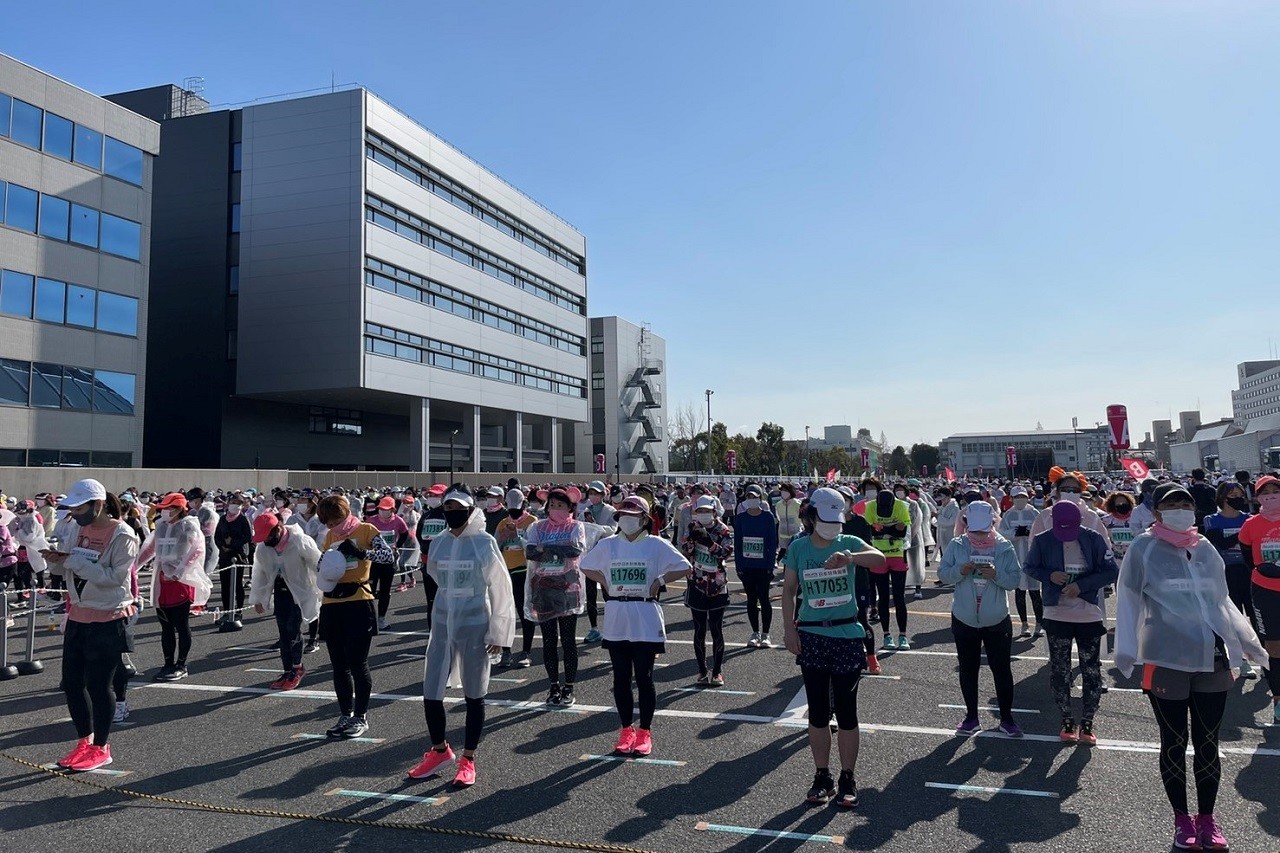
The field was reduced from 22,000 to 11,000 (domestic residents only) at the time of race entry An option was given to all registered participants to switch from in-person racing to virtual racing after a state of emergency was declared by the Japanese government in Aichi Prefecture in January 2021. The state of emergency was lifted on February 28, 2021, and the Nagoya Women's Marathon 2021 was held with the 5,000 participants who chose to run the in-person race. Runners residing outside Japan were accepted at the virtual race due to the international travel restrictions.
Protocols for All
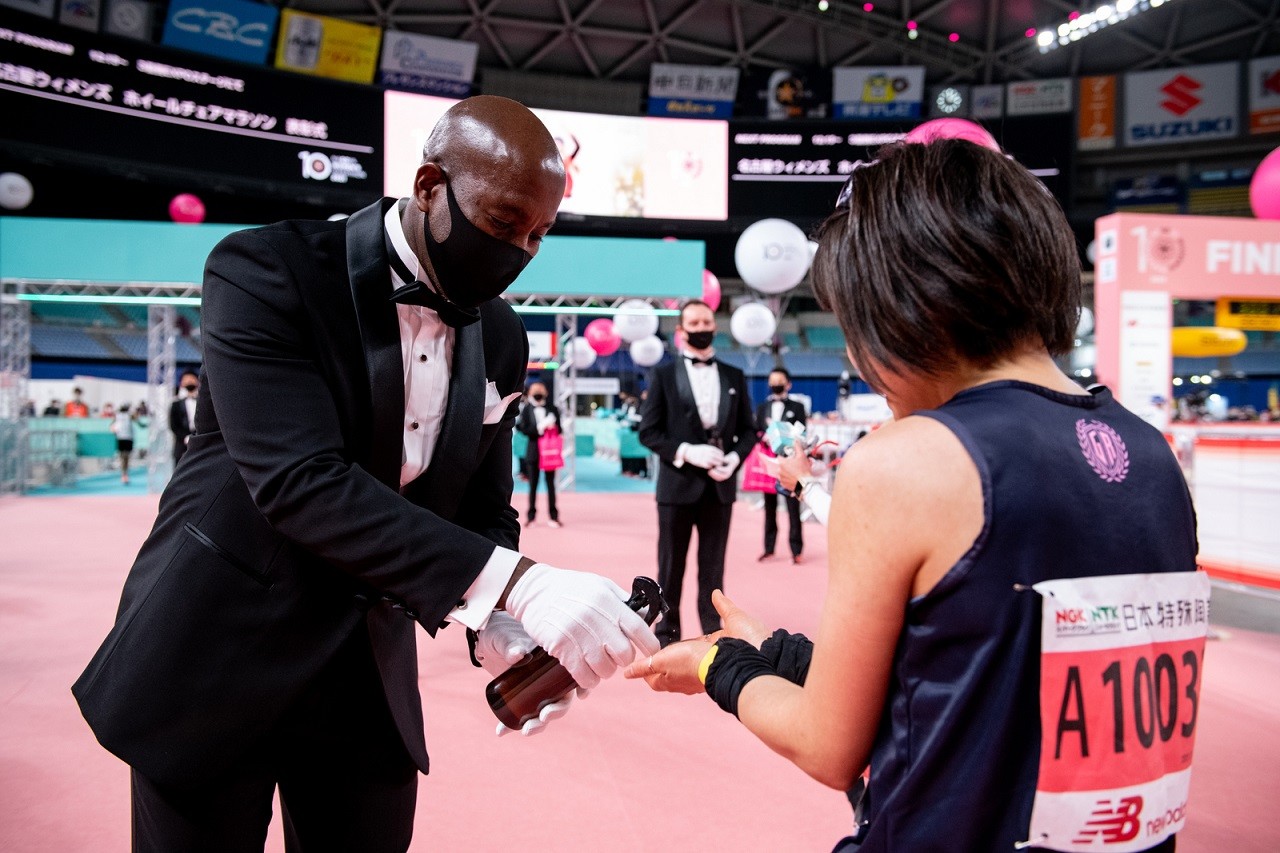
Wear masks at all times (except for runners during competition). Sanitize hands frequently (on arrival, after finish, before and after using the toilet, etc.). Check temperature at home and on arrival (Anyone with a fever of 37.5 degrees Celsius or higher are refused to participate). Monitor, record and submit health condition and body temperature (via a web form) for 7 days prior to race day. Monitor and report any poor health condition or positive Covid case for 14 days after race day.
At Competition
Runners must wear masks before start. Social distancing at the starting blocks (more than 1 m between runners). Gradual start by each starting block. Covered water at water stations to prevent droplets. Individually packaged food at refreshment stations and hand sanitization before taking them. Hand sanitization and face masks distributed after finish. Social distancing at the dressing area and limited use to 15 minutes.
Crisis Management
Establishment of a crisis management plan for potential scenarios. A private emergency vehicle was stationed for transport of suspected Covid-19 patient.
Course Management
Public announcement on TV and newspapers to discourage cheering and spectating along the roadside.
It has been more than two weeks since the race day, but thankfully we have not received any report of infection or suspected case as of March 29. This year’s race was an extremely challenging event to prepare and coordinate for the realization. We have nothing but deep and sincere gratitude for runners for participation, and volunteers, sponsors and all the concerned personnel for their support. We wish your good health and the earliest possible arrival of end to the pandemic.
(03/31/2021) ⚡AMPNagoya Women's Marathon
The Nagoya Women's Marathon named Nagoya International Women's Marathon until the 2010 race, is an annual marathon race for female runners over the classic distance of 42 km and 195 metres, held in Nagoya, Japan in early March every year. It holds IAAF Gold Label road race status. It began in 1980 as an annual 20-kilometre road race held in...
more...How to run up and down hills properly
Whether you’re a runner who chooses to embrace hills or curse them, learning to run them well can make you stronger and more efficient.
Understanding how to tackle hills physically and mentally is a skill that can be improved with time and focus. Downhill and uphill running each have their own set of challenges, but improving your technique can go a long way toward making both a better experience.
DOWNHILL RUNNING
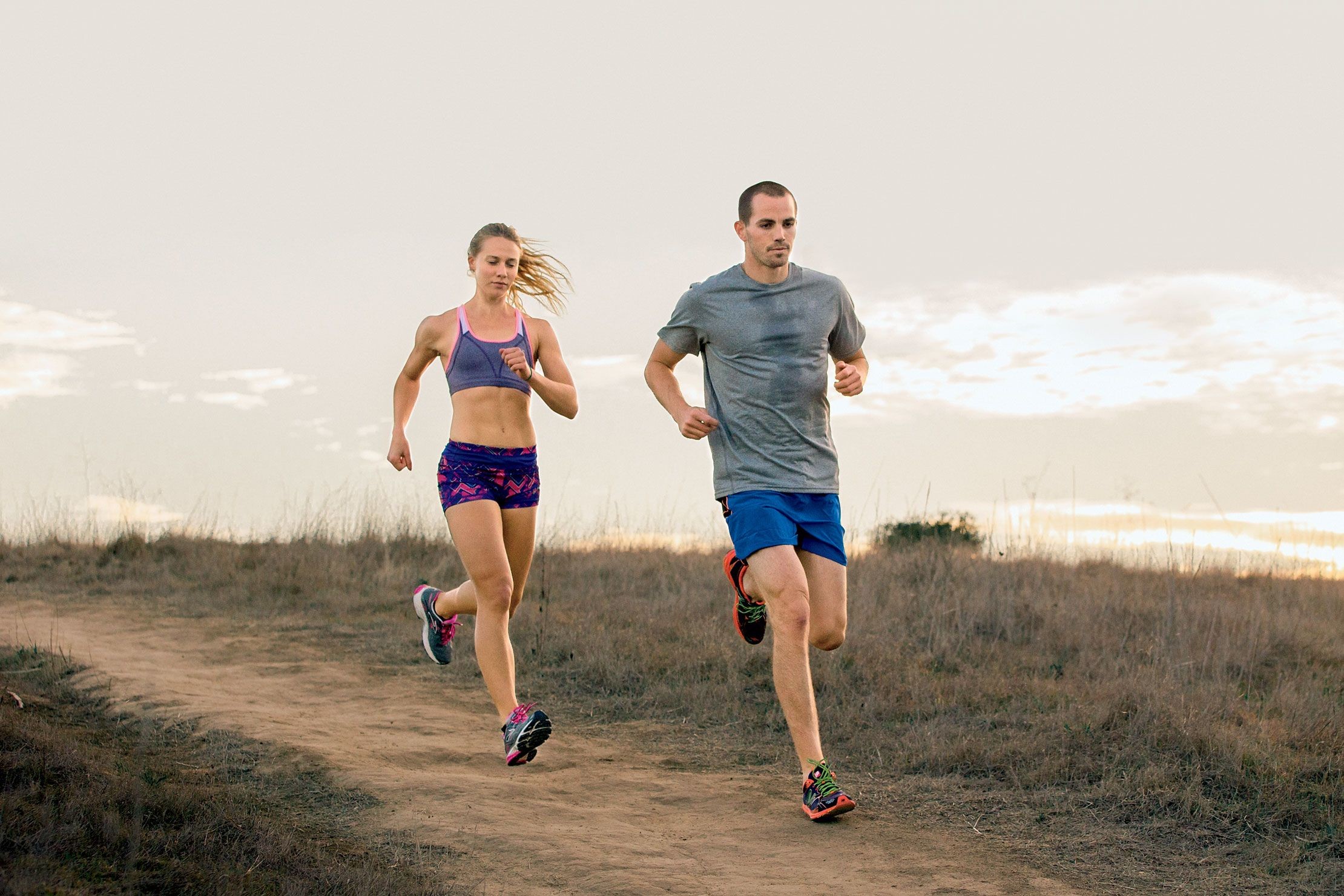
While downhill running may seem the easier option of the two, long or steep descents can be taxing and leave you with a nasty case of DOMS (delayed onset muscle soreness) if you’re not prepared. If you have an upcoming race with a lot of descent, it’s essential to practice running downhill. Focusing on form and turnover and relaxing into the hill helps you improve your downhill running and keeps your quads happier.
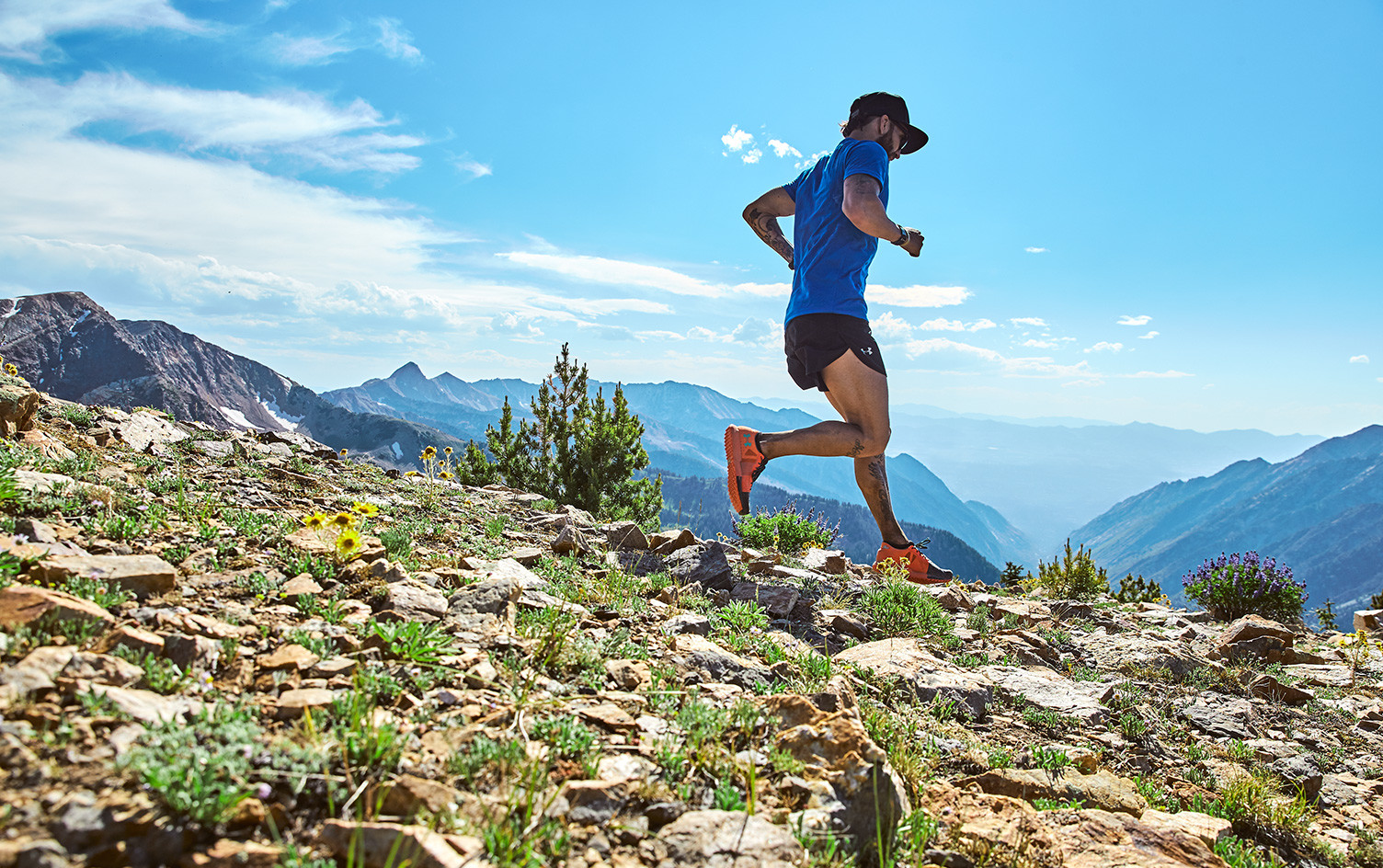
FOCUS ON FORM
When running downhill, it’s essential to let your core do some of the work rather than just your legs. If you’re not already doing core and strength training in addition to your running, now is the time to get started. While it’s tough to actively think about engaging your core while running downhill fast, shifting your gaze helps put your body in a position to make you more efficient.
Think about focusing your gaze further down the hill (at least 6–8 feet) rather than staring downward at your feet. This can be a tough habit to break, especially if you’re on a technical trail, but looking ahead allows your body to stretch up taller and engage the muscles in your core to help support you more effectively.
PRACTICE QUICK TURNOVER
The steeper the hill, the easier it is to forget about form altogether and either bomb or brake down the hill while overstriding and pounding your heels into the ground. Instability and poor form can leave you at risk for excessive soreness and eventually lead to injury. When you’re running downhill, think about keeping your stride short and increasing your cadence. Try to land lightly and keep your feet moving. A mid- to forefoot landing is ideal and happens more naturally as you run tall and actively think about your feet landing underneath you rather than out in front of you.
RELAX AND FLOW
While the idea of “relaxing into the hill” is more of a mental technique than a physical one, this concept can help in both areas. Try to keep your breathing steady and rhythmic, allowing your legs to follow that rhythm. Even if you don’t feel very light on your feet, think about “dancing lightly” down the hill with quick, efficient steps and a relaxed body to make the experience more enjoyable. Once your brain latches onto this image, your body begins to follow!
UPHILL RUNNING
Running uphill is as much of a mental challenge as a physical challenge, but hills make you a stronger runner when including them as a regular part of your training routine.
“STAND TALL”
Runners often feel they should “lean into the hill” as they are running up it. While your body should have a slight forward lean, this cue can encourage runners to lean excessively from the waist which makes your uphill running less efficient. As you run up a hill, continue to think about staying long and tall. Similar to downhill running, keep your eyes focused ahead of you toward the top of the hill. This helps reduce your natural inclination to look downward and hunch over, especially as the hills get steeper.
FOCUS ON THE PUSH-OFF
Good form is just as essential to uphill running, but the techniques vary slightly. Unlike running downhill, you’ll rarely overstride or land hard on your heels. Instead, think about driving your legs back behind you as you run up a hill. You can minimize any wasted side-to-side motion by keeping your arms pumping forward and back, rather than across your body. Use your arms to help drive you forward, but try to keep their swing relaxed as tension can also use excessive energy.
MAINTAIN YOUR EFFORT (NOT YOUR PACE)
This technique is both mental and physical. Trying to maintain an even pace while running up and down long or steep hills will likely be frustrating (or a poor pacing strategy in a race). Running uphill is a great time to focus on effort rather than the numbers on your watch. Maintaining an even effort over the hills on a long route or race allows your paces to balance out naturally and ultimately makes you faster!
(03/30/2021) ⚡AMPby Jason Fitzgerald





